MUSIC FOR ALL
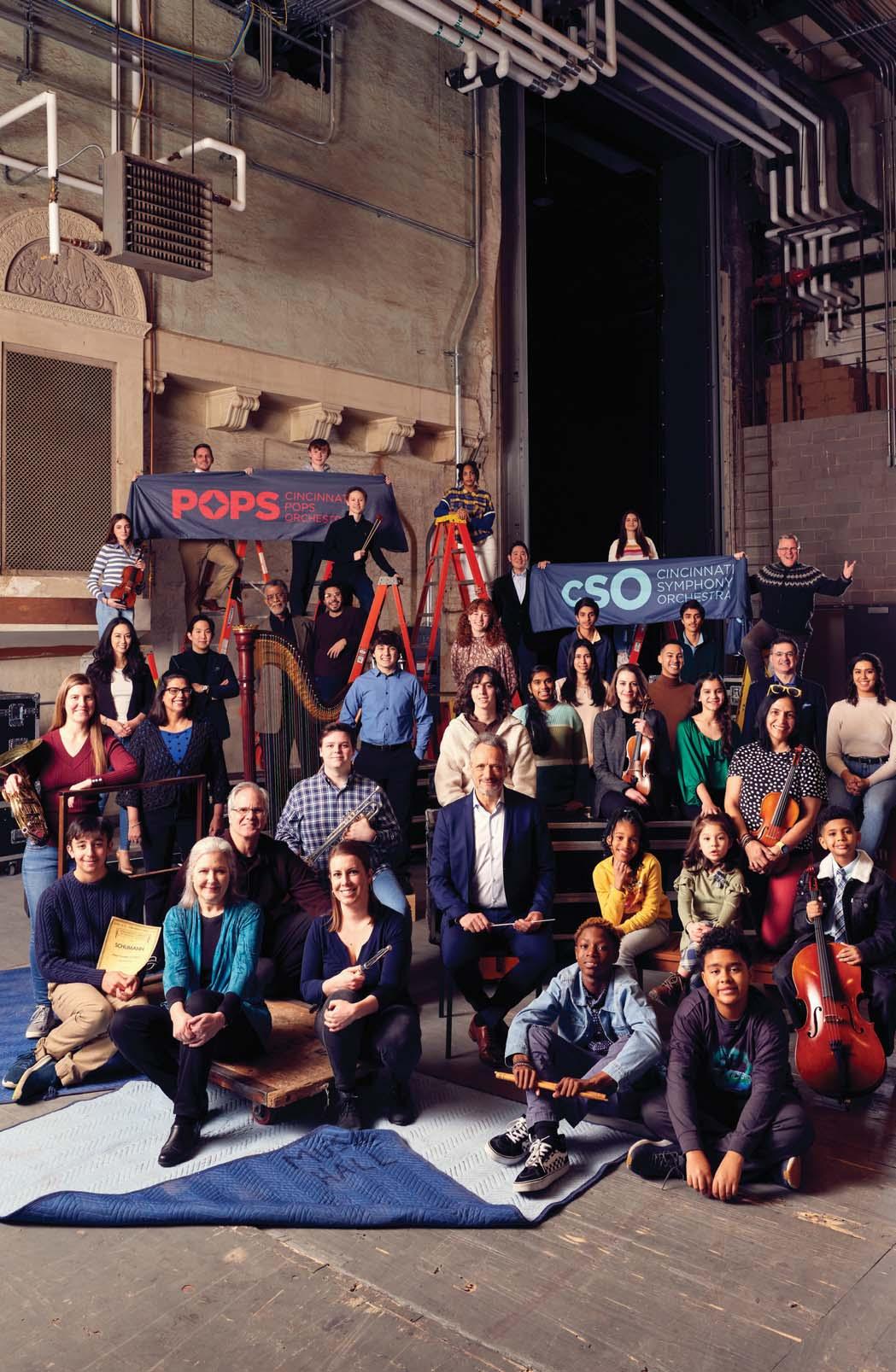
APR/MAY 2023


Oxford proudly supports the Cincinnati Symphony Orchestra. CHICAGO CINCINNATI GRAND RAPIDS INDIANAPOLIS TWIN CITIES 513.246.0800 WWW.OFGLTD.COM/CSO Oxford is independent and unbiased — and always will be. We are committed to providing multi-generational estate planning advice and forward-thinking investment solutions to families and institutions. Oxford is an investment advisor registered with the U.S. Securities and Exchange Commission. Registration does not imply a certain level of skill or training.
Together we’ll celebrate Louis Langrée’s final season as CSO Music Director, featuring bold international collaborations and tributes to special moments from his tenure, plus the music of America as the Pops bring us hits from Broadway, Hollywood and the Great American Songbook.

WELCOME TO THE SEASON TICKETS on sale now! Order by APR 20 for the best savings cincinnatisymphony.org | cincinnatipops.org —
23/24 SEASON
CONTENTS
4 Directors & Advisors
8 Cincinnati Symphony Orchestra “We Believe”
9 Welcome from the President & CEO
10 CSO Feature: Revisiting Old Landmarks and Making New Discoveries
16 Pops Feature: A Homecoming of Music: Ragtime with the Cincinnati Pops
19 Spotlight: Honoring Retiring Orchestra Musicians
23 Spotlight: The Shared Room: Embracing the Classical Roots Community Choir Concert Experience
26 Spotlight: Why We Give, Part II
27 Summer Concerts: Join the CSO and Pops in Neighborhoods Around the City This Summer
28 Orchestra Roster
29 Artistic Leadership: Louis Langrée, John Morris Russell, Matthias Pintscher, Damon Gupton, Samuel Lee and Daniel Wiley
41 Concerts and CSO Program Notes:
Apr. 14: Classical Roots | Apr. 15–16: Pictures at an Exhibition | Apr. 21–22: Mahler Symphony No. 7 |
Apr. 21: CSO Chamber Players | Apr. 23: CSO/CSYO Sideby-Side | Apr. 25: Ben Folds | Apr. 28–30: Ragtime in Concert | May 5–7: Saint-Saëns Organ Symphony |
May 12-13: An American in Paris | May 12: CSO Chamber Players | May 14: CSYO Spring Concerts 89
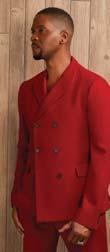
APRIL/ MAY 2023
10 Cincinnati Symphony Orchestra performances in April and May include two world premieres, a Saxophone Concerto for Steven Banks by Billy Childs, and a Piano Concerto to be performed by the composer, Courtney Bryan. Read about these works and the many others to be performed in the coming weeks on pp. 10–15.

16
Cincinnati Pops concerts in April and May reflect a “Homecoming of Music,” with performances by artists with Cincinnati connections, especially for Ragtime in Concert. Also, Ben Folds returns to Music Hall for the first time since his sold-out 2017 performance. Learn more on pp. 16-18.
23
ON THE COVER: Music Director Louis Langrée, Cincinnati Pops
Conductor John Morris Russell, Nouveau Program coach Marion Peraza and Assistant Conductors Samuel Lee and Daniel Wiley, with members of the Cincinnati Symphony Orchestra, Cincinnati Symphony Youth Orchestra, Diversity Fellowship and Nouveau Program. Credit: Claudia Hershner
All contents © 2022–23. Contents cannot be reproduced in any manner, whole or in part, without written permission from the Cincinnati Symphony Orchestra and Cincinnati Pops.
The CSO’s Classical Roots concert, featuring the Classical Roots Community Choir and special guest artist Donald Lawrence, is set for Friday, Apr. 14. Dr. Davia J. Crutchfield’s insights into the Community Choir experience are found on pp. 23–25.
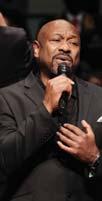

2 | 2022–23 SEASON
32 Guest Artist Biographies
Support 96 Administration
Financial
A proud sponsor of the musical arts





















CINCINNATI SYMPHONY
ORCHESTRA & CINCINNATI POPS
Music Hall, 1241 Elm Street, Cincinnati, OH 45202
Box Office: 513.381.3300 hello@cincinnatisymphony.org
Group Sales: 513.864.0196 groupsales@cincinnatisymphony.org
TTY/TDD: Use TTY/TDD Relay Service 7-1-1
cincinnatisymphony.org cincinnatipops.org
BOARD OF DIRECTORS
Officers
Dianne Rosenberg, Chair
Robert W. McDonald, Immediate Past Chair
Sue McPartlin, Treasurer and Vice-Chair of Finance
Usha C. Vance, Secretary
Timothy Giglio and Gerron L. McKnight, Esq., Vice-Chairs of Volunteerism
Anne E. Mulder, Vice-Chair of Community Engagement
Charla B. Weiss, Vice-Chair of Institutional Advancement
Melanie Healey, Vice-Chair of Leadership Development
Directors
Dorie Akers
Heather Apple
Michael P. Bergan
Kate C. Brown
Ralph P. Brown, DVM
Trish Bryan*
Otto M. Budig, Jr.*
Andria Carter
Melanie M. Chavez
Michael L. Cioffi
Andrea Costa
FANFARE MAGAZINE STAFF:
Managing Editor
Tyler Secor
Senior Editor/Layout
Teri McKibben
Graphic Design
Stephanie Lazorchak
CINCINNATI MAGAZINE: Advertising and Publishing Partners for Fanfare Magazine
Publisher
Ivy Bayer
Production Director & IT Systems Administrator

Vu Luong
Advertising & Marketing Designer
Logan Case
Account Representatives
Laura Bowling, Maggie Wint Goecke, Hilary Linnenberg, Chris Ohmer, Julie Poyer, Joe Hoffecker
Operations Director
Missy Beiting
Business Coordinator
Erica Birkle
Advertising and Business Offices
1818 Race Street, Suite 301
Cincinnati, OH 45202 | 513.421.4300
Subscriptions: 1.800.846.4333 cincinnatimagazine.com
Adrian Cunningham
Gabe Davis
Kelly M. Dehan
Alberto J. Espay, M.D.
Dr. Maria Espinola
Mrs. Charles Fleischmann III*
Lawrence Hamby
Delores Hargrove-Young
Francie S. Hiltz*
Joseph W. Hirschhorn*
Brad Hunkler
Lisa Diane Kelly
Edna Keown
Patrick G. Kirk, M.D.
Florence Koetters
Jonathan Kregor
Peter E. Landgren
John Lanni
Shannon Lawson
Spencer Liles*
Will Lindner
Timothy Maloney
Holly Mazzocca
James P. Minutolo
Laura Mitchell
John A. Moore
Theodore Nelson
Lisa Lennon Norman
Bradford E. Phillips, III
Aik Khai Pung
James B. Reynolds*
Jack Rouse*
Lisa M. Sampson
Patrick Schleker
Digi France Schueler
Valarie Sheppard
Stephanie A. Smith
Albert Smitherman
Kari Ullman
David R. Valz
Randolph L. Wadsworth, Jr.*
Daniel Wachter
*Director Emeritus
BOARD OF DIRECTORS DIVERSITY, EQUITY & INCLUSION (DE&I) COMMITTEE and COMMUNITY ADVISORY COUNCIL
In May 2020 the realities of systemic inequity, injustice and racism in America were once again laid bare by the murder of George Floyd. That summer, the CSO created a 10-point DEI Action Plan to prioritize the Orchestra’s work to better represent and serve the entirety of the Cincinnati community. Action items included the continued amplification of BIPOC artists on stage and in education programs; a review of hiring and compensation practices; organization-wide implicit bias training; increased mentorship opportunities; and the creation of a standing CSO Community Advisory Council (CAC) to strengthen ties to the community. We thank our many partners on the CAC and on our standing DE&I committee who are helping us with this important work.
CSO Board of Directors
DE&I Committee
Charla B. Weiss, Lead
Heather Apple
Ralph Brown
Adrian Cunningham
Maria Espinola
Delores Hargrove-Young
Lisa Kelly
David Kirk*
Gerron McKnight
Lisa Lennon Norman
Jack Rouse
Lisa Sampson
Stephanie Smith
*Community Volunteer
You are welcome to take this copy of Fanfare Magazine home with you as a souvenir of your concert experience. Alternatively, please share it with a friend or leave it with an usher for recycling. Thank you!
Primary Staff Liaison: Harold Brown
Other Staff Members: Tiffany Cooper, Kyle Wynk-Sivashankar
Community Advisory Council
Desire Bennett, Design Impact
Daniel Betts, Cincinnati Recreation Commission
Jackie Taggart Boyd, Cincinnati Convention and Visitors Bureau/CincyUSA
Alexis Kidd, Seven Hills Neighborhood Houses
Christopher Miller, National Underground Railroad Freedom Center
Joele Newman, Peaslee Neighborhood Center
Candra Reeves, Urban League of Greater Southwestern Ohio
Leslie Rich, Ioby
John P. Scott, Community Engagement Partners
Billy Thomas, Cincy Nice
Staff: Tiffany Cooper, Harold Brown
Multicultural Awareness Council
Susan Carlson
Andria Carter
Piper Davis
Dara Fairman
Kori Hill
Alverna Jenkins
Beverley Lamb
Carlos Garcia Leon
Aurelia “Candie” Simmons
Jaime Sharp
Quiera Levy Smith
Daphney Thomas
Alford West
Staff: Tiffany Cooper, Harold Brown
4 | 2022–23 SEASON
STRONGER ARTS FOR A STRONGER REGION
The growth of Cincinnati and its arts is inseparable. Creating a thriving region starts with each of us giving what we can to the arts. Help set the stage for the future of the region we all love.
Give today at artswave.org.




C H A M B E R M U S I C C I N C I N N AT I CHAMBER MUSIC CINCINNATI Coming May 21 & 23, 2023 JUILLIARD STRING QUARTET —The Boston Globe Washington Post 1920 Tennessee Avenue • Cincinnati, OH 45237 Memorial Hall 1225 Elm Street • Cincinnati, Ohio 45202 Felix Mendelssohn Tyson Davis Commissioned by the Kennedy Center, Chamber Music Cincinnati and DaCamera Society of Houston
Chamber Music Cincinnati 94 th Season
Kronos Quartet—50th Anniversary (and final) Tour
“One of the 10 greatest string quartet ensembles of all time.” —BBC Music Magazine
“…a wellspring for hundreds of new music commissions, some iconic pieces of repertoire.” —New York Times
Tuesday, October 10, 2023 • 7:30 p.m.
Ensemble 4.1
“Ensemble 4.1 dazzles…” —Washington Post
Tuesday, October 31, 2023 • 7:30 p.m.
Michelle Cann
“…a pianist of sterling artistry.” —Gramophone
2022 Cincinnati Symphony Orchestra Soloist
Sunday, December 10, 2023 • 4:00 p.m.
Tuesday, December 12, 2023 • 7:30 p.m.
Danish String Quartet
“I’d Rather Hear the Danish String Quartet Than Any Other Foursome…” —New York Magazine
Thursday, February 15, 2024 • 7:30 p.m.
Imani Winds
“Each member is a virtuoso…dazzling ensemble playing.” —Washington Post
Sunday, March 10, 2024 • 4:00 p.m.
Tuesday, March 12, 2024 • 7:30 p.m.
Randall Goosby
“With his secure technique, natural phrasing, gorgeous tone and smart programming, Randall Goosby has everything…” —NPR
2021 Cincinnati Symphony Orchestra Soloist
Sunday, April 7, 2024 • 4:00 p.m.
Tuesday, April 9, 2024 • 7:30 p.m.
Information and “Early Bird” subscription pricing now at cincychamber.org
............................................Memorial Hall
............................................Memorial
Hall
.............................Word
of Deliverance Ministries
..........................................Memorial Hall
..........................................Memorial
Hall
.................................New
Prospect Baptist Church
.............................................Memorial
Hall
.......................................Corinthian Baptist Church
................................................Memorial
Hall
WE BELIEVE
music lives within us all
regardless of who we are or where we come from. We believe that music is a pathway to igniting our passions, discovering what moves us, deepening our curiosity and connecting us to our worldand to each other.
Representation and visibility matter. As we strive to be the most relevant orchestra in America, we begin with these statements that recognize historical problems in our Organization and industry and define our hopes for the future.
We are committed to diversity, equity and inclusion
Our commitment to diversity, equity and inclusion is catalyzed by systemic injustice and inequality perpetuated by individuals and institutions. We believe that reflecting our community and the world around us at every level—on stage, behind-the-scenes, and in neighborhoods throughout the region—is essential to the CSO’s present and future.
We honor the land and Indigenous peoples
We acknowledge that Cincinnati Music Hall occupies land that has been the traditional land of the Hopewell, Adena, Myaamia (Miami), Shawandasse Tula (Shawanwaki/Shawnee), and Wahzhazhe Manzhan (Osage) peoples, who have continuously lived upon this land since time immemorial. We honor past, present and future Indigenous peoples.
—
Posed “behind the scenes” at Music Hall, on the cover, are our 7- to 8-year-old students alongside our professional orchestra members and artistic leaders, a testament that music really is for all.
Dear Friends,
Welcome to the Cincinnati Symphony Orchestra and Cincinnati Pops! We are glad you are here with us.
Posed “behind the scenes” at Music Hall, on the cover, are our 7- to 8-year-old students alongside our professional orchestra members and artistic leaders, a testament that music really is for all. The stories in this issue of Fanfare Magazine continue the vision of the cover by bringing each of our musical ensembles center stage—Nouveau Program, Classical Roots Community Choir, Cincinnati Symphony Youth Orchestras and Cincinnati Symphony Orchestra—and show the full breadth and depth of what we do.
In this issue, we take a look behind the scenes of our April and May concerts, beginning with Classical Roots on April 14. Dr. Davia J. Crutchfield, a cultural researcher as well as the co-creator and co-founder of BL&CK (pronounced “and Black”), an online community that celebrates the diversity of Blackness, unveils the story behind this year’s Classical Roots concert featuring internationally renowned gospel music trailblazer Donald Lawrence. Ken Smith speaks with Louis Langrée, Matthias Pintscher, saxophonist Steven Banks, composer Billy Childs, and pianist and composer Courtney Bryan in the CSO story that highlights the new music we have in store for you. Erica Reid talks to John Morris Russell and Alton Fitzgerald White to uncover the Cincinnati connections in our upcoming Ragtime production.
This issue also features our youth programs and applauds the hundreds of young musicians who participate in the Cincinnati Symphony Youth Orchestra (CSYO) program. This spring, the young players from the CSYO will perform in two concerts, including a concert alongside their professional counterparts in the annual CSYO/CSO Side-by-Side on April 23. It is always an inspiring sight to witness the potential we have on the Music Hall stage. A special congratulations to our two CSYO Concerto Competition winners, cellist Ari Peraza-Webb and violinist Vivian Chang. These young musicians are our future, and we are proud to cultivate that talent and leadership here at the CSO.
Finally, it is always a bittersweet moment at the end of each season when we say farewell to our retiring musicians: Daniel Culnan, Michelle Edgar Dugan, James Lambert, Sylvia Mitchell, Peter Norton, Steven Pride and Robert Sullivan have devoted a combined 246 years of service to our Orchestra. Five of the retirees spoke with Wajeeh Khan to share highlights of their CSO careers and plans for the next chapter. Without a doubt, our Orchestra has been forever changed by each of these musicians who shared their time and talents with us, and we are grateful. We wish them all the best in their future endeavors.
As this season comes to an end, we begin to look to the 2023–24 season—Louis Langrée’s final season as Music Director. Next season will be a season for celebrating Louis’ legacy, the special memories we have created together, and the next chapter of his artistic career. He is a remarkable musician with an extraordinary legacy in Cincinnati, and we invite you to join the celebration next season.

With gratitude, Jonathan Martin


Fanfare Magazine | 9 WELCOME FROM THE PRESIDENT AND CEO
©Roger Mastroianni
Revisiting Old Landmarks and Making New Discoveries
by KEN SMITH
Those who shuttle back and forth from one point to another often find it rewarding to vary the route. For Louis Langrée, who ends his tenure as Cincinnati Symphony Orchestra Music Director next season, the commute between Paris and the United States still yields new discoveries, especially when passing the old landmarks from different directions.
Saint-Saëns’ Symphony No. 3, last performed in Music Hall before the renovation, became a cornerstone of the CSO’s 2017 Asian tour. “We may hear the piece a lot on the radio, but it doesn’t get performed very often in the concert hall,” Langrée laments. Much of the reason, he says, is due to the bulky solo instrument of its subtitle: the organ. The distinctive sonorities bring to mind a church service in the middle of a secular gathering.
“The 19th century was full of composers asking, how is it possible to write a symphony after Beethoven’s Ninth?” he explains. “Berlioz went the narrative route with Symphonie fantastique. Franck and Bruckner went into ritual-like, almost liturgical celebration. Saint-Saëns took the more ambiguous direction of mixing the two. Is his Organ Symphony a Mass or a concert? To be honest, the truly great symphonies blur such distinctions. They all start with their version of a Kyrie, full of anxiety and doubt, and little by little arrive at full light by the end.”

CSO FEATURE
For Louis Langrée… the commute between Paris and the United States still yields new discoveries, especially when passing the old landmarks from different directions.
March 2017 performance led by Music Director Louis Langrée at the Hong Kong Arts Festival as part of the CSO’s 2017 Asian Tour.
Credit: Keith Hiro
“I
So when the Organ Symphony returns to Music Hall May 5–7, the obvious question is what else do you put on the program? “At some point, Saint-Saëns distorts the Dies Irae to the point of caricature, almost like a gargoyle.” Langrée says. The first thing to cross his mind was Symphonie fantastique, which similarly tweaks the same melodic theme. That piece was too long, but, fortunately, Berlioz’s Overture to Les francs-juges (“The Judges of the Secret Court”)—his rarely performed first orchestra piece from a discarded opera—was just the right length.
“You don’t need to know the story,” Langrée says, “you can feel the terror and rage and aggression in the music. You hear the music that later became the Scaffold March in the Symphonie. Berlioz at this age had no technique, so he was forced to invent new ways to say everything. It’s quite weird, and you can either say, ‘Oh, that’s weird…whatever,’ or ‘Oh, that’s weird…how extraordinary!’ because you can already see the seeds of the genius.”
Much of Saint-Saëns’ charm lies in the range of expression, and to accentuate his music’s
delicate side, Langrée veers in the opposite direction with Ravel’s Piano Concerto in G major, performed by soloist Víkingur Ólafsson. “Countering Berlioz, whose musical world is big and savage and cruel, we have the super-sophisticated Ravel, whose concerto is really more like chamber music,” Langrée explains. “Saint-Saëns had dedicated his Organ Symphony to Franz Liszt, the archetypical womanizing priest, so you can see how already there were really two worlds being evoked here. And Ravel himself said that in writing his concerto he was thinking about two composers, Mozart and Saint-Saëns, so it all comes together and makes perfect sense.”
By contrast, no such question of musical pairing entered the mind of CSO Creative Partner Matthias Pintscher, who will be conducting only one piece on his April 21 and 22 program: Mahler’s Symphony No. 7. “I have a very particular vision of how to present Mahler’s Seventh, one that wouldn’t be appropriate with any of his other symphonies,” says Pintscher, who is returning to the piece

Fanfare Magazine | 11
have a very particular vision of how to present Mahler’s Seventh…. There’s an eminent, omnipresent orchestral structure, but it often strives and longs for a more transparent chamber-music aspect.”
—Matthias Pintscher
CSO FEATURE
CSO Creative Partner Matthias Pintscher conducts a rehearsal for CSO Proof: Sun Dogs in October 2022. Credit: Charlie Balcom
for the seventh time in the past decade. “There’s an eminent, omnipresent orchestral structure, but it often strives and longs for a more transparent chamber-music aspect. I believe it really foreshadows not just what happens in his Das Lied von der Erde [“The Song of the Earth”] but also the works of Anton Webern.”
Performing Mahler’s 80-minute symphony as a stand-alone piece was not Pintscher’s initial impulse. Rather, that decision came after his search for a companion piece yielded no curtain-raisers that seemed suitable in proportion. “It’s actually become my dream to commission a composer to write a third Nachtmusik [“Night Music”] that relates to Mahler’s music and insert it somewhere in the Seventh Symphony,” he says. “Is that almost sacrilege? Maybe, but since we’re all talking these days about reinventing the concert format, maybe not.”
and French music influenced by Americans,” he says. His “Frenchman in America” portion opens with Darius Milhaud’s La création du monde (“The Creation of the World”), which Langrée calls “the first jazz homage” in the concert world.
The main event of the evening is the world premiere of Courtney Bryan’s Piano Concerto, House of Pianos, with the composer herself at the keyboard.
The main event of the evening is the world premiere of Courtney Bryan’s Piano Concerto, House of Pianos, with the composer herself at the keyboard. Bryan, a jazz pianist and composer whose music draws heavily on jazz and gospel traditions, grew up in New Orleans, where her earliest musical memories came from the church.

To bring the current season to a close, Langrée has fashioned a program for May 12 and 13 that could be named not just for one of its works—An American in Paris—but also its inverse. “I wanted to finish the season with both American music
“My church was Saint Luke’s Episcopal,” she recalls, “an Anglican church where the people were mostly Caribbean and some West African. And this cultural mix was reflected in the music. Along with really traditional English hymns and Gregorian chant, we’d have spirituals and occasionally some African drumming and different Caribbean rhythms. And I got very used to this.”
Studying piano from age five, Bryan found that her teachers not only indulged her penchant for “making things up” at the keyboard, but also
12 | 2022–23 SEASON CSO FEATURE
Composer and pianist Courtney Bryan. Credit: Taylor Hunter
taught her how to write them down. “My teacher also told me to start using the word ‘compose,’ which meant that, even though it was fun, it was something to take seriously.”
Bryan’s sense of musical collaboration grew steadily, from her high school days at the New Orleans Center for the Creative Arts, where she first started writing music for other instruments than the piano, to her undergraduate years at Oberlin, where she had access to dancers and a much broader range of collaborative artists. She furthered her music education at Rutgers and Columbia universities, where her advisor was the composer and trombonist George Lewis.
Bryan’s efforts at performing and writing music for others, after years of following roughly parallel tracks, finally converged again on a bigger scale. Finding herself in separate discussions with the CSO and the Los Angeles Philharmonic, Bryan negotiated a cocommission for a piano concerto with a chambersized orchestration for Los Angeles and a full orchestration for Cincinnati.
With a loose deadline and plenty of time to contemplate the commission during the pandemic lockdown, Bryan decided to turn the piece into a tribute to the pianists who shaped her musical life, starting with Scott Joplin and Frederick Chopin and continuing through stride players like James P. Johnson, Fats Waller and Jelly Roll Morton, whose music she played less frequently. On the classical side there was Sergei Rachmaninoff, Maurice Ravel and Wolfgang Amadeus Mozart, who offered examples of a basic concerto structure.
“So, on the classical front, my influences range from Mozart up to the early 20th century; on the soloist front, from the late 19th century, like Joplin, to the 21st, like Vijay Iyer,” she says. “When the time came to create, I was able to take all that stuff I packed away—different styles, different time periods—and structure the piece in different
movements. It was fun to create this dream space where Mary Lou Williams and Bud Powell and Cecil Taylor would just meet and hang out.”
For his part, Langrée has been looking at the two remaining works on the program, Gershwin’s An American in Paris and Duke Ellington’s Night Creature, with fresh eyes. In the case of Gershwin, Langrée discusses the piece in almost periodinstrument terms, starting with the composer’s original orchestration and recordings of the composer’s own performance style.
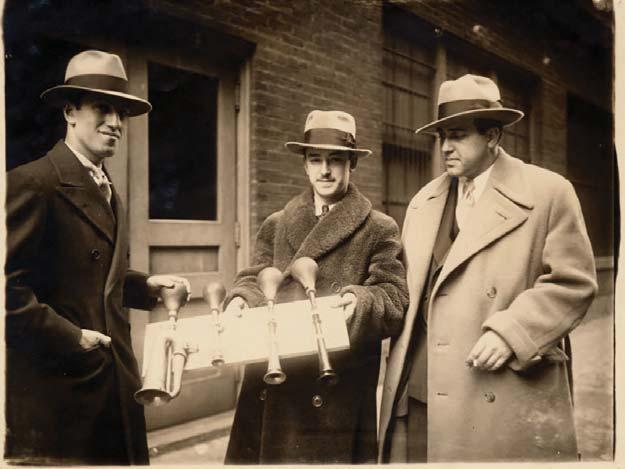
“Like many people, I first heard this piece in Leonard Bernstein’s recording, where swing was really crucial to the performance,” says Langrée. “But when we first played the original version, we realized that swing didn’t exist at that time. Listening to Gershwin’s performance, it’s more like ragtime. So as seductive as Bernstein’s version is—and I still love it—I think we should respect what Gershwin actually wrote.”
With Ellington, too, he takes a similarly counterintuitive approach. “Duke Ellington was not just a composer, he was a brilliant tone-poet,” Langrée explains. “Night Creature is incredibly sophisticated music, but when I conducted it with the CSO, the musicians played it in a very pops way, with lots of brassy sonorities. I find this music very poetic, shimmering, mysterious. This time I want to play it like we are painting a wall, putting on a second coat to reinforce the color.”
Fanfare Magazine | 13 CSO FEATURE
George Gershwin (left); James Rosenberg, percussionist for Cincinnati Symphony (center); and tenor Richard Crooks (right), pose with taxi horns from An American in Paris on February 28, 1929. Photo courtesy of the Ira & Leonore Gershwin Trusts.
May 19-27 • Music Hall
Featuring:















































Dett’s The Ordering of Moses Mozart’s Mahler’s Symphony of a Thousand Bach’s Magnificat



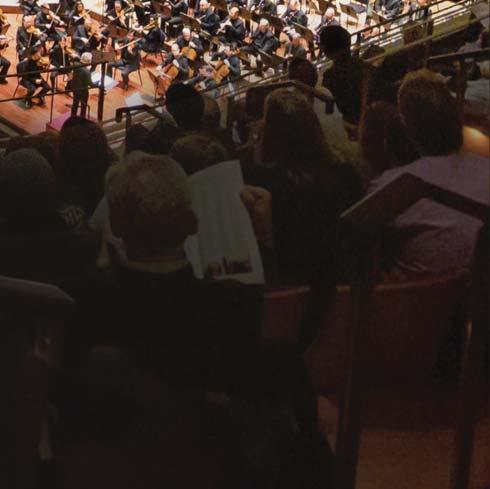


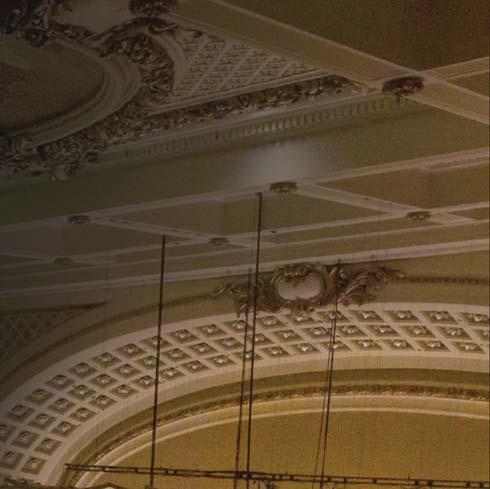
And the following world premieres:


James Lee III’s Breaths ofUniversal Longing


James MacMillan’s Timotheus, Bacchus and Cecilia














Julia Adolphe
+ More



















A SEASON
THE MAKING 150th Anniversary Season
150 YEARS IN
mayfestival.com • 513.381.3300
Childs,
inspiration
by KEN SMITH
Forget for a moment that the saxophone was invented in the mid-1850s for the symphony orchestra, or that Berlioz included the instrument in his Treatise on Orchestration (and more importantly, in several of his scores). Whenever saxophonist Steven Banks appears on the concert stage, audiences still often feel a sense of displacement. “I could be up there playing Bach and people will still think it’s jazz just because I’m holding a saxophone,” he says. “Some people have no other frame of reference.” Although he did minor in jazz studies as an undergraduate, Banks had already been introduced to the instrument’s classical potential as a high school junior at the North Carolina School for the Arts, where he studied with Taimur Sullivan of the PRISM Quartet. “I love the spontaneity of jazz, but I also love being able to create that spontaneity through careful planning,” he says with a laugh.
A case in point is Banks’ debut commissioning project, initiated
by Young Concert Artists (YCA) shortly after he won the YCA auditions in 2019. “Saxophonists do have a wide range of repertoire, but it’s mostly stuff people don’t know, by composers people don’t play,” he says. “To have any relevance, you need to commission new works.”
Banks tapped Billy Childs, who first came to prominence as a jazz pianist with Freddie Hubbard in the late 1970s. Childs, though, had studied composition at USC with Robert Linn, a student of Milhaud, putting him well within the European classical tradition. Banks’ introduction to Childs’ music, in fact, had been a recording of his string quartets. “I felt a real synergy between Billy’s career and the saxophone, both

starting in the classical world but getting known through jazz,” he says.
“I’ve written extensively for saxophone in smallgroup settings but never an extended piece,” says Childs, who agreed to the collaboration after seeing Banks’ YouTube videos and TED Talk.
“For a Black saxophonist to commission a Black composer for a concerto is pretty unusual.”


That also helped dictate the subject matter. “I didn’t want to direct Billy too much because, as a composer myself, I know the biggest source of writer’s block is having to write something specific,” says Banks. “But we started with the idea that poetry could inspire each movement.”
“In my mind, Ravel’s Gaspard de la nuit is one of the best things ever written, with three poems, each setting the stage for a movement,” Childs adds. “Then I started thinking about Samuel Barber’s First Symphony, how he interweaves many motives into a seamless whole.”
Childs’ Concerto for Saxophone and Orchestra, which Ramón Tebar conducts with the CSO on April 15 and 16, rather splits the difference, fusing three diverse poetic voices—Nayyirah Waheed’s “Africa’s Lament,” Claude McKay’s “If We Must Die”and Maya Angelou’s “And Still I Rise”—into a storyline recounting the Black experience in America, from the slave trade through the civil rights movement.
Banks will be touring with Childs’ concerto for another two years, for performances with the work’s 10 commissioning partners. “I want to cement the saxophone’s classical future with music written by the composers at the center of today’s classical music,” he says. “But because Billy is so well known as a jazz figure, a lot of people from that world might come into the concert hall and have their eyes opened.”
Fanfare Magazine | 15
CSO FEATURE SIDEBAR
Banks bring the saxophone to center stage, with a dose of poetic
Left: Dr. Maya Angelou with Music Director Louis Langrée after the November 2013 performance of Aaron Copland’s Lincoln Portait (Cred. Mark Lyons).
Above: Composer Billy Childs (cred. Raj Naik) and saxophonist Steven Banks (cred. Chris Lee)
A Homecoming of Music: Ragtime with the Cincinnati Pops
by ERICA REID
April 28–30, the Cincinnati Pops unveils an incredible symphonic concert version of Broadway’s Ragtime, which took home 1998 Tony Awards for Best Book of a Musical and Best Original Score. Based on E. L. Doctorow’s 1975 novel of the same name, Ragtime follows three American stories— those of Eastern European immigrants, Harlem’s African American community, and upper-class white families of New Rochelle—that collide and converge to tell a complex tale of turn-of-the-century America.
“As these stories grow, they intersect, and we see all of the tragedy and triumph,” says Pops Conductor John Morris Russell. “[Ragtime] is looking into the 20th century and all of the social challenges that we have in the United States, as well as the opportunities, and it uses the music of ragtime to underscore the whole thing.” He adds, “It is a paean to the American mosaic.”
As much as Ragtime is an expansive story of America, the Cincinnati Pops’ production is a tribute to the Queen City as well. “It is a homecoming of talent, of music,” says Russell. “This is as much of a celebration of the form of musical theater as it is a celebration of Cincinnati.” Russell is referring in part to the casting, which is replete with connections to Cincinnati. “The fact is that all of our leads are major Broadway players,

“This [Ragtime performance] is as much of a celebration of the form of musical theater as it is a celebration of Cincinnati.”
—John Morris Russell
Cincinnati Pops Conductor John Morris Russell leading the Pops in JMR’s Greatest Hits, April 2022. Credit: JP Leong
16 | 2022–23 SEASON
and they’re all coming back home,” he says. University of Cincinnati College-Conservatory of Music (CCM) graduate Nikki Renée Daniels (Company, The Book of Mormon, the Chicago company of Hamilton, and more) plays Sarah, the tragic love interest of Coalhouse Walker Jr. And Ashley Brown (Mary Poppins), who plays Mother, attended CCM as well. Opposite Brown as Father is Cincinnati native and former School for Creative and Performing Arts student Ron Bohmer (The Scarlet Pimpernel, Les Misérables, Fiddler on the Roof, and more). Current CCM students will perform the many supporting and chorus roles throughout the production. In fact, Ragtime composer Stephen Flaherty is himself a CCM alumnus!
And then there is Alton Fitzgerald White, whom Russell calls “the consummate Cincinnati success story,” performing the dual roles of Ragtime protagonist Coalhouse Walker Jr. and director of this robust production. White was born and raised in Walnut Hills, attended Douglass Elementary and Walter Peoples Junior High in Hyde Park (“which changed my life,” says White), and eventually attended the School for Creative and Performing Arts—by the skin of his teeth, he says, after waiting until the last possible minute to pluck up the courage to audition. White recalls requesting an audition on his final day of junior high and his mother dropping him off for a specially arranged tryout. “She said, ‘This is your dream. If this is what you want, you go make it happen,’” White remembers. “She dropped me off, and I made it happen.”
From there, White’s trajectory is the stuff of legends. He studied musical theater at CCM until a performance at Cincinnati’s Kings Island amusement park landed him in a USO tour. He booked a role in the original company of Miss Saigon, understudying his hero Hinton Battle and eventually taking over the role once Battle moved on. White continued through the rock musical The Who’s Tommy and the original London company of Smokey Joe’s Cafe, after which he took over for Brian Stokes Mitchell as Coalhouse Walker Jr. in Ragtime. Following another handful of touring shows and opportunities in Las Vegas, he won the role he would become best known for: Mufasa in Broadway’s The Lion King, where he roared through a record-setting 4,308 performances.
Despite this staggering career, White has never forgotten where he came from, and some of his fondest memories are homecoming moments. “I’ve had the wonderful blessing of performing all over the world, but when I came through Cincinnati with The Lion King, it was like every childhood dream,” he says. “I mean, there’s no place like home. There’s just nothing like it.”
The Cincinnati Pops’ concert production of Ragtime will also be White’s directorial debut. When asked how he will approach directing the many moving parts of Ragtime, White said he will keep the focus on the rich material provided by the musical. “I’m going to say to [the cast], ‘We know this material is magnificent. We know that you are a magnificent talent. Tell the story.’” His goal is to work with the production team and cast of “phenomenal performers” to create as simple and as clear a story as possible, and let the magic of Ragtime—which includes the iconic song “Wheels of a Dream”—do the rest.
With the Pops, “simple and clear” never means “without spectacle.” For instance, this production involves three choruses, which represent Ragtime’s Black, white and European immigrant communities. (Lexington’s acclaimed American Spiritual Ensemble, directed by Dr. Everett McCorvey, takes the stage as the African American chorus.) “For our Holiday Pops concerts, we developed this new riser system for the chorus, which puts them way above the orchestra,” explains Russell, adding that simple costumes and intentional lighting will also be used to shift the

Fanfare Magazine | 17 POPS FEATURE: Homecoming
Alton Fitzgerald White performing with conductor John Morris Russell and the Cincinnati Symphony Orchestra for the 2022 Classical Roots program. Credit: JP Leong
focus between the various stories. “What we want to do is put the focus on the music,” he says.
It seems even the music is having a homecoming during Ragtime. In Russell’s words, “The early form of ragtime was being played in Music Hall in the Ballroom, and also in Mechanical Hall, when it was turned into this place called ‘Dance Land’ at the turn of the century.” He continues, “The same music and the same stories that we’re listening to in Ragtime are the same stories that were being played out on the floor in Music Hall.” He laughs. “It is so ridiculously relevant. The more things change, the more they stay the same.”

When asked how he would like audiences to feel after seeing Ragtime, White responds, “I want them to be proud to be Americans.” He adds, “I want the audience to see the bounty that already exists in this country, to be reminded of it.” He also says that certain shows, such as The Lion King and Ragtime, simply must be experienced live. “It’s a transforming experience that you didn’t know you needed until you got it. And you must have it.”
Just before Ragtime opens, Cincinnati Pops audiences will enjoy a one-night-only opportunity to experience Ben Folds in concert (April 25), for the first time since his sold-out performance in
2017. Known for his clever, unexpected lyrics and the careful craftsmanship of his music, Ben Folds is an iconic musician of the American soundscape. He is also a musician with a great respect for the power of the orchestra. “When it comes to choosing the most obvious symbol of civilization, Ben Folds ranks the symphony orchestra above all else,” says The Cincinnati Enquirer in an interview with Folds, which also quotes him as saying, “It took 400 years for us to get to where we are in the symphony orchestra. It’s an incredible type of ensemble. Even if you’re a hiphop act, what you learn from that kind of orchestration, coloration and production is invaluable. It should stick around.”

18 | 2022–23 SEASON
POPS FEATURE: Homecoming
Music Hall with Dance Land sign on North Hall, c. 1917–1927. Courtesy of the Kenton County Public Library and Friends of Music Hall
Ben Folds returns to the Music Hall stage for the first time since his sold-out performance in 2017.
Honoring Retiring Orchestra Musicians
by WAJEEH KHAN
As the 2022–23 season comes to a close, the Cincinnati Symphony Orchestra congratulates and honors seven musicians on their retirements—violinists Michelle Edgar Dugan and Sylvia Mitchell, cellist Daniel Culnan, bassist James Lambert, trumpeters Robert Sullivan and Steven Pride, and bass trombonist Peter Norton. Together, they have served within the Orchestra for a combined 246 years, performing in countless concerts, tours and recordings. Five of these soon-to-be retirees offered memories of their time with the Orchestra and discussed their plans for the next chapter.
Daniel Culnan Associate Principal Cello
Ona Hixson Dater Chair
Since joining the CSO in 1982 (coincidentally winning his audition on the same day as Michelle Dugan), cellist Dan Culnan has had an extensive musical career. A section cellist for the first ten years of his CSO career, Dan earned the role of Associate Principal Cellist in 1992, a position that he has held ever since.
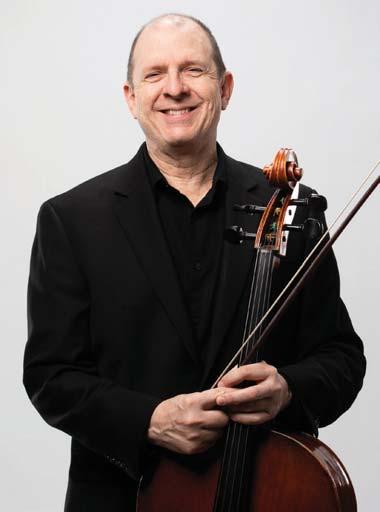
Some of his favorite career highlights include the time when he was a piano soloist for the CSO’s “Carnival of the Animals” concert, being able to take his family on tour with him when the CSO toured Japan in 1990 and, most notably, meeting his wife, Rebecca (the CSO’s long-time Associate Concertmaster, who retired in 2016–17), the same year that he joined the CSO.
Dan looks forward to all of the new opportunities that retirement will provide, which include being able to play more tennis, create pottery and play the piano, which is an instrument that has always been second nature to Dan. Most importantly, though, Dan is ecstatic to spend more time in Chicago with his family and his new grandson.
What Dan appreciates the most about his time with the CSO are the numerous meaningful relationships he has made. “Looking back, I’ve been really lucky to have so many talented people to learn from, admire and know,” reflected Dan. “I’ll especially remember the lessons I learned from the great CSO principal cellists Peter Wiley, John Sharp, Desmond Hoebig, Eric Kim and Ilya Finkelshteyn. It’s truly been an honor and privilege to have learned and grown so much from those around me, and to have performed with them to bring such great music to the community.”
Fanfare Magazine | 19
SPOTLIGHT
Daniel Culnan, Associate Principal Cello, Ona Hixson Dater Chair
Michelle Edgar Dugan Violin
Donald and Margaret Robinson Chair
Michelle Dugan joined the CSO in June of 1982, after having played with the Kansas City Philharmonic and Denver Symphony. Michelle’s 41-year career with the CSO started in the Violin II section. Her most fond memory was of her first promotion audition in 1983. Michelle was convinced that she totally messed up the initial audition; therefore, she proceeded to have a few drinks, only to be recalled to reaudition later that day. The result? She was promoted to the Violin I section and has served in that section in the sixth chair for 23 years. Needless to say, it was a successful audition.

In retirement she plans to travel with her husband and take up other artistic pursuits. “I will miss the unique camaraderie of playing in a symphony. The orchestra breathes as an organism, pulsing and breathing together. I can’t imagine any substitute. I have been in professional orchestras since I was 15. It will be fun to learn new things.”
James Lambert Associate Principal Bass
Thomas Vanden Eynden Chair
Initially playing as a substitute during the 1983–84 season, longtime bassist James Lambert officially joined the CSO during the May Festival of 1987, playing Handel’s Messiah under James Conlon. For James Lambert, the opportunity to join the CSO was especially meaningful, as he had been quite familiar with the Orchestra from attending numerous concerts as a student at the University of Cincinnati College-Conservatory of Music.

Throughout his vast career, James has enjoyed a wide variety of successes and meaningful moments. Some of his favorite performances as a member of the CSO include the series of Wagner operas with Jesús López Cobos, the Nielsen symphonies with Paavo Järvi, the Pelléas series with Louis Langrée, and a very special Brahms Second Symphony with Max Rudolf. Notably, James also soloed with the CSO in 1997, playing Johann Baptist Vanhal’s Concerto for Double Bass and Orchestra.
“My wife and I plan on remaining in Cincinnati, taking advantage of what our adopted hometown has to offer,” said James. “I hope to continue playing, but on a more reduced schedule, for as long as I am able. There are also so many books to read, movies to watch, dogs to walk, and still, many things to learn. I can assure you that I won’t be bored!”
Although James has mixed feelings about retiring, since playing double bass in an orchestra is all he has ever really wanted to do, James is still extremely grateful for the time he has spent with the CSO. “It will be hard to leave the musical and social environment of the CSO, but
20 | 2022–23 SEASON SPOTLIGHT:
Retiring Musicians
Above: Michelle Edgar Dugan, violin, Donald and Margaret Robinson Chair. James Lambert, Associate Principal Bass, Thomas Vanden Eynden Chair.
I will still get to experience it from the other side,” reflected James. “I will really miss that moment in the concert when the downbeat is given and we set off on a journey through some great music—and I will miss performing with my fantastic colleagues, who have been a source of continual inspiration to me.”
Steven Pride Trumpet Otto M. Budig Family Foundation Chair
Having joined the CSO in 1980, longstanding second trumpeter Steve Pride has enjoyed a vast and diverse career. On top of performing countless concerts and multiple tours with the Orchestra, Steve has also played on more than 150 CSO recordings with maestros Michael Gielen, Jesús López Cobos, Paavo Järvi, Louis Langrée, Erich Kunzel and John Morris Russell.


For Steve, his time with the CSO has truly come full circle. “My first concert after winning my audition was Mahler’s Second Symphony with Maestro Michael Gielen, during which I played the off-stage trumpet solo,” recalls Steve. “Fast-forward to this season, we’re playing the same piece, and my son, Alex, is playing the same trumpet solo—on the exact same part of the stage where I played all those years ago. For me, that was a perfect bookend to my time here. With it being my final season and probably the last time I’ll ever play that piece, getting to witness my son play the same solo I did all those years ago was truly special.”
In his next chapter, Steve is excited to dedicate more time to his hobbies, which include fishing, hiking, running, barbecuing and practically anything else related to the outdoors. Steve is also very much looking forward to traveling throughout the U.S. and to Europe again with his wife, with Germany being at the top of his list.
“The people are what I will miss the most,” said Steve. “I’ve made so many friends during my time with the Orchestra, and I’ve had too many notable moments to count. The world’s greatest music was written for the symphony orchestra, and I will really miss being able to play it with such wonderful people.”
Robert Sullivan
Principal Trumpet Rawson Chair
Trumpeter Robert Sullivan first joined the CSO in the fall of 2008 under Music Director Paavo Järvi. After an event-filled five years, Robert departed the CSO in 2013 to teach full time at Northwestern University. Although Robert greatly enjoyed his time there, fate had other plans.
“While I was at Northwestern, the CSO principal trumpet chair opened again,” said Robert. “I missed the Orchestra so much that, after five years away, I re-auditioned and was fortunate to be offered the position again.
Fanfare Magazine | 21
SPOTLIGHT: Retiring Musicians
Above: Steven Pride, trumpet, Otto M. Budig Family Foundation Chair. Robert Sullivan, Principal Trumpet, Rawson Chair.
I always thought it was a bit ironic that I served on the Music Director search committee that led to Louis Langrée’s appointment, and years later he was the Music Director who hired me!”
Some of Robert’s favorite moments as a member of the CSO include his first touring concert in Tokyo, his first performances of the principal trumpet parts of Mahler’s 3rd and 5th symphonies, Stravinsky’s Petrushka, and Strauss’s Alpine Symphony, and Louis Langrée’s performance of Brahms’ Second Symphony with the CSO prior to his appointment as Music Director.

For Robert, retirement is more of a transition period. He isn’t fully retiring just yet; in fact, Robert has just begun his first year as Professor of Trumpet at his alma mater, the University of Michigan. Coincidentally, Robert will be teaching in the same room where he once had his own lessons with his teacher and mentor Armando Ghitalla. When he isn’t teaching, though, Robert plans to spend the majority of his downtime on the beaches and golf courses of Hilton Head Island, where he plans to enjoy his time with his six children and their families—which includes three grandchildren.
“I’ll really miss my colleagues,” lamented Robert. “There is nothing like being one player among 100 all working together for the same goal of communicating great music to an audience. The CSO has an incredibly committed team both on and off the stage, and it’s always fun to come to work. I’ll continue to play after I retire from the Orchestra, but I’ll miss my friends at Music Hall.”
Sylvia Mitchell
Violin
Joann & Paul Ward Chair
Sylvia joined the Orchestra in 1983. The CSO is grateful to Sylvia for her 40 years of service.

Peter Norton
Bass Trombone
The CSO is grateful to Peter for his 34 years of service.
22 | 2022–23 SEASON
SPOTLIGHT: Retiring Musicians
Above: Sylvia Mitchell, violin, Joann & Paul Ward Chair. Peter Norton, bass trombone.
The Shared Room: Embracing the Classical Roots Community Choir Concert Experience

 by DAVIA J. CRUTCHFIELD, Ph.D.
by DAVIA J. CRUTCHFIELD, Ph.D.
The Classical Roots Community Choir remains a staple of Cincinnati’s arts and educational experiences. Through carefully curated programming, each year’s concert embarks on collaborative expressions of Black cultural music and pays tribute to the historical contributions of Black artists and composers. Similarly, this year’s presentation explores traditional and contemporary expressions of gospel music, honoring genre icon Donald Lawrence, at its center. Additionally, this year’s presentation notes the versatility of gospel music by including the contributions of opera maestro George Shirley, composer Rosephanye Powell, and the contemporary spiritual expressions of Adolphus Hailstork.
At the helm of Black cultural influences and artistic contributions is the importance of Black communal respect and appreciation. This year, the Classical Roots Community Choir demonstrates their personal and professional commitment to this initiative in their dedication to creating a harmonious experience set to transcend the walls of Music Hall. The objective is clear: in order to ensure that the expansion of art and the inclusivity of artist contributions continue
Donald Lawrence
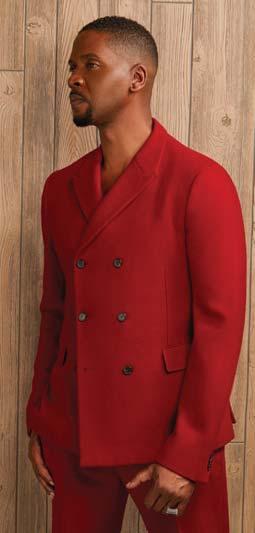
Fanfare Magazine | 23
SPOTLIGHT
John Morris Russell led the Cincinnati Symphony Orchestra and the Classical Roots Community Choir in the 2022 Classical Roots program. Credit: JP Leong
for generations to come, the future of Cincinnati arts and artistic communities must incorporate culturally relevant practices and programs. Chorus interim director Jason Alexander Holmes shared that the reciprocal respect of one’s cultural knowledge, heritage and life experiences became the rubric for the performers’ preparation and baseline for the audience’s experience.
The Classical Roots Community Choir is a response to the Cincinnati Symphony Orchestra’s pledge to cultivate a symbiotic relationship between itself and Cincinnati’s cross-cultural communities. In kind, program organizers consulted with Donald Lawrence to maximize a welcoming and impactful experience. His return to Cincinnati signaled a homecoming for many Cincinnatians familiar with both his local history and career catalogue. This year’s concert is designed to honor his career commitment to amplifying gospel music as a multi-genre art form and the historical influences that contributed to his creative lens.
The chorus and orchestral ensemble also reflect an amalgamation. This ensemble displays varied learning styles and practices that collectively work toward the goal of spiritual and musical
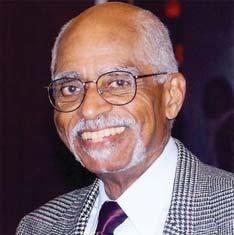

elevation. This combination centers themes of education and community, using both to pull together a program intersecting the impressions of classical music, spiritual traditions and contemporary applications. It is this juxtaposition of education and community that amplifies the ensemble’s perforative repertoire and serves as the Sankofa* experience for future practices and programmatic opportunities.
Orchestral conductor John Morris Russell champions this sentiment, noting his experiences teaching in Ohio public schools and international symphonic directorships. The shared outcome of working with artists at any level rests on their communication dynamics and willingness to approach each rehearsal with their absolute best. The “fantastic zone”—as he calls it—is the apex of harmony, only created when artists ascend to higher levels of cohesive performance.
Classical Roots Community Choir member and veteran community chorus participant Ciara Harper describes this as an intergenerational, multicultural cohesion. She notes this collaboration “is the coming together of different people with [a] common goal...showcasing it to people who want to be exposed. We don’t all look the same, but [this] collaboration requires all of us.”
This conjoined building of sound, understanding of the music’s message and the embrace of the project’s goal translates across artistic styles and worship experiences. The internal community produced within this ensemble reflects those who enjoy their respective crafts and believe in equality. The ongoing success of the Classical Roots Community Choir and Classical Roots concert includes participant and executive support, the Multicultural Awareness Council, chorus volunteers, and various arts activists working in tandem to make the orchestral experience relevant and remarkable.
This year’s participant numbers resemble pre-pandemic attendance. Their unified hope to revitalize the Classical Roots Community Choir will rebuild this extended family and further create deeper, meaningful content. After several weeks of rehearsals, there is a shared mutual investment in providing an outstanding show experience. There is also the mutual investment in protecting the energy created by their collective; the collective gives the feelings of home. The ensemble’s cohesive expression is not just the process of presenting a song; it is the accurate expression of the heart behind
24 | 2022–23 SEASON
SPOTLIGHT: Classical Roots
Ciara Harper
George Shirley
the message. Donald Lawrence upholds this as the pinnacle in his teaching; under his tutelage he stresses the importance of delivering the song’s message with the weight and conviction of its author. He conveys the effect as “speaking to the listener;” a practice that upholds the musical and spiritual integrity of the pieces. This responsibility is characteristic of Black music, and gospel music especially.
Lawrence and interim Choir director Holmes regard the Black Church as an important teaching vehicle, with Lawrence observing the institution as “a non-accredited conservatory.” He equated its teaching to that of a year-intensive, including ear training, music theory and vocal pedagogy. He stated this staple of American Black culture has “given us the greatest singers in the world,” and gospel music deserved the same appreciation as opera and jazz. Lawrence’s determination to present gospel music as art increased its interdisciplinary reach.
Choir member Harper further upheld this sentiment. Her active participation in community concert spaces provided significant opportunities to share vocal instrumentation and gospel expressions outside traditional church environments. These opportunities created a common ground within the arts; it is at this common ground that Lawrence hoped the
audience would appreciate gospel’s complexity and richness.
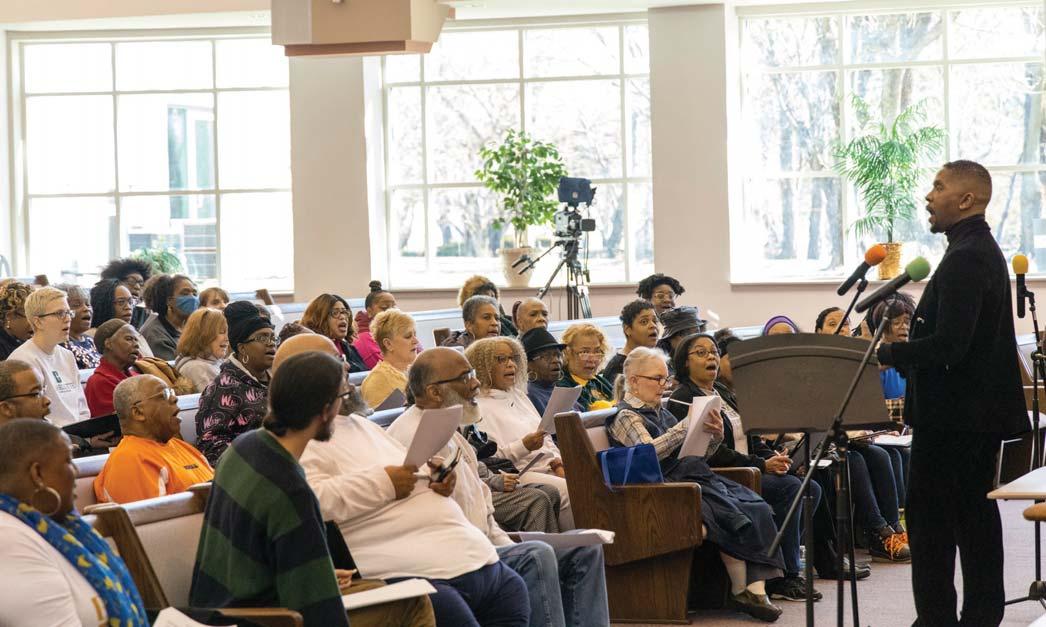
The long-term impact of the Classical Roots Community Choir and Concert is an intergenerational, collective appreciation for various styles of music, and the contributions of Black composers and artists. The Symphony Orchestra’s desire to raise the city’s consciousness through music requires the continuation of culturally inclusive programming. Consensus has been reached: the shared room created by this concert experience transforms the artists, directors and the audience. As the excitement for the concert builds, the future of the Classical Roots Community Choir also builds. As Holmes stated, “I feel about [the concert series] the way I feel about Black history—it is our history, American history, global history. Cincinnati has so much rich, Black, arts history that we could celebrate every month and not get bored.”
*The spirit of Sankofa, a word from the Twi language of Ghana that means “go back and get it,” encompasses taking from the past what is good and bringing it into the present to make progress in the future. Sankofa is symbolized by a bird with its feet facing forward and its head looking back.
Fanfare Magazine | 25
SPOTLIGHT: Classical Roots
The Classical Roots Community Choir in a workshop with Donald Lawrence, in preparation for this year’s Classical Roots program.
Credit: Tyler Secor
Why We Give, Part II
by TYLER M. SECOR
From full concerts at Music Hall to small pop-up performances in local neighborhoods and everything in between, our generous and dedicated donors, sponsors and concertgoers make it all possible. This series shares the special stories behind why our donors give to the Cincinnati Symphony Orchestra and Cincinnati Pops. As you will read, each reason is different, but their passion for this Orchestra is a constant. Our donors and their inspiring stories will ensure that the unique sound of the Cincinnati Symphony Orchestra and Cincinnati Pops will always resound.
You can join our family of donors online at cincinnatisymphony.org/donate or by contacting the Philanthropy Department at 513.744.3271.
JOE AND TRISH BAKER
Longtime CSO donors Joe and Trish Baker first met while they were both enrolled in undergraduate programs at Purdue University, with Joe being a Cincinnati native and Trish being from Chicago, Illinois. Since meeting in university, Joe and Trish have lived together in Cincinnati

for over 40 years, with the Cincinnati Symphony Orchestra being a consistent element of their time spent here.
Joe first saw the CSO when he was in grade school. “I was in elementary school, going on the bus as a part of a school trip. As soon as we stepped off of the bus, I remember being absolutely awestruck by the grand beauty of Music Hall—it’s such a magnificent building,” said Joe. “It was also my first time seeing a musical production of orchestral nature. It was very memorable, to say the least.”
Even though Joe’s first time at Music Hall was very impactful and noteworthy, Joe didn’t really have a change in his experience of classical music until he was a young adult.
“My father was such a big fan of the Symphony, and he loved orchestral music,” reflected Joe. “In my late 30s, I became strongly influenced by my father to really pay attention to classical music, and subsequently, what the CSO was doing. Mom and dad were regular subscribers, and seeing how much they enjoyed the CSO together set the stage for Trish and I doing the same.”
Trish echoed this sentiment, as she had a similar experience of being deeply moved by the experience the CSO offers, after not having much initial awareness.
26 | 2022–23 SEASON
SPOTLIGHT: Why We Give
Joe and Trish Baker
“Initially, when we went, I didn’t really listen to or care for classical music at all,” said Trish. “But after a few concerts, I learned to enjoy and appreciate the unbelievable and fantastic musicians and conductors, and the whole experience that the CSO had to offer.”
Over time, Joe and Trish began attending more concerts, eventually culminating in both of them becoming regular season subscribers. For both of them, there were a plethora of reasons that kept them coming back.
“The music and the musicians, first and foremost, are the main attraction,” revealed Trish. “They are all so talented—and when you combine the wonderful music with the professionalism, the conductors, the special guests and, of course, the experience of having a night out—all of that keeps us coming back. It’s a lot of fun to dress up a bit,
go out to dinner, and to have some friends come and experience some great art with you.”
As Joe and Trish kept coming back to see the CSO, they developed the desire to try and share that experience with other members of the community, prompting them to take their relationship with the Orchestra to the next level.
“Gradually, as we kept coming back to Music Hall, we realized the importance of everything that took place here. All of the great local musicians, the absolutely wonderful music, and the artistic experience as a whole really inspired us,” said Joe. “It’s very important to try and push the experience as a whole out to as many people as possible—Music Hall is a staple of Cincinnati, and the community should be encouraged to go and experience that. So, by giving to the CSO, we felt that we were truly giving back to our community.”
Join the CSO and Pops in Neighborhoods Around the City This Summer

Thursday, June 8, 7pm:
Cincinnati Symphony Orchestra Brass Institute
Part of the Uptown Summer Music Series
Location: Uptown Park, Downtown Oxford, OH
Sunday, June 11, 6pm:
Cincinnati Symphony Orchestra Brass Institute
Part of Cincinnati Opera Gala’s Pre-Concert
Performance
Location: Washington Park
Sunday, June 18, 7pm: West End Neighborhood
Location: Ezzard Charles Park (formerly Laurel Park)
Community Partner: Seven Hills
Neighborhood Houses
Late June: Pride Month Concert
Tuesday, July 4, 8pm: Red, White and BOOM!
Location: Riverbend Music Center
Sunday, July 9, 7:30pm:
Price Hill Neighborhood
Location: Dunham Recreation Center
Community Partner: Cincinnati Recreation Commission
Saturday, July 15, 7:30pm:
Evanston and East Walnut Hills Neighborhood
Location: Owl’s Nest (Fairfax Road)
Community Partner: Evanston and East Walnut Hills Community Councils
Wednesday, July 26, 7pm: Bond Hill, Roselawn and Paddock Hills
Neighborhoods
Location: Corinthian Baptist Church
Community Partner: Learning Through Art/ Jazz Alive
For the most up-to-date information, visit cincinnatisymphony.org
Fanfare Magazine | 27
SPOTLIGHT
Audience members at the Price Hill Brady Neighborhood Concert in June 2022. Credit: Mark Lyons
FIRST VIOLINS
Stefani Matsuo
Concertmaster
Anna Sinton Taft Chair
Felicity James
Associate Concertmaster
Tom & Dee Stegman Chair
Philip Marten
First Assistant Concertmaster
James M. Ewell Chair++
Eric Bates
Second Assistant Concertmaster
Serge Shababian Chair
Kathryn Woolley
Nicholas Tsimaras–
Peter G. Courlas Chair++
Anna Reider
Dianne & J. David Rosenberg Chair
Mauricio Aguiar§
Anne G. & Robert W. Dorsey Chair
Minyoung Baik
James Braid
Marc Bohlke Chair given by Katrin & Manfred Bohlke
Michelle Edgar Dugan
Donald & Margaret Robinson Chair
Rebecca Kruger Fryxell
Clifford J. Goosmann & Andrea M. Wilson Chair
Gerald Itzkoff
Jean Ten Have Chair
Sylvia Mitchell
Jo Ann & Paul Ward Chair
Charles Morey†
Luo-Jia Wu
SECOND VIOLINS
Gabriel Pegis
Principal
Al Levinson Chair
Yang Liu*
Harold B. & Betty Justice Chair
Scott Mozlin**
Henry Meyer Chair
Kun Dong
Cheryl Benedict
Evin Blomberg§
Rachel Charbel
Ida Ringling North Chair
Chika Kinderman
Hyesun Park
Paul Patterson
Charles Gausmann Chair++
Stacey Woolley
Brenda & Ralph Taylor Chair++
VIOLAS
Christian Colberg
Principal
Louise D. & Louis Nippert Chair
Christopher Fischer
Acting Associate Principal
Grace M. Allen Chair
Julian Wilkison**
Rebecca Barnes§
Emilio Carlo†
Stephen Fryxell
Melinda & Irwin Simon Chair
Caterina Longhi
Gabriel Napoli
Denisse Rodriguez-Rivera
Dan Wang
Joanne Wojtowicz
LOUIS LANGRÉE, Music Director
Louise Dieterle Nippert & Louis Nippert Chair
JOHN MORRIS RUSSELL, Cincinnati Pops Conductor
Louise Dieterle Nippert & Louis Nippert Chair
Matthias Pintscher, CSO Creative Partner
Damon Gupton, Pops Principal Guest Conductor
Samuel Lee, Assistant Conductor
Ashley and Barbara Ford Chair
Daniel Wiley, Assistant Conductor
Ashley and Barbara Ford Chair
CELLOS
Ilya Finkelshteyn
Principal
Irene & John J. Emery Chair
Daniel Culnan*
Ona Hixson Dater Chair
Norman Johns**
Karl & Roberta Schlachter
Family Chair
Daniel Kaler§
Marvin Kolodzik & Linda S. Gallaher
Chair for Cello
Isabel Kwon†
Hiro Matsuo
Laura Kimble McLellan Chair++
Theodore Nelson
Peter G. Courlas–
Nicholas Tsimaras Chair++
Alan Rafferty
Ruth F. Rosevear Chair
BASSES
Owen Lee
Principal
Mary Alice Heekin Burke Chair++
James Lambert*
Thomas Vanden Eynden Chair
Stephen Jones**
Trish & Rick Bryan Chair
Boris Astafiev§
Luis Arturo Celis Avila
Gerald Torres
Rick Vizachero
HARP
Gillian Benet Sella
Principal
Cynthia & Frank Stewart Chair
FLUTES
Randolph Bowman
Principal
Charles Frederic Goss Chair
Henrik Heide*†
Haley Bangs
Jane & David Ellis Chair
PICCOLO
Rebecca Tutunick
Patricia Gross Linnemann Chair
OBOES
Dwight Parry
Principal
Josephine I. & David J. Joseph, Jr. Chair
Lon Bussell*
Stephen P. McKean Chair
Emily Beare
ENGLISH HORN
Christopher Philpotts
Principal
Alberta & Dr. Maurice Marsh
Chair++
CLARINETS
Christopher Pell
Principal
Emma Margaret & Irving D.
Goldman Chair
Joseph Morris*
Associate Principal and E-flat Clarinet
Robert E. & Fay Boeh Chair++
Ixi Chen
Vicky & Rick Reynolds Chair in honor of William A. Friedlander
BASS CLARINET
Ronald Aufmann
BASSOONS
Christopher Sales
Principal
Emalee Schavel Chair++
Martin Garcia*
Hugh Michie
CONTRABASSOON
Jennifer Monroe
FRENCH HORNS
Elizabeth Freimuth
Principal
Mary M. & Charles F. Yeiser Chair [OPEN]*
Ellen A. & Richard C. Berghamer Chair
Molly Norcross**
Acting Associate Principal
Sweeney Family Chair in memory of Donald C. Sweeney
Lisa Conway
Susanne & Philip O. Geier, Jr. Chair
Duane Dugger
Mary & Joseph S. Stern, Jr. Chair
Charles Bell
TRUMPETS
Robert Sullivan
Principal Rawson Chair
Douglas Lindsay*
Jackie & Roy Sweeney Family Chair
Steven Pride
Otto M. Budig Family Foundation Chair++
Christopher Kiradjieff
TROMBONES
Cristian Ganicenco
Principal
Dorothy & John Hermanies Chair
Joseph Rodriguez**
Second/Assistant Principal Trombone
BASS TROMBONE [OPEN]
TUBA
Christopher Olka
Principal
Ashley & Barbara Ford Chair
TIMPANI
Patrick Schleker
Principal
Matthew & Peg Woodside Chair
Joseph Bricker*
Morleen & Jack Rouse Chair
PERCUSSION
David Fishlock
Principal
Susan S. & William A. Friedlander Chair
Michael Culligan*
Joseph Bricker *
Morleen & Jack Rouse Chair
Marc Wolfley+
KEYBOARDS
Michael Chertock
James P. Thornton Chair
Julie Spangler+
James P. Thornton Chair
CSO/CCM
FELLOWS
DIVERSITY
Tyler McKisson, viola
Luis Parra, cello
Samantha Powell, cello
LIBRARIANS
Christina Eaton
Principal Librarian
Lois Klein Jolson Chair
Elizabeth Dunning
Acting Associate Principal Librarian
Cara Benner Interim Assistant Librarian
STAGE MANAGERS
Brian P. Schott
Phillip T. Sheridan
Daniel Schultz
Andrew Sheridan
§ Begins the alphabetical listing of players who participate in a system of rotated seating within the string section.
* Associate Principal
** Assistant Principal
† One-year appointment
+ Cincinnati Pops rhythm section
++ CSO endowment only
~ Funded by the Andrew W. Mellon Foundation
28 | 2022–23 SEASON
LOUIS LANGRÉE, Music Director
 Louise Dieterle Nippert & Louis Nippert Chair
Louise Dieterle Nippert & Louis Nippert Chair
Louis Langrée has been Music Director of the Cincinnati Symphony Orchestra since 2013, Music Director of the Mostly Mozart Festival at Lincoln Center since 2003, and was appointed Director of Théâtre national de l’Opéra Comique in Paris in November 2021. Two of his Cincinnati recordings were Grammy nominated for Best Orchestral Performance: Transatlantic, with works by Varèse, Gershwin and Stravinsky; and Concertos for Orchestra, featuring world premieres by Sebastian Currier, Thierry Escaich and Zhou Tian. On stage, his Pelléas et Mélisande trilogy contrasted settings by Fauré, Debussy and Schoenberg. A multi-season Beethoven [R]evolution cycle has paired the symphonies with world premieres, as well as recreation of the legendary 1808 Akademie. During the Covid pandemic, Langrée was a catalyst for the Orchestra’s return to the stage in the fall of 2020 with a series of digitally streamed concerts.
Between the start of his tenure and the conclusion of the CSO’s 2022–23 season, Langrée and the CSO will have commissioned 42 new orchestral works and he will have conducted 32 premieres from a wide range of composers, including Julia Adolphe, Daníel Bjarnason, Jennifer Higdon, Jonathan Bailey Holland, Kinds of Kings, David Lang, Missy Mazzoli, Nico Muhly, André Previn, Caroline Shaw and Julia Wolfe, and the world premiere of Christopher Rouse’s Symphony No. 6, Rouse’s final opus.
He has guest conducted the Berlin Philharmonic, Vienna Philharmonic, London Philharmonic, Los Angeles Philharmonic, New York Philharmonic, Philadelphia Orchestra, Budapest Festival Orchestra, NHK Symphony, Orchestre National de France and Leipzig Gewandhaus, as well as Orchestre des Champs-Elysées and Freiburg Baroque. He frequently conducts at the leading opera houses, including Vienna Staatsoper, Teatro alla Scala, Royal Opera House Covent Garden, Lyric Opera of Chicago and Bavarian Staatsoper, and at festivals including Glyndebourne, Aix-enProvence, BBC Proms, Edinburgh International and Hong Kong Arts.
A native of Alsace, France, he is an Chevalier de la Légion d’Honneur and Officier des Arts et des Lettres, and he is an Honorary Member of the Confrérie Saint-Étienne d’Alsace, an Alsatian winemakers’ brotherhood dating to the 14th century.
JOHN MORRIS RUSSELL Cincinnati Pops Conductor
Louise Dieterle Nippert & Louis Nippert Chair
A master of American musical style, Grammynominated conductor John Morris Russell, a.k.a. “JMR,” has devoted himself to redefining the American orchestral experience. In his 11th year as conductor of the Cincinnati Pops Orchestra, Russell continues to reinvigorate the musical scene throughout Cincinnati and across the continent with the wide range and diversity of his work as a conductor, collaborator and educator. As Music Director of the Hilton Head Symphony Orchestra in South Carolina Russell leads the prestigious Hilton Head International Piano Competition, and as Principal Pops Conductor of the Buffalo Philharmonic Orchestra he follows in the footsteps of Marvin Hamlisch and Doc Severinsen. Guest conducting engagements have included many of the most distinguished orchestras in North America: the Los Angeles Philharmonic, Cleveland Orchestra, New York Philharmonic, Boston Pops, National Symphony, and the orchestras of Toronto, Vancouver, Dallas, Detroit and Pittsburgh.
With the Cincinnati Pops, Russell leads sold-out performances at Music Hall, concerts throughout the region, and domestic and international tours— including Florida in 2014 and China/Taiwan in 2017. His visionary leadership at the Pops created the “American Originals Project,” which has garnered both critical and popular acclaim in two landmark recordings: American Originals (the music of Stephen Foster) as well as American Originals: 1918. In 2020 the American Originals Project: The Cincinnati Sound, featuring Late Night with David Letterman musical director Paul Shaffer, celebrated the beginnings of bluegrass, country, rockabilly, soul and funk immortalized in recordings produced in the Queen City. Russell’s other recordings with The Pops include Home for the Holidays, Superheroes, Carnival of the Animals and Voyage Recent collaborations with artists around the world include Aretha Franklin, Emanuel Ax, Amy Grant and Vince Gill, Common, Garrick Ohlsson, Brian Stokes Mitchell, Jon Kimura Parker, Ann Hampton Callaway, Michael McDonald, Cho-Liang Lin, Sutton Foster, George Takei, Megan Hilty, Ranky Tanky, Steve Martin, Katharine McPhee, Brian Wilson, Cynthia Erivo and Leslie Odom, Jr.

Fanfare Magazine | 29 AND ARTISTIC LEADERSHIP
©Chris Lee 2021
MATTHIAS PINTSCHER
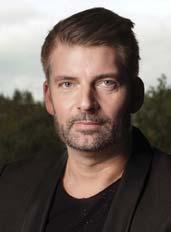
CSO Creative Partner
The 2022–23 season is Matthias Pintscher’s final season as Music Director of the Ensemble intercontemporain
(EIC), the world’s leading contemporary music ensemble founded in 1980 by Pierre Boulez. In his decade-long artistic leadership of the EIC, Pintscher has continued and expanded the cultivation of new works by emerging composers of the 21st century, alongside performances of iconic works from the avant-garde of the 20th century. In the 2020–21 season, Pintscher was announced as Creative Partner of the Cincinnati Symphony Orchestra (CSO).
As a conductor, Pintscher maintains relationships with several of the world’s most distinguished orchestras. In 2022–23, as guest conductor in Europe, he debuts with the Wiener Symphoniker and Gürzenich Orchester Cologne and returns to the Royal Concertgebouw, BRSO, BBC Scottish Symphony, Barcelona Symphony and the Boulez Ensemble. In North America, he debuts with the Philadelphia Orchestra and Kansas City Symphony, in addition to regular visits to the CSO as Creative Partner and return engagements with the Detroit Symphony, Baltimore Symphony, Los Angeles Philharmonic and New World Symphony. Pintscher has also conducted several opera productions for Berliner Staatsoper (Beat Furrer’s Violetter Schnee, Wagner’s Lohengrin), Wiener Staatsoper (Olga Neuwirth’s Orlando), and Théatre du Châtelet in Paris. He returns to Berliner Staatsoper in 2023 for Die Fliegende
Holländer
Known equally as one of today’s foremost composers, recent highlights include the premiere of his Cello Concerto Un Despertar by Alisa Weilerstein and the Boston Symphony Orchestra and the premiere of his new work for baritone, chorus and orchestra, performed by Georg Nigl and the Chorus and Symphonieorchester des Bayerischen Rundfunks at their Musica Viva festival. In 2022, Pintscher’s third violin concerto, Assonanza II, was premiered by the Cincinnati Symphony Orchestra with Leila Josefowicz. 2021–22 also saw the world premiere of Neharot, a co-commission of Suntory Hall, Orchestre Philharmonique de Radio France, Orchestre de la Suisse Romande, Los Angeles Philharmonic and Staatskapelle Dresden, where he was named Capell-Compositeur. Pintscher is also professor at The Julliard School since 2014 and is published by Bärenreiter-Verlag. matthiaspintscher.com
DAMON GUPTON Pops Principal Guest Conductor
Damon Gupton is the first-ever Principal Guest Conductor of the Cincinnati Pops. A native of Detroit, he served as American Conducting Fellow of the Houston Symphony and held the post of assistant conductor of the Kansas City Symphony. His conducting appearances include the
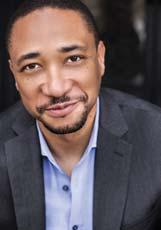
Boston Pops, Orchestra of St. Luke’s, Detroit Symphony, San Francisco Symphony, Atlanta Symphony, Baltimore Symphony, National Symphony Orchestra, Toledo Symphony, Fort Worth Symphony, Florida Orchestra, San Diego Symphony, Long Beach Symphony, San Antonio Symphony, Princeton Symphony, Orchestre Philharmonique de Monte Carlo, NHK Orchestra of Tokyo, Orquesta Filarmonica de UNAM, Charlottesville Symphony, Brass Band of Battle Creek, New York University Steinhardt Orchestra, Kinhaven Music School Orchestra, Vermont Music Festival Orchestra, Michigan Youth Arts Festival Honors Orchestra, Brevard Sinfonia, and Sphinx Symphony as part of the 12th annual Sphinx Competition. He led the Sphinx Chamber Orchestra on two national tours with performances at Carnegie Hall and conducted the finals of the Seventh Cliburn International Amateur Piano Competition and the 2021 Classic FM Live at Royal Albert Hall with Chineke!.
Gupton received his Bachelor of Music Education degree from the University of Michigan, where he delivered the commencement address to the School of Music, Theatre and Dance in 2015. He studied conducting with David Zinman and Murry Sidlin at the Aspen Music Festival and with Leonard Slatkin at the National Conducting Institute in Washington, D.C. Awards include the Robert J. Harth Conducting Prize and The Aspen Conducting Prize. He is the inaugural recipient of the Emerging Artist Award from the University of Michigan School of Music and Alumni Society and a winner of the Third International Eduardo Mata Conducting Competition.
An accomplished actor and graduate of the Drama Division of the Juilliard School, Gupton has had roles in television, film and on stage, most recently in series regular roles on the upcoming The Big Door Prize for Apple TV, as well as The Last Days of Ptolemy Grey starring Samuel L. Jackson. damongupton.com
30 | 2022–23 SEASON CSO AND POPS
ARTISTIC LEADERSHIP
©Franck Ferville ©Damu Malik
SAMUEL LEE Assistant Conductor
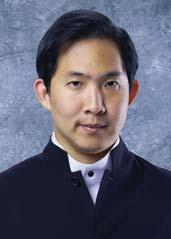
Samuel Lee, first prize winner of the BMI International Conducting Competition in Bucharest and the International Conducting Competition in Taipei, has recently been appointed Assistant Conductor of the Cincinnati Symphony Orchestra, beginning in the 2022–23 season.
In addition to several recent guest conducting engagements throughout Europe and Asia, Lee was also a Conducting Fellow with the Cabrillo Festival of Contemporary Music in 2021 and 2022, where he worked with conductors Cristian Măcelaru, Yannick Nézet-Séguin, Octavio MásArocas and Marin Alsop.
Since 2016 Samuel Lee has been the chief conductor of the C.P.E. Bach Musikgymnasium orchestra Berlin. He and the orchestra have been regularly invited to the Berlin Philharmonie and Konzerthaus Berlin for subscription concerts. He also served as a viola professor at Hochschule für Musik und Theater “Felix Mendelssohn-Bartholdy” in Leipzig, Germany until 2022.
As a violist, Lee was invited to perform with orchestras throughout Europe and Asia. From 2009 until 2017, he was the violist of Novus String Quartet, and he was the second prize winner of the 61st International Music Competition of ARD Munich and first prize winner of the Salzburg International Mozart Competition.
Lee is an alumnus of Hochschule für Musik “Hanns Eisler” Berlin, where he studied viola with Prof. Tabea Zimmermann (BM, MM, Konzertexamen), and orchestral conducting with Prof. Christian Ehwald (BM, MM). Lee completed Konzertexamen in orchestral conducting from Hochschule für Musik und Theater Hamburg (Prof. Ulrich Windfuhr).
DANIEL WILEY Assistant Conductor

Daniel Wiley has quickly become a notable young conductor on the rise, having made guest appearances with ensembles throughout North America, as well as the University of North Florida’s Opera Department. Beginning with the 2022–23 season, Wiley joined the Cincinnati Symphony Orchestra as an Assistant Conductor.
Prior to his tenure in Cincinnati, he held numerous conducting posts, including Assistant Conductor of the Jacksonville Symphony, Music Director of the Jacksonville Symphony Youth Orchestras, Associate Conductor of the Windsor Symphony Orchestra, Music Director of the Windsor Symphony Youth Orchestras, Music Director of the Windsor Symphony Community Orchestra, Wind Ensemble Conductor at the School of Creative Arts at the University of Windsor, Education Conductor/Consultant for London Symphonia, Conductor for the Windsor Abridged Opera Company, Music Director of Texas Academy of Mathematics and Science Youth Orchestra, and Assistant Conductor for the Meridian Symphony Orchestra.
In 2019, Wiley was the second prize recipient of both the Smoky Mountain International Conducting Institute and Competition and the Los Angeles International Conducting Competition. He also has spent time conducting new music ensembles, including for the Musicbed Music and Film Corporation based in Fort Worth, Texas, as well as participating in the Composing in the Wilderness program as part of the Fairbanks Summer Arts Festival in Alaska.
As a former public school music teacher, Wiley has a unique passion for music education, and he frequently donates his time as a guest clinician to support students and teachers in music programs across North America.
For full-length biographies of the CSO and Pops Artistic Leadership, visit cincinnatisymphony.org/about/artistic-leadership
Fanfare Magazine | 31
CSO AND POPS ARTISTIC LEADERSHIP
CSO APR 14: Classical Roots
DONALD LAWRENCE, featured guest artist

“The man who wears many musical colors.”
Those seven words eloquently capture the multifaceted essence of Donald Lawrence. Songwriter. Producer. Composer. Music/choir director. Recording artist. The guiding force behind such No. 1 hits as “Encourage Yourself,” “Back II Eden” and “The Blessing of Abraham.” Lawrence has also been the producing force behind No. 1 songs like “Blessed and Highly Favored” by the Clark Sisters, and “Lift Him Up,” “Souled Out” and “Every Praise” by Bishop Hezekiah Walker.
Donald Lawrence is one of the most influential figures in modern gospel music. He has had an impressive career in the gospel industry that has spanned more than 25 years, during which he resurrected and led the Tri-City singers, who were noted as one of the best choirs in the world, and has found individual success as a solo artist with multiple No. 1 Billboard hits and albums. He has also worked on numerous films and television programs, providing his musical services.
On top of more than 30 Stellar Award wins and four Dove Award wins, Lawrence has been nominated for 18 Grammy Awards over the course of his career, including a Grammy win in 2008. Lawrence has also served as the face of Verizon’s How Sweet the Sound national tour, the musical director and headlining act for the McDonald’s Inspirational Gospel Tour, and also the music supervisor for BeBe Winans’ hit theatrical production Born for This.

In 2019, Lawrence and the Tri-City Singers released their 25-year anniversary project titled Goshen. It earned a Grammy nomination for “Best Gospel Album,” and the album’s hit single, “Deliver Me. This is My Exodus,” went to No. 1 on the Billboard charts and was named Billboard’s “most played Gospel song of 2019.” Furthermore, Goshen won five Stellar Awards, including the Song of the Year award for “Deliver Me. This is My Exodus.”
Lawrence looks forward to expanding on the success of the Goshen album and continuing to produce original, unique music and creative content in the future.
CLASSICAL ROOTS COMMUNITY CHOIR
Jason Alexander Holmes, interim resident conductor
Jason Alexander Holmes is a music educator and performer from Ridgeway, Virginia, and currently serves as the Artistic Director of the Cincinnati Boychoir, the director of Cincinnati’s MLK Chorale, and the Associate Musician for Children and Youth at Christ Church Cathedral in Cincinnati. Before coming to Cincinnati, he was Director of Educational Programming at the Boston Children’s Chorus. Prior to his time in Boston, Jason taught music at the elementary and secondary levels. He also led the University of Rochester Gospel Choir and the Eastman Young Children’s Chorus. Jason holds degrees from the Eastman School of Music and Ithaca College, where his mentors and teachers included Drs. Susan Wharton Conkling, William Weinert and Susan Avery.
Choirs under Jason’s direction are consistently praised for their energetic, unified tone and engaging performances. He is known for innovative programming that celebrates the cultural context while encouraging singers and audiences alike to stretch their awareness by living in many different musical worlds. Pedagogically, Jason is committed to implementing culturally responsive practices in music education. He has given workshops and conference sessions on this topic at professional development seminars, schools and conferences.
At the core of Jason’s teaching and performing is the belief that we are all expressive and musical beings who deserve to witness and participate regularly in moments of truth and beauty.
Classical Roots Community Choir. For two decades, Classical Roots has been a Cincinnati community staple, and what started as a small concert series in 2001 has grown into a diverse community of music lovers, united in celebration of the rich legacy of African American music and the African American experience. At its center is the all-volunteer Classical Roots Community Choir, led by Interim Resident Conductor Jason Alexander Holmes and made up of singers from more than 50 churches who perform in concerts and other collaborations throughout the year.
32 | 2022–23 SEASON
CSO & POPS GUEST ARTISTS: April 14–May 14, 2023
Community Choir Leaders this season are Jason Alexander Holmes, Interim Resident
Conductor; Geneva Woode, Quinn Chapel AME Church; Marcellene Winfrey, Allen Temple AME
CLASSICAL ROOTS COMMUNITY CHOIR
George Akins
Theresa Alexander
Anita Anderson
Archie Armstrong
Clemmie Armstrong
Karen Arnold
Patty Bachman
Benjamin Barkdoll
Kylie Barkdoll
David Barner
Wesley Barnfield
Peggy Bell-Lohr
Steve Bester
Pam Bettner
Cornelia Binford
Donita Binford
Tonya Bishop-Gable
Alice Bledsoe
Odessa Bledsoe
Yvonne Brantley
David Brentley
Virginia Brewster
Carol A. Brown
Deanna Brown
Ricky Brown
Coeany Bryant
David Burns
Ann Byrd
Shirley Byrd
Janet Carter
Lenora Castleberry
Robert Chess
Brenda Clark
Francis Collins
Betty Connors
Barbara Cooper
Joyce Cooper
Carol Dantley
Chuck Darling
Mary Darner
Diane Davis
Robyn Davis
S. Glenn Davis
Diane DeGaetani
Carol DeGreg
Racquel Dudget
June Eddings
Keith Edmondson
Praise Ekeng
Jameria Evans
P. Ann Everson-Price
Hope Finney
Cassandra Fowler
Mary Franklin
Bernadine FranklinStokes
Joanne Freeman
Marqueta Freeman
Joy Gazaway
Jermaine Gentry
Linda Gentry
Janette Gibson
Vee Gibson
Hannah Gittens
Barbara Gomes
Kerry Gordon
Amber Greer
Andrea Hall
Ciara Harper
Jeannette Harrison
Natalie Hayes
Princess Hearn
Deborah Hill
Jennifer Hill
Beth Hofferber
Steve Hofferber
Ron Hoffman
Ava Jackson
Beverly Jackson
Dawann Jackson
Samantha Jackson
Trudy Jackson
Yvette Jackson
Jeanine Jason
Quinton Jefferson
Carol Johnson
Cassandra Johnson
Iva Johnson
Jacqueline A. Johnson
Jerome Johnson
Church; David Fowler, Church of the Resurrection
Catholic Church; Adrian Cunningham, New Jerusalem Baptist Church; and Ron Logan, Lincoln Heights Missionary Baptist Church.
Joyce Johnson
Nadine Johnson
Dante Keeling
Lawanda Kenny
Thomas Knipper
Dan Larkin, Jr.
Kai Lattimore
Hattie Lawson
Lillian Lee
Kathye Lewis-Norman
Robert Lomax
Nicole Mack
Trina Madry
Hycinthe Marshall
Tiffany Martin
Tonya Mason
Christina Mayrhofer
Tahnya McCloud
Mark McDougald
D McGruder
Barbara McMullen
Brenda McMullen
Kimberly McMullen
Jamaal McMullen
Christina Miller
Karen Mills
Sharon Monroe
Marjorie Moseley
Dawn Mundy
Jacqueline Nixon
Carolyn O’Bryant
Margaret O’Leary
Tim Oliver
Shari Palmer
Gloria Parker-Martin
LaShaun Patton
Lyda Phillips
Tiffany Poole
Kourtney Porter
Bridalveil Powell
Katrina Powell
Kimberly Price
Nancy Provine-Turner
Angela Randolph
Brian Reilly
Betty Richardson
Bonnie Richardson
Deborah Riley
Joy Rolland
Stacey J. Roper
Alicia Royal
Anna Russell
Laverne Rutledge
Sherry Scott
Vera Scott-Johnson
Mia Sears
Bethany Shropshire
Calvin Singleton
Camille Smith
Eric Smith
Nakia Smith
Janene Sonnega
Mildred Stallworth
Brett Stover
Lesa Stricken
Muriel Suttles
Nikita Taggart
Sonya Tang Girdwood
William Taylor
Marchelle Tubbs
Ramon Tubbs
Miriam Valley
Darwin Walker-Denson
Carroll Wallace
Noel Walton
Yvonne Watkins
Yvonne Watson
Kimberly Watts
Charmaine Webster
Jan Weiler
Donna Welch
Tracy West
Ebony Williams
Gary Williams
Tina Williams
Sherri Willis
Lisa Wilson
Carla Winfrey
as of March 6, 2023
Classical Roots Community Choir singers represent the following area churches and choirs:
Abundant Life Apostolic Church
Allen Temple AME Church
Bethel AME Church
Bible Way Church of God and Christ
Brown Chapel AME Church
Calvary Missionary Baptist Church
Christ Emmanuel Christian Fellowship
Church of the Resurrection
Cincinnati United Choir
City Gate Church
Clifton United Methodist Church
College Hill Presbyterian Church
Compass Community Church
Crossroads Church
Dominion Center Cincinnati
Episcopal Church of the Redeemer
Fleming Rd. United Church of Christ
Greater Cincinnati Choral Union
Greater Liberty Baptist Church
Heirs Covenant Church
Higher Ground Ministries
House of Joy Christian Ministries
Lee Chapel Church
Light of the World Church
Lincoln Heights Missionary Baptist Church
Loretta C. Mangrum Chorale
Memorial Baptist Church
Mother of Christ Catholic Church
Mt Zion Missionary Baptist Church—Glendale
Mt. Hebron Fellowship
MUSE
New Evergreen Ministries
New Jerusalem Baptist Church
New Life Missionary Baptist Church
New Nazarene Baptist Church
New Prospect Baptist Church
New Thought Unity Center
New Vision United Methodist Church
Omega Baptist Church
Quinn Chapel AME Church
Revelation Baptist Church
Rocklife Church
Rose Chapel
Southern Baptist Church
St. James Episcopal Church
St. Johns Unitarian Universalist Church
St. Joseph Catholic Church
Tabernacle of Love Ministries
Union Baptist Church
Willing Spirit Baptist Church
Word Alive Christian Fellowship
World Outreach Christian Church
Zion Bethel Christian Fellowship
Zion Baptist Church
Fanfare Magazine | 33 APR–MAY GUEST ARTISTS
GEORGE SHIRLEY, vocalist
One of America’s most versatile tenors and enlightened musicians, George Shirley remains in demand nationally and internationally as performer, teacher and lecturer.
He has won
international acclaim for his performances with The Metropolitan Opera, and with major opera houses and festivals in England, Germany, Austria, Argentina, the Netherlands, Monte Carlo, Scotland, Italy, Japan, Chicago, San Francisco, Washington, D.C., Santa Fe and Detroit, among others.
Mr. Shirley has recorded for the RCA, Columbia, DECCA, Angel, Vanguard, C.R.I, Capriccio, Philips and Albany labels; he received a Grammy Award in 1968 for his role (Ferrando) in the prize-winning RCA recording of Mozart’s Così fan tutte. He has performed more than 80 operatic roles over the span of his 64-year career, as well as oratorio and concert literature with some of the world’s most renowned orchestras (e.g., London Philharmonic, BBC Symphony, London Symphony, and the major orchestras of New York City, Washington, D.C., Pittsburgh, Philadelphia, Detroit, Chicago, San Francisco, Cleveland, Los Angeles and Boston) and conductors (Solti, Stravinsky, Leinsdorf, Ormandy, Klemperer, Bernstein, Maazel, Colin Davis, von Karajan, Schippers, Steinberg, Ozawa, et al.). As recitalist, he has collaborated with William Bolcom, Charles Wadsworth, Philip Eisenberg, Martin Isepp, Jonathan Brice, John Wustman, Kelly Wyatt, George Posell and Martin Katz, to name but a few.
He was the first Black tenor and the second African American male to sing leading roles with The Metropolitan Opera, where he remained for 11 years as a leading artist. He was the first Black high school vocal music teacher in the Detroit Public Schools and the first Black member of the United States Army Chorus in Washington, D.C. The Opera News January 2004 issue featured a retrospective of Mr. Shirley’s career, “Reunion: George Shirley” by Eric Myers. A new article, “Talking with a Legend,” written by Kenneth Overton and published in the Opera News February 24, 2022 issue, again focused on the tenor’s 63-year presence on the lyric stage.
George Shirley is The Joseph Edgar Maddy Distinguished University Emeritus Professor of Music at the University of Michigan School of Music, Theatre and Dance. In 2015, he received the National Medal of Arts from President Barack

Obama and, in 2022, Opera America inducted him into its new Hall of Fame.
THE NOUVEAU PROGRAM
Marion
Peraza,
Artistic Advisor and Coach
The Nouveau Program supports increased participation in classical music by African American and Latine student musicians by providing equitable opportunities for music study and performance. The Nouveau Program includes several groups, and students must audition to participate. Nouveau members receive weekly chamber coaching, perform throughout the season, and participate in ageappropriate workshops and activities. Nouveau ensembles include Novice, Apprentice, Chamber Players and Winds. The Nouveau Program is supported by the D’Addario Foundation; the CSO’s Multicultural Awareness Council; Queen City (OH) Chapter of The Links, Incorporated; PricewaterhouseCoopers; and The Wohlgemuth Herschede Foundation
Violinist and Nouveau Program coach Marion
Peraza began her musical career as a member of Venezuela’s Youth Orchestra System, El Sistema. As a member of the Simón Bolívar Symphony Orchestra, she toured Japan, France, Spain, Mexico, Colombia and Brazil, among others, and performed on seven recordings. She owns the Peraza Music Workshop (PMW), where she teaches private violin lessons, coaches award-winning chamber ensembles and offers theory classes. The PMW is a Founding School of the Carnegie Hall Royal Conservatory Achievement Program. As a guest teacher/clinician, she has taught at the Western Springs Suzuki Talent Education and Elmhurst College in Chicago, the University of Vermont, University of Louisville, University of Southern Maine, Bermuda Music School, Conservatorio de Bogotá and Simón Bolívar Conservatory in Venezuela. Peraza is also the director and founder of the Encore Advanced Chamber Orchestra, a summer program at the University of Cincinnati College-Conservatory of Music. Her principal teachers are José Francisco Del Castillo (Simón Bolívar Conservatory), Margaret Pardee (Juilliard School), the Tokyo Quartet and the Vermeer Quartet. Peraza will join the string faculty at Miami University in 2023 teaching violin and viola.

34 | 2022–23 SEASON APR–MAY GUEST ARTISTS
MEMBERS OF THE NOUVEAU PROGRAM
Voice
Ella Vaughn
Violin I
Alyssa Lehmann
Nicole Heinz-Urgilez
Sarah Perpignan
Violin II
Julia Lancman
Cecilia Lehmann
Carmen DeAtley-Rosales
Grace Oyediran
Violin III
Evaluna Bast
David Lancman
Maya Pero
Nyla Smith
Joshua Taylor
Ella Rose Vonderschmidt
Viola
Gabriel Caal
Christina Lehmann
Lela Walker
Madison Meredith
Cello
Ari Peraza-Webb
Nathan Lehmann
Shaylin King
Dominic Lehmann
Caleb Griffin
Baylen Sofranec-Smith
Bass
Kindall Benjamin
Matteo Meli
CSO APR 15–16: Pictures at an Exhibition
RAMÓN TEBAR, conductor
Spanish Conductor
Ramón Tebar is currently Principal Conductor in Association with the Orquesta de Valencia, as well as Artistic Director of Opera Naples. He was previously Artistic Director of the Florida Grand Opera and Principal Guest Conductor of Valencia’s Palau de les Arts Reina Sofia.
Alongside his work in Valencia, the 2022–23 season will see Ramón Tebar make his debuts with the Cincinnati Symphony Orchestra, Calgary Philharmonic, Copenhagen Philharmonic, Norrlandsoperans symfoniorkester and the Würth Philharmoniker, as well as at Frankfurt Opera with a new production of Saverio Mercadante’s Francesca da Rimini. This season, he will also return to the Teatro Colón to conduct Bizet’s Les pêcheurs de perles, and to the Szczecin Philharmonic and the Basque National Orchestra in Bilbao for concerts.
In addition to his operatic career and his role as Music Director of the Orquestra de València, Tebar is sought after as a guest conductor with orchestras around the world. He has conducted the Spanish National Orchestra several times, and he further guested with many of Spain’s other orchestras. Beyond Spain, Tebar has guest conducted such orchestras as the Philharmonia in London, Prague Philharmonia, Het Gelders Orkest, Malaysian Philharmonic, Armenian Philharmonic, Orchestre de l’Opéra de Rouen Normandie, Szczecin Philharmonic, St. Petersburg Symphony, San Antonio Symphony and the Orquestra
Sinfónica Nacional de Perú. Tebar was also previously Artistic Director of the Santo Domingo Music Festival in Puerto Rico.
Tebar’s work can also be heard on recordings with Joseph Calleja and the Orquestra de la Comunitat Valenciana on the DECCA label, and with Gregory Kunde and the Orquesta Sinfonica de Navarra on Universal. ramon-tebar.com
STEVEN BANKS, saxophone
As a performer and composer, saxophonist Steven Banks is striving to bring his instrument to the heart of the classical music world. He is driven to program and write music that directly addresses aspects of the human experience and is an active and intentional supporter of diverse voices in the future of concert music.
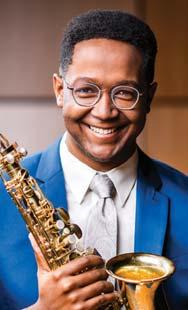
Banks is establishing himself as a compelling and charismatic soloist, and, in 2022, he was awarded the prestigious Avery Fisher Career Grant and was a chosen artist for WQXR’s Artist Propulsion Lab. He was the first saxophonist to be awarded First Prize at the Young Concert Artists Susan Wadsworth International Auditions.
Banks has appeared with several U.S. orchestras and renowned conductors, and in recital he has appeared across the U.S. at the San Francisco Symphony’s Spotlight Series at Davies Hall, Merkin Hall, the Kennedy Center, the Kravis Center and Festival Napa Valley with his collaborative partner, pianist Xak Bjerken. A keen chamber musician, Banks will be the first artistin-residence of the Skaneateles Festival in the 2023–24 season. He is a founding member of the Kenari Quartet, an all-saxophone ensemble with which he won First Prize at the inaugural M-Prize Chamber Arts Competition and two silver medals from the Fischoff Chamber Music Competition. Their album, French Saxophone Quartets, was released in 2016 (Naxos).

In 2023 and 2024 Banks will premiere and tour with a commissioned concerto from Grammywinning composer Billy Childs, including April 15–16 performances with the Cincinnati Symphony Orchestra, one of the commissioning orchestras.
As a composer, Banks has been commissioned by such organizations as Young Concert Artists, WQXR’s Artist Propulsion Lab, Latitude 49, Yale University’s Project 14 Initiative and Northwestern
Fanfare Magazine | 35
APR–MAY GUEST ARTISTS
©Chris Lee
University’s Saxophone Ensemble. His Cries, Sighs and Dreams was premiered in May 2022 at Carnegie Hall; his Fantasy on Recurring Daydreams will be premiered by Zhu Wang in April 2023 (Murphy Music Press).
Banks is a visiting faculty member at the Cleveland Institute of Music and holds the Jackie McLean Fellowship at the University of Hartford. He was previously Assistant Professor of Saxophone at Ithaca College and the Baldwin Wallace Conservatory. He is an endorsing artist for Conn-Selmer instruments, D’Addario Woodwinds, lefreQue Sound Solutions and Key Leaves. steven-banks.com
CSO APR 21–22: Mahler Symphony No. 7
MATTHIAS PINTSCHER, conductor
Turn to p. 30 for a biography of conductor and CSO Creative Partner Matthias Pintscher.
CSYO/CSO SIDE-BY-SIDE, APR 23
MATTHIAS PINTSCHER, conductor
SAMUEL LEE, conductor
DANIEL WILEY, conductor
Turn to p. 30–31 for biographies of CSO Creative Partner Matthias Pintscher and CSO Assistant Conductors Samuel Lee and Daniel Wiley.
ARI PERAZA-WEBB, cello
CSYO Philharmonic Concerto Competition Winner
Ari Peraza-Webb, age 17, is a Venezuelan American cellist from Cincinnati. He made his solo debut at Carnegie Hall after winning the AFA International String Competition at age 6 and the American Protégé International String Competition at age 8. He also performed at the Stern Auditorium in Carnegie Hall in 2017 as part of the Peraza Music Workshop Ensemble.
A 2022 YoungArts Winner, Ari is the first chair of the Cincinnati Symphony Youth Orchestra (CSYO) and of the Wyoming High School Philharmonia Orchestra. He is also part of the CSO Nouveau Chamber Players and the Peraza Music Workshop Ensemble.
Ari made his orchestra solo debut at age 12 with the Blue Ash-Montgomery Symphony Orchestra, under maestro Michael Chertock, and
his international solo debut in April 2019 at the Amphithéatre Philharmonie in Paris after winning first place at the International Music Competition “Grand Prize Virtuoso.”
He is also the 2019 State of Ohio winner of the Music Teachers National Association–Yamaha Orchestral Strings Junior Competition and the National Mary Alice Cox Award, Senior Division. Ari also was the winner of the 2018 Ohio Federation of Music Clubs Marilyn Walter State Competition. In 2021, Ari won the State of Ohio Buckeye Auditions and was selected to perform on NPR’s From the Top. Most recently, Ari performed the Dvořák Concerto with the New Albany Symphony Orchestra, won the 2022 Overture Awards Competition, and won the 2022 Matinée Musicale Scholarship. In October of 2022, Ari attended the Kronberg Academy Cello Masterclasses as an Active Participant, performing for Gary Hoffman.
Ari has studied with renowned teachers such as Laurence Lesser (New England Conservatory), Hans Jørgen Jensen (Northwestern University), Steven Doane (Eastman School of Music), Joel Krosnick (Juilliard), Richard Aaron (Juilliard) and Clara Kim (Juilliard), among others.
Ari Peraza-Webb began playing the cello at age 3 with Helen Ford at Indiana University. He studies with Alan Rafferty and Sarah Kim. Ari loves to play chamber music and the piano, as well as video games with his brother, Eli, and his friends.

CSYO PHILHARMONIC ORCHESTRA
Turn to p. 87 for a roster of the CSYO Philharmonic Orchestra.
POPS APR 25: Ben Folds
BEN FOLDS, guest artist
Born and raised in North Carolina, Ben Folds first rose to fame in the mid-1990s with Ben Folds Five, whose acerbic, genre-bending take on piano pop helped define an entire era of alternative rock. After scoring multiple hit singles and a gold record with the band, Folds launched his solo career in 2001, releasing a series of similarly acclaimed albums that would firmly establish him as one of the most ambitious and versatile songwriters of his generation. In 2010, Folds
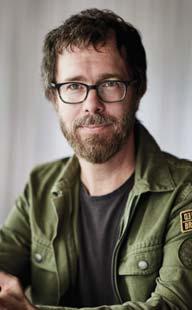
36 | 2022–23 SEASON
APR–MAY GUEST ARTISTS
teamed up with celebrated author Nick Hornby on a collaborative record titled Lonely Avenue; in 2014, he composed his first piano concerto; in 2015, he recorded an album with the classical ensemble yMusic; in 2017, he became the artistic advisor to the National Symphony Orchestra at the Kennedy Center, where he began curating a series of performances marrying contemporary artists with symphonic orchestration; in 2019, he released his New York Times best-selling memoir, A Dream About Lightning Bugs; and in 2021, he launched the Lightning Bugs podcast, an interview series on creativity and process with guests as diverse as Jon Batiste, Sara Bareilles, Bob Saget and Rainn Wilson. As if that wasn’t enough to keep him busy, Folds also revealed himself to be a prolific photographer with gallery shows in the U.S. and Europe, appeared onscreen in films and television (most recently playing himself in three episodes of the hit Amazon Prime series The Wilds), composed music for a 25-minute stage adaptation of Mo Willem’s Goldilocks and the Three Dinosaurs (which premiered at the Kennedy Center), and serves on the boards of the Arts Action Fund, the Nashville Symphony and Planet Word, a new immersive museum in Washington, D.C., dedicated to celebrating the power of language.
His latest album is What Matters Most. “More than anything, I wanted to make an album that was generous, that was useful,” says Folds. “I want you to finish this record with something you didn’t have when you started.” benfolds.com
LUCAS WALDIN, conductor
Lucas Waldin is a dynamic and versatile conductor and orchestrator whose performances have delighted audiences across North America. He has collaborated with some of today’s most exciting artists, including Carly Rae Jepsen, The Barenaked Ladies, Crash Test Dummies, Ben Folds, Buffy Sainte-Marie and The Canadian Brass, in addition to conducting presentations such as Disney in Concert, The Princess Bride, Blue Planet Live, Cirque de la Symphonie, and the groundbreaking symphonic debut of R&B duo Dvsn as part of the global Red Bull Music Festival.
Waldin has been a guest conductor for numerous major orchestras in the U.S. and
Canada, such as the Cleveland Orchestra, Houston Symphony, Seattle Symphony, Dallas Symphony, St. Louis Symphony, Grant Park Festival Orchestra, Vancouver Symphony, Calgary Philharmonic and Toronto Symphony.
A native of Toronto, Canada, Waldin holds degrees in flute and conducting from the Cleveland Institute of Music. lucaswaldin.ca

POPS APR 28–30: Ragtime in Concert
Biographies for the Ragtime in Concert cast will appear in an insert available at the Apr. 28–30 concerts.
CSO MAY 5–7: Saint-Saëns Organ Symphony
VÍKINGUR ÓLAFSSON, piano
Icelandic pianist Víkingur Ólafsson has made a profound impact with his remarkable combination of highest level musicianship and visionary programs. His recordings for Deutsche Grammophon— Philip Glass Piano Works (2017), Johann Sebastian Bach (2018), Debussy Rameau (2020) and Mozart & Contemporaries (2021)—captured the public and critical imagination and have led to career streams of over 400 million. His latest album, From Afar, was released in October 2022.
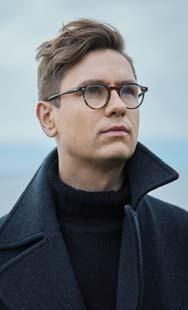
Now one of the most sought-after artists of today, Ólafsson has earned multiple awards, including the Rolf Schock Prize for music (2022), Gramophone magazine Artist of the Year, Opus Klassik Solo Recording Instrumental (twice) and Album of the Year at the BBC Music Magazine Awards.
Ólafsson continues to perform as artist-inresidence at the world’s top orchestras, concert halls and festivals and to work with today’s greatest composers. In the 2022–23 season he performs with orchestras including Philharmonia Orchestra, Concertgebouworkest, Czech Philharmonic Orchestra, New York Philharmonic, Berliner Philharmoniker, The Cleveland Orchestra, the London and Bergen philharmonic orchestras, the Toronto Symphony Orchestra, and Orchestre symphonique de Montréal.
Fanfare Magazine | 37
APR–MAY GUEST ARTISTS
©Ari Magg
A captivating communicator both on and off stage, Ólafsson also extends his significant talent to broadcast, having presented several of his own series for television and radio. He was Artist-inResidence for three months on BBC Radio 4’s flagship arts program, Front Row—broadcasting live during lockdown from an empty Harpa concert hall in Reykjavík, he reached millions of listeners around the world. vikingurolafsson.com
CSO MAY 12–13: An American in Paris



COURTNEY BRYAN, piano and composer


A native of New Orleans, Courtney Bryan’s music is in conversation with various musical genres, including jazz and other types of experimental music, as well as traditional gospel, spirituals and hymns. Focusing on bridging the sacred and the secular, Bryan’s compositions explore human emotions through sound,


confronting the challenge of notating the feeling of improvisation. Bryan has academic degrees from Oberlin Conservatory (BM), Rutgers University (MM) and Columbia University (DMA) with advisor George Lewis, and completed postdoctoral studies in the Department of African American Studies at Princeton University. Bryan is the Albert and Linda Mintz Professor of Music at Newcomb College in the School of Liberal Arts at Tulane University and a Creative Partner with the Louisiana Philharmonic Orchestra. She was the 2018 music recipient of the Herb Alpert Award in the Arts, a 2018 Hermitage Fellow, a 2019 Bard College Freehand Fellow, a 2019–20 recipient of the Samuel Barber Rome Prize in Music Composition, a 2020 United States Artists Fellow, and a 2020–21 Civitella Ranieri Fellow.
To learn more about Courtney Bryan’s compositions, turn to p. 77 for the program note for her CSO co-commissioned work, House of Pianos







Bryan has given music workshops at various universities, including Princeton University, Columbia University, Harvard University, Berklee College of Music, The California Institute of the Arts, The University of South Carolina, Brown University, University of California—San


To learn more, scan:



38 | 2022–23 SEASON
APR–MAY GUEST ARTISTS
The CollegeofArtandDesign forthe Radiant and Radical
www.artacademy.edu 1212 Jackson Street, Cincinnati, OH 45202
History*
& Video* *available as
MAJORS/AREAS OF STUDY Design Illustration Painting & Drawing Sculpture Photography Print Media Digital Arts Animation Creative Writing Art
Film
minors only
Diego, DePaul University and Xavier University of Louisiana, and she has participated in and helped design programs that guide young people to improvise, compose and work with music technology, including programs through Columbia University, the Jacksonville Symphony, Carnegie Hall, and other artistic collaborations. courtneybryan.com
CSYO MAY 14: Spring Concerts DANIEL WILEY, conductor
Turn to p. 31 for a biography of Assistant Conductor Daniel Wiley.
FELIPE MORALES-TORRES
CSYO Concert Orchestra Conductor
Felipe Morales-Torres is an award-winning conductor and educator with a passion for inspiring the next generation of musicians. In addition to his role as Conductor of the CSYO Concert Orchestra, as well as coach for the CSYO’s Nouveau Apprentice Group, Morales is the Orchestra Director for Anderson High School and previously served as Director of Orchestras for Winton Woods City Schools. He is also an active guest conductor and clinician for student orchestras in the U.S. and Latin America, traveling to Costa Rica each summer to teach and conduct for the Foundation for the Advancement of Strings Education (FASE). He was a recent guest of the National Symphony Orchestra of Chile, where he conducted and studied alongside its director, Leonid Grin.
As a Latin-American teaching artist, Morales is driven to engage diverse student musicians and to make quality opportunities accessible to them. He has played a part in several community music programs, including the Louisville Youth Orchestra and the Dayton Philharmonic’s Q The Music, an El Sistema-inspired outreach program. Morales started his musical life as a violist, and later pursued bassoon studies as an undergraduate at the University of Cincinnati College-Conservatory of Music. In 2019, he completed a master’s degree in Music Education and Orchestral Conducting, earning the University’s Excellence in Teaching Award for his work with undergraduate music education majors.

VIVIAN CHANG, violin

Vivian Chang, age 16, is a sophomore at Mason High School. She has been studying violin with Hong Cheng since age 4. Vivian has served in leadership roles in the Cincinnati Symphony Youth Orchestras, in her school orchestra and in OMEA’s regional and all-state orchestras. Her wins in young artist competitions and concerto competitions have earned performance opportunities as a featured soloist in public concerts with the Dayton Philharmonic Orchestra, the Louisville Orchestra, the Blue Ash and Montgomery Symphony Orchestra, and the Cincinnati Symphony Youth Orchestra. She is also a two-time State winner of the OMTA Buckeye Auditions, winner of the Maestro of Tomorrow Competition by Cincinnati Public Radio, and winner of the Young Talent Search by the Dayton Public Radio Discover Classical, appearing on radio, web sites and newspapers with her music and interviews.
Vivian loves the stage. She has had a great time performing as a soloist or orchestra member at Carnegie Hall, Chicago Symphony Center, Sydney Opera House, the Sydney Harbour, Cincinnati Music Hall, Chicago’s Field Museum and conservatory recital halls. She also enjoys playing on the streets as an invited soloist for beloved cultural or social events in the Tri-State area.
Vivian is extremely passionate about sharing music with the community and is a Gold Medalist of the President’s Volunteer Service Award.
CSYO PHILHARMONIC ORCESTRA AND CSYO CONCERT ORCHESTRA
Turn to p. 87 for rosters of both the CSYO Philharmonic Orchestra and CSYO Concert Orchestra.
Fanfare Magazine | 39
APR–MAY GUEST ARTISTS
Fifth Third Foundation proudly supports


Classical Roots 2023
Featuring the Cincinnati Symphony Orchestra, members of the Classical Roots Community Choir, and special guest Donald Lawrence.


Fifth Third Bank, National Association. Member FDIC.
4242455
CLASSICAL ROOTS | 2022–23 SEASON
JOHN MORRIS RUSSELL, conductor
JASON ALEXANDER HOLMES, conductor
DONALD LAWRENCE, featured guest artist
GEORGE SHIRLEY, tenor
MEMBERS OF THE NOUVEAU PROGRAM, Marion Peraza de Webb, artistic advisor and coach
CLASSICAL ROOTS COMMUNITY CHOIR, Jason Alexander Holmes, interim resident conductor
FRI APR 14, 7:30 pm
“Dance” from Othello Suite Samuel Coleridge-Taylor
Lift Ev’ry Voice and Sing (Text on p. 43) James Weldon Johnson
“Every Time I Feel the Spirit” from Three Spirituals for Orchestra Adolphus Hailstork
We Shall Walk Through the Valley in Peace
Deep River
Undine Smith Moore
Traditional, arr. Sonia Morales-Matos
Oh, Freedom Traditional, arr. Coleridge-Taylor Perkinson
“Hallelujah!” from The Cry of Jeremiah Rosephanye Powell
INTERMISSION
Selections by Donald Lawrence (subject to change):
The Blessing of Abraham
The Best is Yet to Come
Encourage Yourself
Healed
Matthew 28
When the Saints Go to Worship
Jehovah Sabaoth (God of Angel Armies)
Program subject to change
The CSO is grateful to Community Sponsors Fifth Third Foundation and Jeffrey & Jody Lazarow andJanie & Peter Schwartz Family Fund of The Greater Cincinnati Foundation, Presenting Sponsor Taft Law and Show Sponsor JRH Consultants

The Classical Roots concert was made possible in part by support from the National Endowment for the Arts
The Cincinnati Symphony Orchestra is grateful for the support of the Louise Dieterle Nippert Musical Arts Fund of the Greenacres Foundation and the Nina Browne Parker Trust, and for the thousands of people who give generously to the ArtsWave Community Campaign. This project was supported in part by the Ohio Arts Council, which receives support from the State of Ohio and the National Endowment for the Arts
The Cincinnati Symphony Orchestra in-orchestra Steinway piano is made possible in part by the Jacob G. Schmidlapp Trust
Steinway Pianos, courtesy of Willis Music, is the official piano of the Cincinnati Symphony Orchestra and Cincinnati Pops.
Fanfare Magazine | 41
Music Hall
Jeffrey & Jody Lazarow and Janie & Peter Schwartz Family Fund of The Greater Cincinnati Foundation JRH Consultants
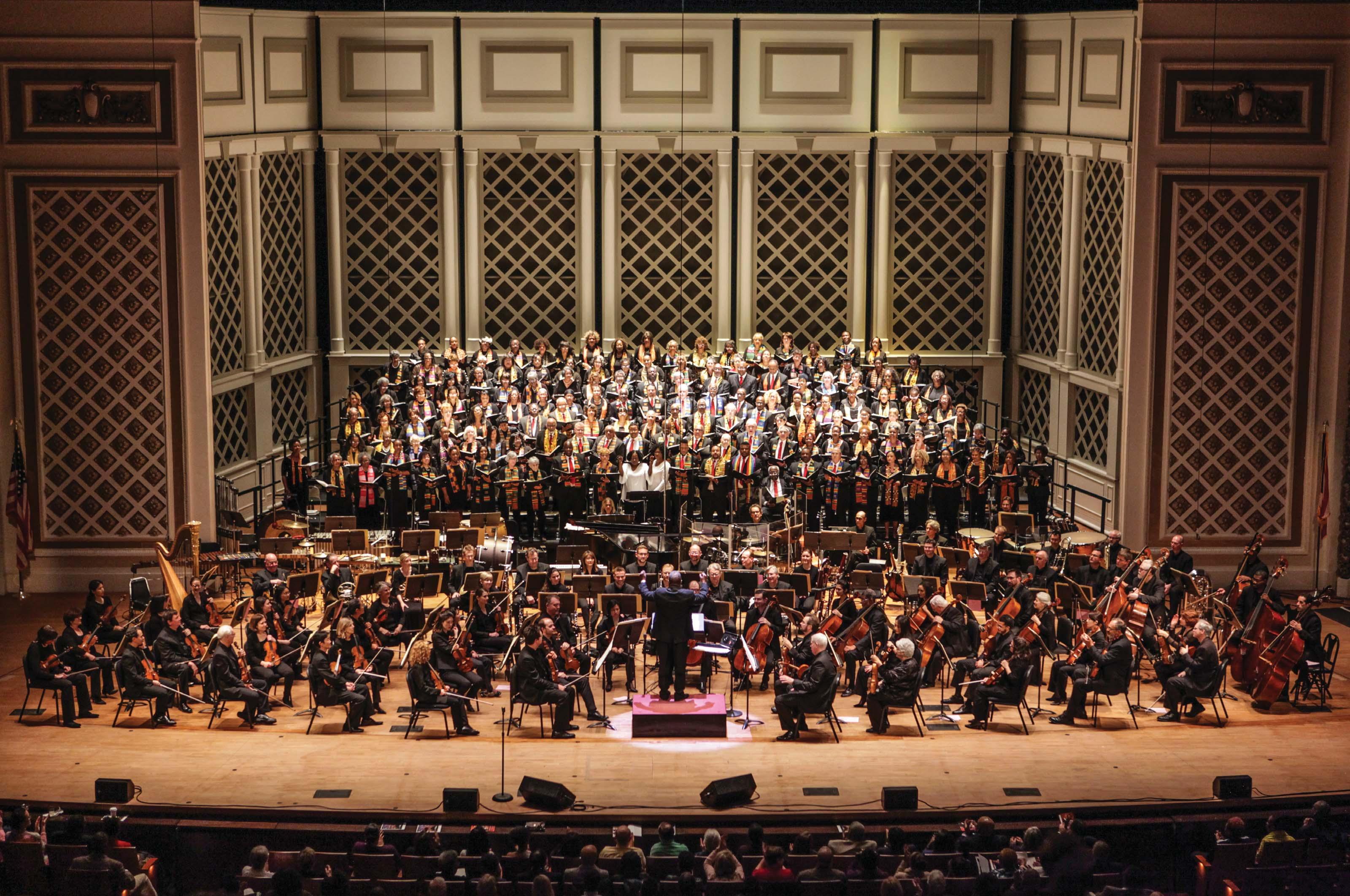
CINCINNATI SYMPHONY ORCHESTRA
to the
Louis Langrée MusicDirector Thankyou
Jeffrey & Jody Lazarow and Janie & Peter Schwartz
for their generous
of
2023 .
FamilyFund of the Greater Cincinnati Foundation
support
Classical Roots
LIFT EV’RY VOICE AND SING








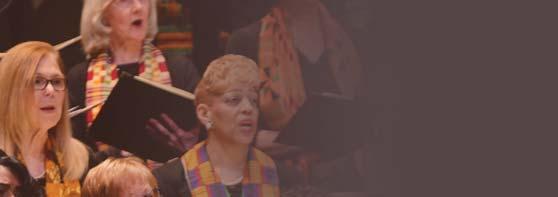














Lift ev’ry voice and sing, ‘Til earth and heaven ring, Ring with the harmonies of Liberty; Let our rejoicing rise High as the listening skies, Let it resound loud as the rolling sea. Sing a song full of the faith that the dark past has taught us, Sing a song full of the hope that the present has brought us; Facing the rising sun of our new day begun, Let us march on ‘til victory is won.

Fanfare Magazine | 43
Thank You CLASSICAL ROOTS SUPPORTERS — The National Endowment for the Arts The Fifth Third Foundation The Jeffrey & Jody Lazarow and Janie & Peter Schwartz Family Fund Taft, Stettinius & Hollister Visit Cincy Keating, Muething & Klekamp d.e. Foxx and Associates JRH Consultants The Voice of Your Customer African-American Chamber of Commerce Check out our NEW DIGITAL PROGRAM! For even more enriching content including full-length biographies, digital content and more, text PROGRAM to 513.845.3024*, visit cincinnatisymphony.org/digital-program, or point your phone’s camera at the QR code. *By texting to this number, you may receive messages that pertain to the organization and its performances; msg & data rates may apply. Reply HELP to help, STOP to cancel.
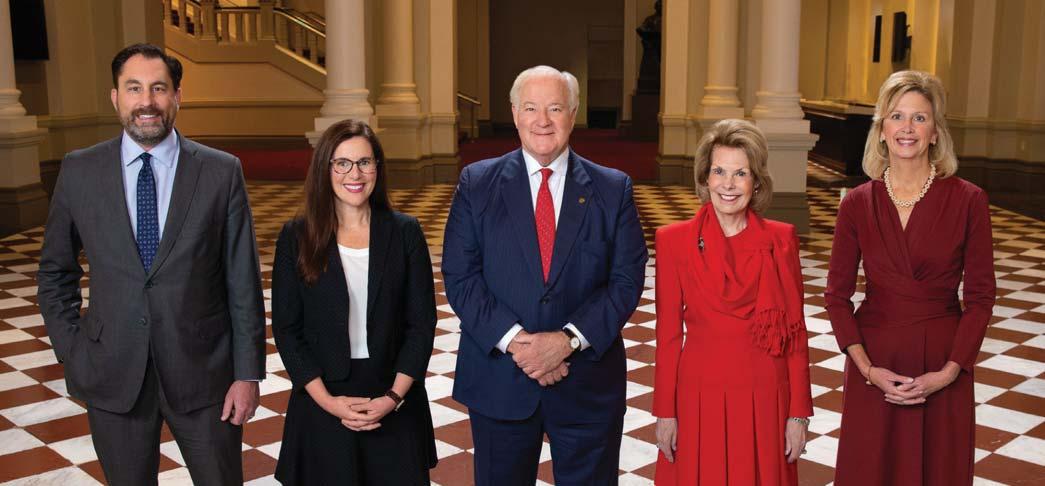







Fort Washington Investment Advisors, Inc., a member of Western & Southern Financial Group, is honored to help advance the Cincinnati Symphony Orchestra’s mission to seek and share inspiration. Learn how we can work together. fortwashington.com FORT WASHINGTON INVESTMENT ADVISORS PROUD PARTNER OF THE CINCINNATI SYMPHONY ORCHESTRA
Bradley J. Hunkler Senior Vice President, Chief Financial Officer, Western & Southern Financial Group, CSO Board Member
Kate C. Brown, CFP® Managing Director, Fort Washington, CSO Board Member
John F. Barrett Chairman, President & CEO, Western & Southern Financial Group
Maribeth S. Rahe President & CEO, Fort Washington
Tracey M. Stofa Managing Director, Head of Private Client Group, Fort Washington
PICTURES AT AN EXHIBITION | 2022–23 SEASON
SAT APR 15, 7:30 pm
SUN APR 16, 2 pm
Music Hall
RAMÓN TEBAR, conductor STEVEN BANKS, saxophone
Nikolai Russian EasterOverture, Op. 36 RIMSKY-KORSAKOV (1844–1908)
Billy CHILDS
Saxophone Concerto CSO CO-COMMISSION (b. 1957)
Part I: Motherland
Part II: If We Must Die
Part III: And Still I Rise
INTERMISSION
Modest MUSSORGSKY Pictures at an Exhibition (1839–1881)
orch. Ravel
Introduction: Promenade
I. Gnomus
Promenade
II. Il Vecchio Castello (“The Old Castle”)
Promenade
III. Tuileries
IV. Bydło
Promenade
V. Ballet des poussin dans leurs coques (“Ballet of Little Chicks in Their Shells”)
VI. Samuel Goldenberg und Schmuÿle
VII. Limoges
VIII. Catacombs
Cum mortuis in lingua mortua (“With the Dead in a Dead Language”)
IX. La Cabane sur des pattes de poule (“The Hut on Fowl’s Legs”) (Baba Yaga)
X. La grande porte de Kiev (“The Great Gate of Kiev”)
These performances are approximately 110 minutes long, including intermission.
The CSO is grateful to CSO Season Sponsor Western & Southern Financial Group
The CSO co-commission of Billy Childs’ Saxophone Concerto is made possible by a generous gift from Kelly Dehan and Rick Staudigel
The Cincinnati Symphony Orchestra is grateful for the support of the Louise Dieterle Nippert Musical Arts Fund of the Greenacres Foundation and the Nina Browne Parker Trust, and for the thousands of people who give generously to the ArtsWave Community Campaign. This project was supported in part by the Ohio Arts Council, which receives support from the State of Ohio and the National Endowment for the Arts
Pre-Concert Talks are made possible by an endowed gift from Melody Sawyer Richardson
WGUC is the Media Partner for these concerts.
The Cincinnati Symphony Orchestra in-orchestra Steinway piano is made possible in part by the Jacob G. Schmidlapp Trust
Steinway Pianos, courtesy of Willis Music, is the official piano of the Cincinnati Symphony Orchestra and Cincinnati Pops.
Listen to this program on 90.9 WGUC June 4, 2023 at 8 pm, followed by 30 days of streaming at cincinnatisymphony.org/replay.
Fanfare Magazine | 45
Composed: 1888
Premiere: December 15, 1888, St. Petersburg, conducted by the composer
Instrumentation: 3 flutes (incl. piccolo), 2 oboes, 2 clarinets, 2 bassoons, 4 horns, 2 trumpets, 3 trombones, tuba, timpani, bass drum, crash cymbals, glockenspiel, suspended cymbals, tam-tam, triangle, harp, strings
CSO notable performances: First CSO Performance: November 1925, Fritz Reiner conducting. Most Recent Performances: (CSO subscription) October 2013, Rafael Payare conducting; (CSO/CSYO Side-by-Side concert) April 2015, John Morris Russell conducting
Duration: approx. 15 minutes
NIKOLAI RIMSKY-KORSAKOV

Born: March 18, 1844, Tikhvin, near Novgorod
Died: June 21, 1908, St. Petersburg, Russia
Russian Easter Overture, Op. 36
Rimsky-Korsakov loved the old ways. Born and raised in Tikhvin, a city some hundred miles east of St. Petersburg that was known for its monastery, he often recalled later in life the sound of the monastery bells tolling over the town and the tales of the traditional peasant life that his grandmothers—one a serf, the other a priest’s daughter—told him as a boy. It is not surprising, therefore, that he turned to perhaps the greatest annual event in 19th-century Russia as a subject for one of his colorful orchestral compositions—“The Bright Holiday,” Easter. Early in 1888 in St. Petersburg, shortly after the Capriccio espagnol had been premiered, he began an overture based on themes associated with the Easter celebration from the Obikhod, a collection of the best-known canticles of the Orthodox Church. He completed the score that summer during a country retreat at Nezhgovitsi, near Luga, when he was also finishing Scheherazade. He led the premiere of the Russian Easter Overture in St. Petersburg’s Club of Nobility on December 15th, in the middle of Advent.
Rimsky-Korsakov wrote, “The rather lengthy, slow introduction to the Overture, on the theme ‘Let God Arise!’ alternating with the ecclesiastical theme ‘An Angel Wailed,’ appeared to me, in its beginning, as it were, the ancient Isaiah’s prophecy concerning the Resurrection of Christ. The gloomy colors seemed to depict the Holy Sepulcher before it had been filled with ineffable light at the moment of Resurrection. The beginning of the Allegro, based on ‘Let Them That Hate Him Flee Before Him,’ suggested the holiday mood of the Greek Orthodox Church service on Christ’s matins; the solemn trumpet voice of the Archangel was replaced by a tonal reproduction of the joyous, almost dance-like bell tolling, alternating now with the sexton’s rapid reading and now with the conventional chant of the priest’s reading the glad tidings of the Evangel. The ‘Obikhod’ theme ‘Christ is Arisen,’ which forms a sort of subsidiary part of the Overture, appears amid the trumpet blasts and the bell tolling, constituting also a triumphant coda.”
—Dr. Richard E. Rodda
BILLY CHILDS
Born: 1957, Los Angeles, California
Saxophone Concerto CSO CO-COMMISSION
Billy Childs has emerged as one of the foremost American composers of his era. A native of Los Angeles, Childs grew up immersed in jazz, classical and popular music influences. A prodigious talent at the piano earned him public performances by age six and, at 16, he was admitted to the USC Community School of the Performing Arts, going on to earn a Bachelor of Music degree in Composition under the tutelage of Robert Linn and Morten Lauridsen.
By the time of his graduation from USC, Childs was already an indemand performer in the L.A. jazz scene. Soon thereafter, he was discovered by trumpet legend Freddie Hubbard, with whom he embarked on a successful performing and recording tour. He recorded and performed with a number of other influential jazz musicians before landing a record deal with Windham Hill Records in 1988. Several other albums followed, earning him two of his Grammy Awards and five nominations.
Simultaneously with his recording career, Childs has occupied a parallel niche as an in-demand composer. His orchestral and chamber commission credits include Esa-Pekka Salonen and the Los Angeles Philharmonic,
46 | 2022–23 SEASON
APR 15–16 PROGRAM NOTES
Nikolai Rimsky-Korsakov
the Detroit Symphony Orchestra under the baton of Leonard Slatkin and the Los Angeles Master Chorale, Kronos Quartet, Lincoln Center Jazz Orchestra, American Brass Quintet, Ying Quartet and Dorian Wind Quintet. Thus far in his career, Childs has garnered 16 Grammy nominations and five awards. In 2006, Childs was awarded a Chamber Music America Composer’s Grant, and in 2009 he was the recipient of a Guggenheim Fellowship. He received the Doris Duke Performing Artist Award in 2013 and the Music Award from The American Academy of Arts and Letters in 2015.
Childs’ Saxophone Concerto was co-commissioned by a consortium of 10 partners, including Kansas City Symphony, Cincinnati Symphony Orchestra, Aspen Music Festival, Chautauqua Institution, New World Symphony, Minnesota Orchestra, Detroit Symphony Orchestra, National Symphony Orchestra, San Diego Symphony and Young Concert Artists. Of his Saxophone Concerto, Billy Childs says:
Concerto for Saxophone and Orchestra is a symphonic poem which strives to chronicle the paradigm of the forced Black American diaspora, as sifted through the prism of my own experience as a Black man in America. When Steven Banks approached me about the piece, the first thing we discussed was the narrative: What particular story would the piece tell? How would it unfold? We decided that, much in the same way that Ravel’s Gaspard de la nuit illustrates three poems by Aloysius Bertrand in three separate movements, so would this concerto do with poems by Black poets. But then I started thinking of the elegantly succinct and fluent structure of Barber’s Symphony No. 1, where, in one multi-sectioned suite, he brilliantly ties together a handful of thematic materials into a seamless and organic whole. So, I started to compose from the vantage point that the poems Steven and I settled on (“Africa’s Lament” by Nayyirah Waheed, “If We Must Die” by Claude McKay, and “And Still I Rise” by Maya Angelou) would be guideposts that inspired the direction of a three-part storyline: Motherland, If We Must Die and And Still I Rise. Also, I wanted to tie the piece together thematically with various melodies and motifs treated in different ways (inverted, augmented, contrapuntally treated, reharmonized, etc.), like a loosely structured theme and variations—except there are several themes used. Motherland. The program of the composition starts out on a positive note; the first theme played solo by the soprano saxophone, and later joined by an uplifting scherzo accompaniment from the orchestra, is meant to evoke a sense of well-being and security as Africans are living in the motherland (Motherland being the name of the first section). Of course, it is understood that within the confines of Africa itself, there were tribal wars, treachery and misery—even slavery; it’s not a utopia I’m trying to illustrate here. Rather, I want to depict a sense of purity—a purity arising from having been thus far unobstructed by the outside destructive forces that would later determine our fate. So, the movement starts with a soprano sax melody that begins as a diatonic motif (accompanied by marimba and pizzicato cello), but then quickly becomes chromatic, modulating to several remote tonalities. After this, a 16th-note pattern in the strings transitions the listener into a sense of foreboding, signaling trouble on the horizon. As the harmonies of the string patterns continue to shift toward a more ominous shade, the soprano saxophone takes on a more urgent tone, playing short bursts of melodic fragments. Then a battle ensues, a battle between the slave traders and the future slaves, as signaled by the triplet figures in the soprano sax, accompanied by triplet patterns in the orchestra, and climaxing in an orchestral tutti section bolstered by a brass fanfare. After a dissonant orchestral hit, the soprano sax utters a melancholy theme as the slaves are being led to the slave ship. This takes us to the first saxophone cadenza, which, to my mind, represents a moment of
Composed: 2022, CSO co-commission
Premiere: February 2023, Kansas City Symphony Orchestra, Ruth Reinhardt conducting.
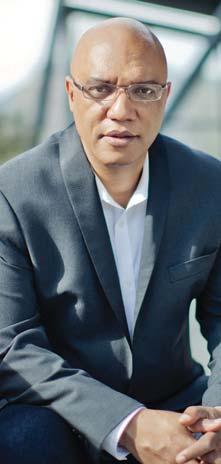
Instrumentation: solo saxophone (alto and soprano), 2 flutes (incl. piccolo, alto flute), oboe, English horn, 2 clarinets, bassoon, contrabassoon, 3 horns, 2 trumpets, 2 trombones, timpani, bass drum, brake drum, chime tree, cowbell, crash cymbals, marimba, snare drum, suspended cymbals, tam-tam, tambour de Basque, triangle, tubular bells, vibraphone, wood block, xylophone, harp, celeste, piano, strings CSO notable performances: These are the work’s CSO premiere.
Duration: approx. 20 minutes
Fanfare Magazine | 47
PROGRAM NOTES
Billy Childs, ©Raj Naik
Check out our NEW DIGITAL PROGRAM! For even more enriching content including full-length biographies, digital content and more, text PROGRAM to 513.845.3024*, visit
cincinnatisymphony. org/digital-program, or point your phone’s camera at the QR code.
painful reflection about being captured like a wild animal and led to a ship, the destination of which is to a future hell.
If We Must Die. Part two of the journey, If We Must Die (inspired by the powerful Claude McKay poem of the same name), begins with the first vision of the slave ship. This is illustrated by a loud tutti blast in the orchestra, following a slow six-measure buildup. The alto saxophone is now the voice of the piece, introducing a rapid 12-tone theme that turns out to be a constant phrase weaving in and out of the entire piece at various moments (the theme made its first appearance back in the first part, during the battle between the African natives and the slave traders). The slaves are boarded onto the ships and the Middle Passage journey to America begins; sweeping rapid scales in the lower strings, woodwinds and harp describe the back and forth movement of the waves. This section develops and reaches a high point with a jarring multiphonic pair of notes in the saxophone followed by a forearm piano cluster; we now see America for the first time, from the point of view of the slaves. A percussion section and saxophone exchange—followed by an antiphonal, almost pointillistic push and pull between the alto saxophone and the orchestra—aims to represent the confusion, rage and terror of the slave trade, where families are ripped apart as humans are bought and sold like cattle. The subsequent section is a mournful lament of despair, meant to outline the psychological depression caused by the sheer brutality of this new slavery paradigm. The melodic theme here, played by the alto sax, is in its original version, whereas the melancholy soprano sax theme near the end of the first movement is the inversion of this melody. Meanwhile, a background pattern played by vibraphone and celesta depicts a slowly and steadily growing anger; this figure gets faster and faster until it overtakes the foreground and brings us into the next scherzolike section. This section is marked by an interplay between the alto sax and the orchestra and is describing resistance, anger and rebellion against being subjected to subhuman treatment over the course of centuries. After the apex of this segment occurs—characterized by five orchestral stabs—the alto saxophone plays a short and tender cadenza that signifies the resilience of Black Americans and introduces the idea of self-love, self-worth and self-determination.
And Still I Rise. This final section of the concerto/tone poem is about Black empowerment. The church has always been a cultural focal point in the Black community, a sanctuary providing psychological and emotional relief from the particular hardships of Black life in America. It is also a place to worship, pray and wrestle with the larger spiritual and existential questions that concern all of humankind. And beyond that (or perhaps because of that), the church is historically a central hub of Black political and cultural activism in America. This is the ethos that the last section of the concerto is reflecting. So, this final chapter of the piece starts out with a hymn-like passage, a variation of the opening folk-like melody at the very beginning of the concerto. It is a plaintive reading orchestrated for just alto saxophone and piano, as though the solo saxophonist were a singer accompanied by a piano during a Sunday church service. Soon, the melodic theme in the alto sax is treated with a lush accompaniment, as a healing self-awareness and love becomes more palpable. This is followed by a march-like ostinato that symbolizes steely determination in the midst of great and formidable obstacles, as the alto sax plays rapidly above the orchestral momentum, until we finally reach the victorious fanfare at the conclusion of the piece. Maya Angelou’s shining poem reminds us (and America) that Black people cannot and will not be held to a position of second-class citizenship—we will still rise.
48 | 2022–23 SEASON
PROGRAM NOTES
*By texting to this number, you may receive messages that pertain to the organization and its performances; msg & data rates may apply. Reply HELP to help, STOP to cancel.
MODEST MUSSORGSKY, arr. Ravel
Born: March 21, 1839, Karevo, Pskov District, Russia
Died: March 28, 1881, St. Petersburg, Russia
Pictures at an Exhibition
In the years around 1850, with the spirit of nationalism sweeping through Europe, several young Russian artists banded together to rid their native art of foreign influences in order to establish a distinctive character for their works. At the front of this movement was a group of composers known as “The Five,” whose members included Mussorgsky, Rimsky-Korsakov, Borodin, César Cui and Mily Balakirev. Among the allies that The Five found in other fields was the artist and architect Victor Hartmann, with whom Mussorgsky became close personal friends. Hartmann’s premature death at 39 stunned the composer and the entire Russian artistic community. The noted critic Vladimir Stasov organized a memorial exhibit of Hartmann’s work in February 1874, and it was under the inspiration of that showing of his late friend’s works that Mussorgsky conceived his Pictures at an Exhibition for piano. Maurice Ravel made his orchestration of the score for Sergei Koussevitzky’s Paris concerts in 1923. Promenade. According to Stasov, this recurring section depicts Mussorgsky “roving through the exhibition, now leisurely, now briskly, and, at times sadly, thinking of his friend.” Gnomus. Hartmann’s drawing is for a fantastic wooden nutcracker representing a gnome who gives off savage shrieks while he waddles about. Promenade—The Old Castle. A troubadour sings a doleful lament before a foreboding, ruined ancient fortress. Promenade—Tuileries. Hartmann’s picture shows a corner of the famous Parisian garden filled with nursemaids and their youthful charges. Bydło. Hartmann’s painting depicts a rugged wagon drawn by oxen. The peasant driver sings a plaintive melody (solo tuba) heard first from afar, then close-by, before the cart passes away into the distance. Promenade— Ballet of Little Chicks in Their Shells. Hartmann’s costume design for the 1871 fantasy ballet Trilby shows dancers enclosed in enormous egg shells. Samuel Goldenberg and Schmuÿle. [Ed. Richard Taruskin, in Musorgsky: Eight Essays and an Epilogue, correctly transcribes the title as “ ‘Samuel’ Goldenburg und ‘Schmuÿle.’ ”
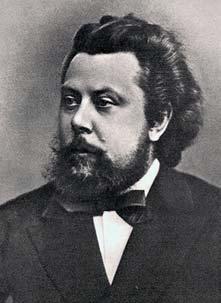
“The use of quotation marks points up the fact that the two zhidy (an antisemitic slur for diaspora Jews) have the same first name: one Germanized, the other in the original Yiddish. They are in fact one zhid, not two. The portrayal is a brazen insult: no matter how dignified or sophisticated or Europeanized a zhid’s exterior, on the inside he is a jabbering, pestering little ‘Schmuÿle.’” This movement’s longstanding title of “Two Jews: Rich and Poor” was invented by Stasov for his 1881 obituary of Mussorgsky. —Tyler M. Secor] Limoges. A lively sketch of a bustling market. Catacombs, Roman Tombs | Cum Mortuis in Lingua Mortua. Hartmann’s drawing shows him being led by a guide with a lantern through cavernous underground tombs. The movement’s second section, titled “With the Dead in a Dead Language,” is a mysterious transformation of the “Promenade” theme. The Hut on Fowl’s Legs. Hartmann’s sketch is a design for an elaborate clock suggested by Baba Yaga, a fearsome witch of Russian folklore who flies through the air. Mussorgsky’s music suggests a wild, midnight ride. The Great Gate of Kiev was inspired by Hartmann’s plan for a gateway for the city of Kiev in the massive old Russian style, crowned with a cupola in the shape of a Slavic warrior’s helmet. The majestic music suggests both the imposing bulk of the edifice (never built, incidentally) and a brilliant procession passing through its arches.
—Dr. Richard E. Rodda
Composed: 1874, orchestrated by Ravel in 1923
Premiere: Orchestral version premiered May 3, 1923 in Paris, conducted by Sergei Koussevitzky
Instrumentation: 2 flutes (incl. piccolo), piccolo, 3 oboes (incl. English horn), 2 clarinets, bass clarinet, 2 bassoons, contrabassoon, alto saxophone, 4 horns, 3 trumpets, 3 trombones, tuba, timpani, bass drum, bell in E-flat, crash cymbals, glockenspiel, ratchet, snare drum, suspended cymbals, tam-tam, triangle, whip, xylophone, 2 harps, celeste, strings
CSO notable performances: First CSO
Performance: December 1929, Fritz Reiner conducting. Most Recent: December 2017, Andrey Boreyko conducting.
Recording: Pictures at an Exhibition (1970, Decca), Erich Kunzel conducting the CSO; and Mussorgsky: Pictures at an Exhibition (2008, Telarc), Paavo Järvi conducting the CSO— Grammy winner for Best Surround Sound Album, 51st Annual Grammy Awards.
Duration: approx. 33 minutes
Fanfare Magazine | 49
PROGRAM NOTES
Modest Mussorgsky
FRI APR 21, 11 am
SAT APR 22, 7:30 pm
Music Hall
MATTHIAS PINTSCHER, conductor
Gustav MAHLER Symphony No. 7 in E Minor (1860–1911)
Langsam—Allegro
Nachtmusik
Scherzo: Schattenhaft (Fliessend, aber nicht schnell)
Nachtmusik II
Rondo—Finale
These performances are approximately 80 minutes long. There is no intermission.
The CSO is grateful to CSO Season Sponsor Western & Southern Financial Group and Concert Sponsor Peter Landgren and Judith Schonbach Landgren
This concert is lovingly donated to the memory of Laura Gamble Thomson from the estate of the Thomson family.
The Cincinnati Symphony Orchestra is grateful for the support of the Louise Dieterle Nippert Musical Arts Fund of the Greenacres Foundation and the Nina Browne Parker Trust, and for the thousands of people who give generously to the ArtsWave Community Campaign. This project was supported in part by the Ohio Arts Council, which receives support from the State of Ohio and the National Endowment for the Arts
Pre-Concert Talks are made possible by an endowed gift from Melody Sawyer Richardson
WGUC is the Media Partner for these concerts.
The Cincinnati Symphony Orchestra in-orchestra Steinway piano is made possible in part by the Jacob G. Schmidlapp Trust
Steinway Pianos, courtesy of Willis Music, is the official piano of the Cincinnati Symphony Orchestra and Cincinnati Pops.
Listen to this program on 90.9 WGUC June 25, 2023 at 8 pm, followed by 30 days of streaming at cincinnatisymphony.org/replay.
50 | 2022–23 SEASON
MAHLER SYMPHONY NO. 7 | 2022–23 SEASON
Peter Landgren and Judith Schonbach Landgren
GUSTAV MAHLER
Born: July 7, 1860, Kalischt Bohemia
Died: May 18, 1911, Vienna
Symphony No. 7 in E Minor
The Seventh Symphony was a product of the happiest years Gustav Mahler knew. His career as director of the Vienna Opera was at its apex (in 1904 and 1905, he introduced his highly regarded version of Fidelio, conducted an important production of Don Giovanni with decor by Alfred Roller, and prepared for revivals of Così fan tutte and The Abduction from the Seraglio), his life with Alma was satisfying, his family had grown to include two healthy daughters, and his music was gaining recognition. Just as the Sixth Symphony was being completed in September 1904, he quickly wrote the two Andantes that were to become the “night music” movements of the Symphony No. 7. His hectic performance and administrative schedule in Vienna during the winter months precluded further work on the new piece. When he returned to his lakeside summer home the following May, however, “Not a note would come,” he recalled. “I plagued myself for two weeks until I sank into gloom.... then I tore off to the Dolomites. There I was led the same dance, and at last gave up and returned home.... I got into the boat to be rowed across. At the first stroke, the theme (or rather the rhythm and character) of the introduction to the first movement came into my head—and in four weeks, the first, third and fifth movements were done.” The Symphony was completed in short score before Mahler returned to Vienna in the autumn and finished early in 1906. It was to be the last work of that halcyon period in Mahler’s life.
Between the completion of the Seventh Symphony in 1906 and its premiere in Prague under the composer’s direction on September 19, 1908, Mahler’s life was turned upside-down. In 1907, three separate shocks befell him that crushed his happiness and hastened his early death at the age of 50: in March, against the continuing background of budgetary distress, hide-bound conservatism, and muted but pervasive anti-Semitism, Mahler began to feel that his tenure at the Court Opera had been a failure, and resigned; three months later, Dr. Friedrich Kovacs of Vienna diagnosed a serious heart condition, and advised Mahler that he would have to cease all strenuous activity and limit his professional responsibilities if the disease were not to prove rapidly fatal; and in July, the composer’s beloved four-year-old daughter, Maria, died of scarlet fever and diphtheria. The man who conducted the premiere of the Seventh Symphony was much changed from the man who composed it. Alma recorded that he worked incessantly on revising the score’s orchestration during the long series of rehearsals, and that his stamina and self-confidence seemed particularly taxed by preparations for the performance. Although the Prague orchestra won Mahler’s approval, and the event generated considerable excitement, Alma reported that the piece had only a “succès d’estime.... The Seventh was scarcely understood by the public.” The work was heard again during Mahler’s lifetime in Hamburg, Munich, Amsterdam and Vienna, but it failed to achieve wide acceptance and came early in its history to be regarded as something of a step-child among the symphonies; it was not heard in the United States until Frederick Stock conducted it in Chicago in 1921.

The first movement, amply endowed with such forward-looking harmonic devices as superimposed fourths and incipient polytonality, is a vast sonata design prefaced by a stern introduction (led by the tenor tuba) containing motivic germs from which several later themes grow.
Composed: 1904–05
Premiere: September 19, 1908 in Prague, conducted by the composer
Instrumentation: 4 flutes (incl. piccolo), piccolo, 3 oboes, English horn, 3 clarinets, bass clarinet, E-flat clarinet, 3 bassoons, contrabassoon, 4 horns, 3 trumpets, 3 trombones, tenor tuba, tuba, timpani, bass drum, bass drum with attached cymbal, cowbell, crash cymbals, deep bells, glockenspiel, herdbells, rute, small bells, snare drum, suspended cymbals, tam-tam, tambourine, triangle, 2 harps, guitar, mandolin, strings
CSO notable performances: First Performance: March 1931, Fritz Reiner conducting. Most Recent Performance: February 2011, Paavo Järvi conducting.
Duration: approx. 80 minutes
Fanfare Magazine | 51 APR 21–22 PROGRAM NOTES
Gustav Mahler
BOLD MOVES FESTIVAL




















Scan the QR code for more information TICKETS START AT
SAMANTHA RIESTER, DANIEL WAGNER | PHOTOGRAPHY: AARON M. CONWAY
EMAIL VISIT
An embryonic version of the main theme is given by unison trombones, only to be interrupted by another somber proclamation from the tenor tuba. The horns then take over the trombones’ theme to launch the main body of the movement. A sentimental melody, very Viennese in manner, is given by the violins to provide contrast. The center of the movement is occupied by development of motives from the introduction and main theme. Solos in the bass and tenor trombones and the tenor tuba lead to the recapitulation.
The Symphony’s three central movements (Nachtmusik I—Scherzo— Nachtmusik II) are grouped together within the massive bulwark of the opening movement and the Rondo-Finale. The Nachtmusik (“Night Music”) I, in an unsettled C major-minor tonality, is one of Mahler’s most fantastic inspirations. Burnett James found here “a sense of tattered ghostly armies marching by night, of bugle calls and responses as well as those of birds and beasts; not so much barbarous armies that clash by night, as of remnants of those which have clashed.” Bright dawn does not immediately follow this musical night, however, since the ensuing Scherzo is among the most haunted, spectral and disquieting movements in the symphonic literature. “A spook-like, nocturnal piece,” Mahler’s friend and protégé Bruno Walter called it; Ronald Kinloch Anderson allowed that if the surrounding movements are “night” music, this Scherzo might well be “nightmare” music. “A glimpse of darkness, of the skull beneath the skin with its mocking grimace, of the essential horror,” wrote James. This devil’s waltz of a movement is followed by the delicate Nachtmusik II, whose simplicity, quietude and gentle guitar and mandolin sounds serve to quell the apprehension of the Scherzo and to prepare for the sunburst of the Symphony’s close.
The Rondo-Finale has, with justification, been criticized for a lack of coherence and an uninhibited boisterousness sometimes bordering on the banal. In the context of the Seventh Symphony, however, the finale is an appropriate emotional and stylistic closure to the expressive and formal progression circumscribed by the earlier movements, achieving a mood that Paul Stefan said is “on top of a mountain.”
—Dr. Richard E. Rodda
Check out our NEW DIGITAL PROGRAM! For even more enriching content including full-length biographies, digital content and more, text PROGRAM to 513.845.3024*, visit cincinnatisymphony. org/digital-program, or point your phone’s camera at the QR code.
Nouveau Program Recitals

Fanfare Magazine | 53
PROGRAM NOTES
*By texting to this number, you may receive messages that pertain to the organization and its performances; msg & data rates may apply. Reply HELP to help, STOP to cancel.
Recital Nouveau Showcase
APR 29, 3 pm MAY 6, 7 pm Novice/Apprentice
Location: Church of our Savior Location: Wilks Studio, Music Hall
hear our Nouveau Program students in FREE recitals this spring.
Come
CSO CHAMBER PLAYERS | 2022–2023 SEASON
FRI APR 21, 7:30 pm
Harry T. Wilks Studio, Music Hall
String Quartet No. 3 in A Major, Op. 41 (1810–1856) Andante espressivo—Allegro molto moderato
Robert SCHUMANN
Assai agitato
Adagio molto
Finale: Allegro molto vivace
Rebecca Kruger Fryxell, violin
Rachel Charbel, violin
Christopher Fischer, viola
Isabel Kwon, cello
INTERMISSION
Octet in F Major, D. 803 (1797–1828) Adagio—Allegro—Più allegro
Franz SCHUBERT
Adagio
Scherzo
Andante—Variations. Un poco più mosso—Più lento Menuetto Andante molto—Allegro—Andante molto—Allegro molto
Stefani Matsuo, violin
Philip Marten, violin
Rebecca Barnes, viola
Hiro Matsuo, cello
Boris Astafiev, bass
Benjamin Freimuth, clarinet
Martin Garcia, bassoon
Elizabeth Freimuth, horn
This performance is approximately 120 minutes long, including intermission.
YOU’RE INVITED to greet the musicians after the concert.
The CSO Chamber Players series has been endowed in perpetuity by the ELEANORA C.U. ALMS TRUST, Fifth Third Bank, Trustee
Steinway Pianos, courtesy of Willis Music, is the official piano of the Cincinnati Symphony Orchestra and Cincinnati Pops.
54 | 2022–23 SEASON
ROBERT SCHUMANN

Born: June 8, 1810, Zwickau, Germany
Died: July 29, 1856, Endenich, Germany
String Quartet No. 3 in A Major, Op. 41
Nineteenth-century composer Robert Schumann was a sprinter rather than a long-distance runner: he tended to create in brief, concentrated bursts of productivity, energized and fixated on the project at hand. In the year 1842, it was chamber music that possessed him as he produced his Piano Quintet in E-flat, Op. 44, and the Piano Quartet in E-flat, Op. 47. He crafted his three string quartets, Op. 41, over a period of five weeks, dashing off the third over the span of several days. Before setting quill to paper, he had prepared methodically by studying the quartets of Haydn, Mozart and Beethoven, as well as those of lesser-known musicians whose works appeared in Schumann’s reviews in the Neue Zeitschrift für Musik. Once the creative process was finished, he polished the final draft and dedicated the set of three quartets to his friend and colleague Felix Mendelssohn.
From the very first phrase of the third quartet, Mozart and Haydn are already present. The expansiveness and sweeping romanticism of Schumann’s piano works are gone, replaced with an economy of gesture and concision of form. Yet the intentionality and commitment to every line of melody are the unambiguous musical fingerprints of Schumann the Romantic.
The work opens with an undefined tonality, meandering through a progression of chromatic harmonies, briefly settling into the home key of A major before moving on to more remote tonalities. A descending perfect fifth, the two-note “sigh” motive that opens the work, defines the form as the movement progresses, marking the beginning of each of the major sections of Schumann’s sonata-form movement. Two main themes unfold, bridged with sequential passages. A stormy development follows, based on the juxtaposition of the elements that constitute the first theme: the falling fifth motive and the quick eighth-note motive. This same “sigh” motive punctuates the last moment as the falling fifth fully resolves in the cello.
In place of the expected scherzo, the composer substitutes a theme with variations that opens with a rhythmically ambiguous motive. The following variations employ a range of strategies to maintain interest: imitation and counterpoint contrast with lyric chromaticism as the movement evolves, moving into tension and agitation, then into a canon between violin and viola before finally finding peace in the unexpected key of F-sharp major.
The Adagio is the most extended movement of the work. An obsessive rhythmic figure in the second violin moves the movement forward. Angst lies immediately below the surface, only calmed by the reappearance of the first theme. As the movement closes, the voicing of the final chord betrays the uneasiness—assuaged but not fully resolved.
This same rhythmic figure launches the final movement, a rondo form in which several independent sections alternate, rhythmically displaced in a way that keeps the listener off balance. An expansive coda sweeps the quartet to a satisfying conclusion. It is with this rousing finish and the finality of its A-major cadence that Schumann not only crowns his set of string quartets, but has the last word in the genre until his friend, Johannes Brahms writes his own string quartets in 1873.
—Dr. Scot Bozza
Composed: 1842
Premiere: January 18, 1848 at the Leipzig Gewandhaus
Duration: approx. 30 minutes
Fanfare Magazine | 55
APR 21 PROGRAM NOTES
Robert Schumann, 1839
Composed: March 1824, on commission from clarinetist Ferdinand Troyer
Premiere: Fall of 1827
Duration: approx. 63 minutes
FRANZ SCHUBERT
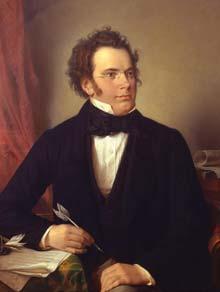
Born: January 31, 1797, Vienna, Austria
Died: November 19, 1828, Vienna, Austria
Octet in F Major, D. 803

Nineteen-year-old Franz Schubert, in his diary entry for June 16, 1816, declared his independence from Beethoven and decried what he saw as an inappropriate marriage of tragedy with humor: “…the eccentricity that is common among most composers nowadays, and is due almost entirely to one of our greatest German artists—that eccentricity which combines and confuses the tragic and the comic, the agreeable with the repugnant, heroism with howling, and the holiest with mockery, without distinguishing among them.” He concluded, sanctimoniously, that the effect of Beethoven’s music was to “drive people to madness instead of dissolving them in love, provoke them to laughter rather than lifting them up to God.” He reversed that position eight years later, in 1824, when Count Ferdinand Troyer requested a companion piece to Beethoven’s Septet, Op. 20. Schubert obliged with his own Octet, D. 803, emulating not only the tragi-comic character of Beethoven’s work, but also the structure and key relationships.
This about-face is understandable in light of the upheaval in Schubert’s professional and personal life that winter. Many of Schubert’s friends were leaving Vienna for more prestigious opportunities elsewhere. The death of the wife of his patron, Ignaz Sonnleithner, in whose home many of his works had been premiered for a curated list of wealthy dilletantes, had limited the composer’s access to potential patrons. So he threw himself into work on the Octet. As the artist Moritz von Schwind noted at the
56 | 2022–23 SEASON
PROGRAM NOTES
Franz Schubert, oil painting by Wilhelm August Rieder, 1875
Celebrating
Taftlaw.com
those who elevate our community’s vibrant cultural scene.
time, “Schubert has for some time been working on an octet with greatest enthusiasm. If you go to see him during the day, he says, ‘How are you?’ and carries on with writing, at which point you just leave.” Working at lightning speed, Schubert finished the work by March of that year.
Beethoven’s Septet and Schubert’s Octet are both divertimenti, lighthearted 18th-century instrumental works of multiple movements for strings, winds or both. Schubert’s instrumentation follows Beethoven’s model, with violin, viola, cello, double bass, clarinet, horn and bassoon, to which Schubert adds a second violin, thus affording himself the range and color possibilities of the early 18th-century orchestra. Schubert also emulated Beethoven’s six-movement structure, as well as many of its components: the slow introductions of the first and last movements, the juxtaposition of the minuet—already outmoded—with its more fashionable replacement, the scherzo, and the set of variations that stands as the centerpiece of the work.
Schubert integrates the Adagio introduction into the subsequent Allegro by foreshadowing its rhythmic motive, as well as by bringing the opening theme back at its Adagio original speed. This is genius: he doesn’t actually slow the tempo, but rather, he tricks the ear by laying out the music in note values double the original to match the opening. In the tranquil second movement, we see the centrality of the clarinet to the work. This was no coincidence—Troyer, who commissioned it, was himself an excellent clarinetist. The scherzo follows, and then the set of variations. Schubert was unapologetic about incorporating the best tunes from his vocal music into his instrumental works, as he does here, retooling the vocal duet from his unperformed Singspiel, Die Freunde von Salamanka
The fifth movement shows its distinctly Austrian roots in the lilting charm of its trio, a Ländler
Schubert begins the final movement with a brooding Andante in the parallel minor key before launching into a cheerful Allegro, mixing pathos with wit in direct contradiction to his youthful criticism of Beethoven. He brings the work full circle with the reappearance of the introduction from the first movement before leading the work to a spirited finish.
The premiere of the Octet did not take place until 1827, in a performance at the residence of Archduke Randolph that included many of the players who had premiered Beethoven’s Septet. Criticized for its length, the Octet was almost immediately regarded as a footnote to the spectacularly fashionable Septet, which by then had achieved a status that even Beethoven himself found irritating. As was the case with much of Schubert’s music, the complete score only first appeared in print half a century later, when it assumed a place of pride among the most important works for strings and winds of the 19th century.
—Dr. Scot Bozza
Fanfare Magazine | 57 PROGRAM NOTES
2022–23 Season
SUN APR 23, 7:30 pm, Music Hall
MATTHIAS PINTSCHER, conductor SAMUEL LEE, conductor DANIEL WILEY, conductor ARI PERAZA-WEBB, cello
Piotr Ilyich Romeo and Juliet Overture-Fantasie TCHAIKOVSKY (1840–1893)
Samuel BARBER Concerto for Cello and Orchestra, Op. 22 (1910–1981)
I. Allegro moderato
Dmitri SHOSTAKOVICH Symphony No. 5 in D Minor, Op. 47 (1906–1975)
IV. Allegro non troppo
Support provided by The Charles H. Dater Foundation and The Marge & Charles J. Schott Foundation
The CSO thanks Coney Island for its generous sponsorship of the Cincinnati Symphony Youth Orchestras.

The Cincinnati Symphony Orchestra is grateful for the support of the Louise Dieterle Nippert Musical Arts Fund of the Greenacres Foundation and for the thousands of people who give generously to the ArtsWave Community Campaign. This project was supported in part by the Ohio Arts Council, which receives support from the State of Ohio and the National Endowment for the Arts
The Cincinnati Symphony Youth Orchestras is a program of the Cincinnati Symphony Orchestra and receives generous support in the form of rehearsal space from the University of Cincinnati College-Conservatory of Music and Walnut Hills High School.
WGUC is the Media Partner for these concerts.
The Cincinnati Symphony Orchestra in-orchestra Steinway piano is made possible in part by the Jacob G. Schmidlapp Trust
Steinway Pianos, courtesy of Willis Music, is the official piano of the Cincinnati Symphony Orchestra and Cincinnati Pops.
58 | 2022–23 SEASON
CSO/CSYO SIDE-BY-SIDE CONCERT | 2022–23 SEASON
The Charles H. Dater Foundation
The Marge & Charles J. Schott Foundation
This performance is approximately 60 minutes long. There is no intermission.
PIOTR ILYICH TCHAIKOVSKY
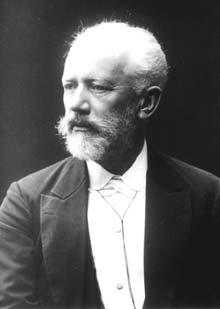
Born: May 7, 1840 in Kamsko-Votkinsk, Russia
Died: November 6, 1893 in St. Petersburg, Russia
Romeo and Juliet Overture-Fantasie
Composer Mily Balakirev (1837–1910) was something of a busybody. He was not content simply writing his own music—he wanted a hand in the creation of music by several other composers as well. He was the leader of the group of Russian nationalists known as “The Five.”
Balakirev wrote to Tchaikovsky in the fall of 1869, suggesting the composition of an overture based on Shakespeare’s Romeo and Juliet Balakirev included some music he felt appropriate for the opening; he described exact working methods to help Tchaikovsky find inspiration, including prescribing the tonalities for the various sections of the piece. Tchaikovsky went so far as to submit the completed composition to Balakirev for corrections.
Balakirev liked much of the work, but he criticized the first theme. It reminded him of a Haydn quartet whereas he felt it should have the “oldworld catholicism” of a Liszt chorale. He did not like the slow introduction at all, and he did not approve of the ending. Tchaikovsky meekly made the revisions, although he eventually became dissatisfied and worked on further extensive changes of his own.
It is not surprising that Tchaikovsky readily complied with Balakirev’s suggestion for a piece based on Shakespeare’s love-tragedy. The subject was appropriate because the composer himself was at the time involved in a hopeless love. A few months earlier, he had fallen under the spell of singer Désirée Artôt. Tchaikovsky had not yet acknowledged his homosexuality, and he was eager to meet this enticing lady. He did see her frequently, and he began to talk about marriage. But Artôt herself prevented these difficult issues from ever coming up by marrying instead a Spanish baritone named Mariano Padilla y Ramos.
Tchaikovsky had really thought he was in love. Composing Romeo and Juliet must have been a sufficient catharsis, though, as the composer subsequently resumed his life without undue grief.
Balakirev wrote him, upon receiving the finished score, with praise but also a rather unkind irony:
It is simply fascinating. I often play it and should like to hug you for it. In it is the tenderness and longing of love, and much more that ought to go straight to the heart of the immortal Albrecht. When I play this I visualize you wallowing in your bath with Artôt-Padilla herself rubbing your stomach ardently with fragrant soap suds.
Surely Tchaikovsky was pleased with Balakirev’s praise; his reaction to the reference to his non-affair, however, is not recorded.
—Adapted from Jonathan D. Kramer
Composed: 1869
Premiere: March 16, 1870 by the Russian Musical Society conducted by Nikolai Rubinstein, in Moscow
Duration: approx. 21 minutes
Check out our NEW DIGITAL PROGRAM! For even more enriching content including full-length biographies, digital content and more, text PROGRAM to 513.845.3024*, visit cincinnatisymphony. org/digital-program, or point your phone’s camera at the QR code.
*By texting to this number, you may receive messages that pertain to the organization and its performances; msg & data rates may apply. Reply HELP to help, STOP to cancel.
Fanfare Magazine | 59
Piotr Ilyich Tchaikovsky
APR 23 SIDE-BY-SIDE PROGRAM NOTES
Composed: 1945, commissioned by the Boston Symphony and Sergei Koussevitzky
Premiere: April 5, 1946, with Raya Garbousova as the soloist and Sergei Koussevitzky conducting the Boston Symphony
Duration: approx.
7 minutes
SAMUEL BARBER

Born: March 9, 1910 in West Chester, Pennsylvania
Died: January 23, 1981 in New York
Concerto for Cello and Orchestra, Op. 22, Movement I: Allegro moderato
Samuel Barber was born into a musical family (his aunt was famed Metropolitan Opera singer Louise Homer) and began his musical training at a young age. At age 14, he entered the young artist program at the newly founded Curtis Conservatory (known today as the Curtis Institute of Music), where he studied voice, piano and composition. After graduating high school, Barber entered the adult professional school at Curtis, where he met people who would influence the rest of his life, including Mary Louise Curtis Bok, who introduced Barber to the Schirmer family (music publishers), and Gian Carlo Menotti, who became his lifelong partner in both life and the music profession. Barber gradated in the spring of 1934, and it wasn’t long thereafter that his career as a composer skyrocketed.
By the time Koussevitzky commissioned Barber to write a cello concerto for his friend and fellow Russian expatriate Raya Garbousova, Barber had already composed several of his soon-to-be famous works, including the Adagio for Strings (premiere conducted by Arturo Toscanini), Symphony in One Movement (the first work written by an American to be played at the Salzburg Festival) and his Violin Concerto (first conducted by Fritz Reiner at Curtis, then given its public premiere with The Philadelphia Orchestra under Eugene Ormandy with violinist Albert Spalding). Koussevitzky had already premiered Barber’s Second Symphony in 1944 and had commissioned a choral-symphonic work in 1942, but the premiere of the latter was delayed until 1954.
The commission for the cello concerto came while Barber was serving in the Army Air Corps. Barber was drafted in 1942, but was allowed to write music while in service. He insisted on hearing Garbousova play so that he could understand her performance style, sound and technical abilities. Barber and Garbousova worked together closely in 1945 until the work was all but finished (it still needed to be orchestrated) in September 1942. The result is a piece that was highly tailored to Garbousova’s playing, with extreme technical demands on the part of the soloist. Garbousova championed this concerto but, after her retirement, the piece languished due in large part to its difficulty. Barber edited the solo cello part before the work was published in 1950, and he intended to edit the cello part further, but illness and other projects prevented him from doing so.
—Tyler M. Secor
60 | 2022–23 SEASON 2
PROGRAM NOTES
Samuel Barber
DMITRI SHOSTAKOVICH

Born: September 25, 1906, Saint Petersburg, Russia
Died: August 9, 1975 in Moscow
Symphony No. 5 in D Minor, Op. 47, Movement IV: Allegro non troppo

On January 28, 1936, an editorial in Pravda, the daily paper of the Soviet Communist Party, brutally attacked Shostakovich’s opera Lady Macbeth of the Mtsensk District, denouncing it as “muddle instead of music.” This condemnation could easily have resulted in the composer’s deportation to Siberia, but in the end, he was spared and granted a comeback. Less than a year later, his Fifth Symphony premiered with resounding success in Leningrad on November 21, 1937.
The symphony is definitely a work of reconciliation; although it doesn’t shy away from portraying tragedy, it still reaches a hard-won victory at the end.
The last movement’s opening march tune is suddenly interrupted, and a slower, more introspective section begins with a haunting horn solo. After this quiet intermezzo, the march tune returns, but played at half its original tempo. Merely a shadow of its former self, the melody is elaborated contrapuntally until it suddenly alights on a bright D-major chord in full orchestral splendor, which then remains unchanged until the end.
—Peter Laki
Composed: 1937


Premiere: November 21, 1937, Evgeny Mravinsky conducting the Leningrad Philharmonic
Duration: approx. 10 minutes
Fanfare Magazine | 61
PROGRAM NOTES
Cincinnati’s
automotive
the historic
of Ault Park. Sunday, June 11 | 10 a.m. –4 p.m. BENEFITING JUVENILE ARTHRITIS PROGRAMS OF THE ARTHRITIS FOUNDATION For Tickets or Information: www.OhioConcours.com
Dmitri Shostakovich
premier collector car show presents 200 of the most elegant and rare examples of
excellence in
gardens
Celebrating the arts and the joy they bring to life every day.
PNC is proud to be the Pops Se Sponsor and to support the Cincinnati Symphony Orchestra and Cincinnati Pops. Thank you for helping to make the Greater Cincinnati region a beautiful place to call home.

©2022 The PNC Financial Services Group, Inc. All rights reserved. PNC Bank, National Association. Member FDIC CON PDF 0618-0106
TUES APR 25, 7:30 pm
Music Hall
BEN FOLDS

LUCAS WALDIN, conductor
After a sold-out performance with the Pops in 2017, Ben Folds is back!
Widely regarded as one of the major music influencers of our generation, this genre-bending, multi-platinum-selling artist brings his brilliant lyrics, moving melodies and clever wit for this one-night-only performance.
Selections will be announced from the stage.
The Cincinnati Pops Orchestra is grateful to Pops Season Sponsor PNC
The Cincinnati Symphony Orchestra is grateful for the support of the Louise Dieterle Nippert Musical Arts Fund of the Greenacres Foundation and the Nina Browne Parker Trust, and for the thousands of people who give generously to the ArtsWave Community Campaign. This project was supported in part by the Ohio Arts Council, which receives support from the State of Ohio and the National Endowment for the Arts
The Cincinnati Symphony Orchestra in-orchestra Steinway piano is made possible in part by the Jacob G. Schmidlapp Trust
Steinway Pianos, courtesy of Willis Music, is the official piano of the Cincinnati Symphony Orchestra and Cincinnati Pops.
Fanfare Magazine | 63
BEN FOLDS | 2022–2023 SEASON
FRI APR 28, 7:30 pm SAT APR 29, 7:30 pm SUN APR 30, 2 pm Music Hall
RAGTIME In Concert
JOHN MORRIS RUSSELL, conductor
ALTON FITZGERALD WHITE, director
Book by TERRENCE McNALLY Music by STEPHEN FLAHERTY Lyrics by LYNN AHRENS
Based on the novel Ragtime by E. L. DOCTOROW
CAST
A full cast listing will appear in an insert that will be available on the concert dates.
Original orchestrations by William David Brohn, additional orchestrations by Kim Scharnberg
Ragtime in Concert was created for the Boston Pops, in honor of Keith Lockhart’s 25th Anniversary with support from the Cincinnati Pops and Arts Commons, the Calgary Philharmonic, and Theatre Calgary.
Ragtime In Concert is presented through special arrangement with Music Theatre International (MTI). All authorized performance materials are also supplied by MTI. mtishows.com
Any video and/or audio recording of this production is strictly prohibited.
The Cincinnati Pops Orchestra is grateful to Pops Season Sponsor PNC
The Cincinnati Symphony Orchestra is grateful for the support of the Louise Dieterle Nippert Musical Arts Fund of the Greenacres Foundation and the Nina Browne Parker Trust, and for the thousands of people who give generously to the ArtsWave Community Campaign. This project was supported in part by the Ohio Arts Council, which receives support from the State of Ohio and the National Endowment for the Arts
The Cincinnati Symphony Orchestra in-orchestra Steinway piano is made possible in part by the Jacob G. Schmidlapp Trust
Steinway Pianos, courtesy of Willis Music, is the official piano of the Cincinnati Symphony Orchestra and Cincinnati Pops.
64 | 2022–23 SEASON
RAGTIME IN CONCERT | 2022–2023 SEASON
ACT I
Opening/Ragtime .........................................................................................................................................Full Company Goodbye, My Love .....................................................................................................................................................Mother Journey On ......................................................................................................................................Father, Tateh, Mother
Evelyn’s Introduction
The Crime of the Century............................................Evelyn Nesbit, Mother’s Younger Brother, Ensemble
What Kind of Woman ...............................................................................................................................................Mother A Shtetl Iz Amereke (Ellis Island) ...................................................................Tateh, The Little Girl, Immigrants
Success .................................................................Tateh, The Little Girl, J.P. Morgan, Harry Houdini, Ensemble
His Name Was Coalhouse Walker ...................................................................Coalhouse Walker Jr., Ensemble
The Gettin’ Ready Rag..........................................................................................Coalhouse Walker Jr., Ensemble Henry Ford ........................................................................................Henry Ford, Coalhouse Walker Jr., Ensemble
Nothing Like the City .....................................................................Tateh, Mother, The Little Boy, The Little Girl
Your Daddy’s Son ..........................................................................................................................................................Sarah
New Music ..............................Father, Mother, Younger Brother, Sarah, Coalhouse Walker Jr., Ensemble
The Wheels of a Dream .................................................................................................Coalhouse Walker Jr., Sarah
INTERMISSION
ACT II
Entr’acte
The Night That Goldman Spoke at Union Square ................................................Mother’s Younger Brother, Emma Goldman, Ensemble Gliding .................................................................................................................................................................................Tateh
The Trashing of the Car/President.........................................................................................................................Sarah Till We Reach That Day ..............................................................................................Sarah’s Friend, Full Company
Coalhouse’s Soliloquy ..................................................................................................................Coalhouse Walker Jr.
What a Game ............................................................................................................Father, The Little Boy, Ensemble
Buffalo Nickel Photoplay, Inc...........................................................................................Baron Ashkenazy (Tateh)
Our Children ...........................................................................................................Mother, Baron Ashkenazy (Tateh)
Sarah Brown Eyes............................................................................................................Coalhouse Walker Jr., Sarah
He Wanted to Say ...........Emma Goldman, Younger Brother, Coalhouse Walker Jr., Coalhouse’s Men
Back to Before .......................................................................................................................................Mother, Ensemble
Make Them Hear You ...................................................................................................................Coalhouse Walker Jr.
Epilogue: Ragtime ........................................................................................................................................Full Company
Fanfare Magazine | 65
RAGTIME IN CONCERT
SAINT-SAËNS ORGAN SYMPHONY | 2022–23 SEASON
FRI MAY 5, 7:30 pm SAT MAY 6, 7:30 pm
Music Hall
Friday and Saturday, May 5–6 LOUIS LANGRÉE, conductor VÍKINGUR
ÓLAFSSON,
piano
Hector BERLIOZ Overture to Les francs-juges (1803–1869) (“The Judges of the Secret Court”), Op. 3
Maurice RAVEL Concerto in G Major for Piano and Orchestra (1875–1937)
Allegramente: Andante. Tempo I
Adagio assai
Presto
INTERMISSION
Symphony No. 3 in C Minor, Op. 78, Organ (1835–1921)
Camille SAINT-SAËNS
Part I: Adagio. Allegro moderato
Poco adagio
Part II: Allegro moderato. Presto Maestoso. Allegro
These performances are approximately 110 minutes long, including intermission.
The CSO is grateful to CSO Season Sponsor Western & Southern Financial Group
The Cincinnati Symphony Orchestra is grateful for the support of the Louise Dieterle Nippert Musical Arts Fund of the Greenacres Foundation and the Nina Browne Parker Trust, and for the thousands of people who give generously to the ArtsWave Community Campaign. This project was supported in part by the Ohio Arts Council, which receives support from the State of Ohio and the National Endowment for the Arts
Pre-Concert Talks are made possible by an endowed gift from Melody Sawyer Richardson
WGUC is the Media Partner for these concerts. The Cincinnati Symphony Orchestra in-orchestra Steinway piano is made possible in part by the Jacob G. Schmidlapp Trust Steinway Pianos, courtesy of Willis Music, is the official piano of the Cincinnati Symphony Orchestra and Cincinnati Pops.
Listen to this program on 90.9 WGUC July 9, 2023 at 8 pm, followed by 30 days of streaming at cincinnatisymphony.org/replay.
66 | 2022–23 SEASON
SAINT-SAËNS ORGAN SYMPHONY | 2022–23 SEASON
SUN MAY 7, 2 pm
Music Hall
Sunday, May 7
LOUIS LANGRÉE, conductor
Hector BERLIOZ Overture to Les francs-juges (1803–1869) (“The Judges of the Secret Court”), Op. 3
Hector BERLIOZ Marche des Gardes (“March of the Guards”) from Les francs-juges, Op. 3
Camille SAINT-SAËNS Danse macabre (1835–1921)
Camille SAINT-SAËNS Symphony No. 3 in C Minor, Op. 78, Organ
Part I: Adagio. Allegro moderato Poco adagio
Part II: Allegro moderato. Presto Maestoso. Allegro
This performance is approximately 75 minutes long. There is no intermission
The CSO is grateful to CSO Season Sponsor Western & Southern Financial Group
The Cincinnati Symphony Orchestra is grateful for the support of the Louise Dieterle Nippert Musical Arts Fund of the Greenacres Foundation and the Nina Browne Parker Trust, and for the thousands of people who give generously to the ArtsWave Community Campaign. This project was supported in part by the Ohio Arts Council, which receives support from the State of Ohio and the National Endowment for the Arts
Pre-Concert Talks are made possible by an endowed gift from Melody Sawyer Richardson
WGUC is the Media Partner for these concerts.
The Cincinnati Symphony Orchestra in-orchestra Steinway piano is made possible in part by the Jacob G. Schmidlapp Trust
Steinway Pianos, courtesy of Willis Music, is the official piano of the Cincinnati Symphony Orchestra and Cincinnati Pops.
Listen to this program on 90.9 WGUC July 9, 2023 at 8 pm, followed by 30 days of streaming at cincinnatisymphony.org/replay.
Fanfare Magazine | 67

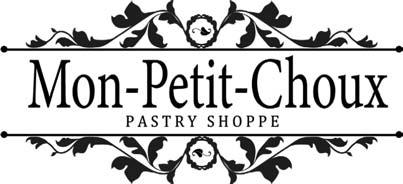






We specialize in: • European pastries • Weddings • Special occasions • Events A beautiful pastry shop in the heart of Downtown Cincinnati business district. 24A W Court Street, Cincinnati, Ohio 45202. (513) 631-8333 | monpetitchouxltd@gmail.com
HECTOR BERLIOZ

Born: December 11, 1803, La Côte-Saint-André, France
Died: March 8, 1869, Paris
Overture to Les francs-juges (“The Judges of the Secret Court”), Op. 3 (Fri-Sun)
Marche des Gardes (“March of the Guards”) from Les francs-juges, Op. 3 (Sun)
Hector Berlioz left his home province for Paris at the age of 18. Obeying the wishes of his physician father, he began to study medicine, although he knew he wanted to be a composer. Despite strong paternal disapproval, he took up the study of composition as a private student of the then-famous Jean-François Le Sueur. Less than three years later, Berlioz’s first large-scale work, a mass, was given a performance at St. Roch’s church in Paris. It was only after this successful début that Berlioz, in October 1826, enrolled in Le Sueur’s composition class at the Conservatoire. The ambitious young man immediately tackled what was probably the most difficult genre of all—an opera. The somewhat convoluted libretto, written by Berlioz’s friend Humbert Ferrand, had a vaguely medieval flavor, reflecting the way the Romantic generation liked to think about the “dark” Middle Ages. The title Les francs-juges referred to the members of those mysterious secret tribunals that had been introduced into recent European literature by Goethe’s drama
Götz von Berlichingen
We need not dwell too long on the details of the story, replete with usurped thrones, fair maidens forced to marry tyrants, and man-crushing bronze statues lurking in dark caverns. The opera was never performed and survives only in fragmentary form. The overture and five numbers are all that remain—plus the “March of the Guards,” recycled as the famous “March to the Scaffold” in Symphonie fantastique
The overture and two excerpts were performed at the Conservatoire on May 26, 1828. The composer probably played percussion in this performance, as he did again when the overture was reprised the next year. The overture was a huge success and became the first work by Berlioz to be performed outside France.
The slow introduction opens with a soft lyrical melody that is followed by the trombone theme that made such a strong impression on the orchestra musicians. The fast section beings with an agitated string theme, contrasted by a lyrical melody that comes from a quintet for flute and strings that Berlioz had written at the age of 15. Even the stern Dr. Louis Berlioz admitted that this theme had merit. When Hector played it for him on his flute, the father said: “Ah, now that is what I call music!” But that was apparently not sufficient reason for him to accept his son’s musical ambitions.
The central part of the overture is made up of mysterious tremolos and excited accompanying figures in the strings, over which soars a new melody, played by flutes and clarinets and moving in extremely slow note values. It was, as Berlioz later disclosed, the theme of a now-lost prayer aria from the opera. Berlioz specifically noted in the score that the orchestra was here portraying two different characters at the same time: the strings had to be “rude and wild,” while winds had to play in a “soft and melancholic” manner. The lyrical theme returns, to be subjected to a rather adventurous development, at the end of which it is combined with a trombone theme from earlier to create a truly spectacular ending.
—Peter Laki
Composed: 1826
Premiere: The Overture and two excerpts were premiered at the Paris Conservatiore, May 26, 1828.
Instrumentation:
Overture: 2 flutes (incl. 2 piccolos), 2 oboes, 2 clarinets, 2 bassoons, contrabassoon, 4 horns, 2 trumpets, cornet, 3 trombones, 2 ophicleide, timpani, bass drum, crash cymbals, suspended cymbals, strings. Marche des Gardes: 2 flutes, 2 oboes, 2 clarinets, 4 bassoons, 4 horns, 2 trumpets, 2 cornets, 3 trombones, 2 tubas, 2 timpani, bass drum, crash cymbals, field drum, snare drum, strings
CSO notable performances: (Overture)
First Performance: October 1944, Eugene Goossens conducting. Most Recent: November 1966, Erich Kunzel conducting. (Marche des Gardes) These are the first CSO performances of the March.
Duration: approx. 12 minutes for the Overture, 5 minutes for the March
Fanfare Magazine | 69
MAY 5–7 PROGRAM NOTES
Hector Berlioz
Composed: 1931
Premiere: January 14, 1932, Ravel conducting, with pianist Marguerite Long and the Lamoureux Orchestra in Paris
Instrumentation: solo piano, flute, piccolo, oboe, English horn, clarinet, E-flat clarinet, 2 bassoons, 2 horns, trumpet, trombone, timpani, bass drum, crash cymbals, slapstick, suspended cymbals, tamtam, tamburo, triangle, wood block, harp, strings
CSO notable performances: First
Performance: October 1932, Eugene Goossens conducting, with Daniel Ericourt, piano. Most
Recent: November 2021, Roderick Cox conducting, with Conrad Tao, piano. Other: March 1997, Carnegie Hall, Jesús López Cobos conducting, with Alicia De Larrocha, piano. November 1945, Leonard Bernstein conducting from the piano.
Duration: approx. 23 minutes
MAURICE RAVEL

Born: March 7, 1875, Ciboure France
Died: December 28, 1937, Paris
Concerto in G Major for Piano and Orchestra (Fri-Sat)
Some of the most original piano music in the first half of the 20th century was written by Maurice Ravel. In the early Jeux d’eau (1901) and the great cycles Miroirs (1904–05) and Gaspard de la nuit (1908), Ravel developed what he himself called “a special type of writing for the piano,” and he defended his priority against critics who tried to compare his style to that of his older contemporary, Debussy.
Himself a highly competent pianist, Ravel was a frequent performer of his own music (his performances survive on record). Thus it is not entirely surprising that he should want to write a concerto; what is surprising is that it took him so long to do so.
Ravel had been toying with the idea of a concerto as early as 1906. He was thinking about basing it on Basque themes, from his native region in the Pyrenees. The projected work even had a title: Zaspiak-Bat, which means “The Seven are One” in the Basque language—an allusion to the unity of the four Spanish and three French Basque provinces. But ZaspiakBat seems never to have progressed beyond the stage of initial sketches; World War I intervened, and Ravel, who had enlisted for military duty, complained in a letter to a friend: “Impossible to continue Zaspiak-Bat, the documents having remained in Paris.” Instead, the composer took up other projects, and the concerto plans remained on the back burner until the late 1920s.
It was in 1928, after his American tour, that he began seriously to think about a concerto again. In the wake of this tour—and the recent, wildly successful premiere of Boléro—Ravel wanted to make the most of his popularity, and decided to return to the concert stage as a pianist, as his friend Igor Stravinsky had done a few years earlier. His work on a piano concerto was interrupted by one-armed pianist Paul Wittgenstein’s commission to write a concerto for the left hand only. Ravel worked on both concertos more or less at the same time.
Ravel emphasized his debt to Mozart and Saint-Saëns in the G-major Concerto, but there are also many signs of jazz influence in the piece, particularly in the first movement. Ravel had been interested in jazz since the early 1920s when it first became the rage in Paris. He had included a “Blues” movement in his Sonata for Violin and Piano, written between 1923 and 1927. His enthusiasm grew considerably, however, after his visit to the United States.
The first movement has many of the trappings of classical sonata form: a succession of contrasting themes, and a clearly recognizable moment at which the recapitulation begins. But the emphasis, as always with Ravel, is not so much on motivic development as on the juxtaposition of self-contained melodies. The first one of these melodies is introduced by the piccolo in a very fast tempo; the piano accompanies it with lively figurations. This theme has been said to suggest a Basque folk melody: it probably contains material from the abandoned Zaspiak-Bat concerto. After this first theme, the tempo slows down, and the high-pitched E-flat clarinet plays the first of several jazz-related motifs. The movement has a magnificent piano cadenza at the end, preceded by two other striking solo passages: one for the harp, and one in which one woodwind instrument after another plays virtuoso flourishes against the sustained melody of the first horn.
The second movement opens with a long, expressive piano solo. It is a single uninterrupted phrase that goes on for more than three minutes;
70 | 2022–23 SEASON
PROGRAM NOTES
Maurice Ravel
after a while, the piano is joined by the flute, oboe, and clarinet. There is a middle section where the piano plays in a faster motion against the slowmoving melodies in the orchestra. The initial long phrase then returns, played by the English horn, and accompanied by the crystalline 32nd notes of the piano. Ravel said that he had modelled this movement on the “Larghetto” from Mozart’s Clarinet Quintet (K. 581); the connection is subtle, but can be clearly heard in the softly moving long phrases in 3/4 time and the rich ornamentation of the melodic lines.
The last movement is a lively romp in perpetual motion. Like the first movement, it is a cavalcade of themes including allusions to marches, dances, and folk songs, and containing some jazzy “smears” in the trombones and demanding solos for the woodwinds. The high jinks continue until the timpani and the bass drum put an abrupt end to the music.
As he said in the statement quoted above, Ravel was planning to play the piano part in his concerto himself. Sadly, he was prevented from doing so by the onset of his illness which proved fatal. The G-major Concerto remained Ravel’s penultimate composition, a fact belied by the work’s freshness and youthful vigor. One may understand Ravel’s distress when, in the last year of his life and gravely ill, he burst into tears: “I still have so much music in my head. I have said nothing. I have so much more to say.”
—Peter Laki
CAMILLE SAINT-SAËNS
Born: October 9, 1835, Paris
Died: December 16, 1921, Algiers
Symphony No. 3 in C Minor, Op. 78, Organ (Fri-Sun)
With his third and last symphony, Camille Saint-Saëns set out to write a masterpiece. At 51, he was—and had long been—one of the most famous musicians in France, equally successful as a composer, conductor, pianist, and organist. (For many years, he served as the organist of the Madeleine, one of the landmark churches in Paris.) His career had started with the ringing endorsement of such luminaries as Berlioz, Liszt, and Gounod, and he had come to be considered a luminary himself.

At the same time, he had reason to feel that some of his best efforts in composition were not sufficiently appreciated. He had won great acclaim for his concertos and other virtuosic concert pieces. However, his symphonic poems, such as Le rouet d’Omphale (“Omphale’s Spinning Wheel”) met with little enthusiasm in Paris, and his opera Samson et Dalila (“Samson and Delilah”), which was particularly dear to his heart, was premiered, thanks only to Liszt’s unflagging support, in Weimar. At home, Saint-Saëns found himself locked in a bitter rivalry with César Franck, his senior by 13 years. Saint-Saëns was antagonized by Franck’s students and was increasingly isolated in the Société Nationale de Musique, which he had founded. This situation led to his resignation as the society’s president soon after the premiere of the Third Symphony.
Saint-Saëns, then, wanted to make a major statement, and the invitation of the London Philharmonic Society to write a symphony provided just the incentive he needed. He conducted the premiere in London on May 19, 1886, to a standing ovation; the symphony was a success in France as well, when it was performed there. The published score was dedicated to the memory of Liszt, who had passed away on July 31, 1886.
In a program note written for the premiere, Saint-Saëns offered a detailed outline of the themes, described the basic structure of the work, and emphasized his innovations in orchestration. Some of these innovations clearly came from the symphonic poems of his mentor Liszt,
Composed: 1886
Premiere: May 19, 1886, Royal Philharmonic Society (then called the Philharmonic Society) in London, conducted by the composer
Instrumentation: 3 flutes (incl. piccolo), 2 oboes, English horn, 2 clarinets, bass clarinet, 2 bassoons, contrabassoon, 4 horns, 3 trumpets, 3 trombones, tuba, timpani, bass drum, crash cymbals, suspended cymbals, triangle, organ, piano four-hands
CSO notable performances: First
Performance: May 1923 on a May Festival performance with Fritz Reiner conducting (CSO was the house orchestra by then) and Charles Heinroth, organ. First CSO
Subscription: January 1939 Eugene Goossens conducting with Parvin Titus, organ. Also, Fritz Reiner conducted this piece on a February 1925 “Pops” Concert with Marcel Dupré, organ. Most Recent: March 2017 for a Tour Preview Concert, Louis Langrée conducting. Other: March 2017 Asian tour, Louis Langrée conducting.
Duration: approx. 36 minutes
Fanfare Magazine | 71
PROGRAM NOTES
Camille Saint-Saëns
PROGRAM NOTES
Check out our NEW DIGITAL PROGRAM!
For even more enriching content including full-length biographies, digital content and more, text PROGRAM to 513.845.3024*, visit cincinnatisymphony. org/digital-program, or point your phone’s camera at the QR code.

who had used the organ in his Hunnenschlacht (“Battle of the Huns”).
Saint-Saëns’s method of motivic transformation is also indebted to Liszt.
The traditional four movements of the symphony are telescoped into two parts, with the opening Allegro and the slow movement constituting Part I, and the scherzo with the finale Part II. Moreover, motivic correspondences permeate all the movements so that the entire work is extremely rich in internal connections.
The main motif on which all four movements are based first appears in the opening Allegro moderato, preceded by a short introduction. The motif is developed extensively, along with a contrasting lyrical idea. It is in the ensuing Poco adagio that we hear the organ for the first time.
In the Allegro moderato that opens Part ll, new variants of the motif emerge. The Trio section, in a faster tempo and in C major as opposed to the scherzo’s C minor, is distinguished by rapid piano scales as a special orchestral color. Both the scherzo and the trio are heard for a second time. Then a short contrapuntal section, based on the main motif, serves as a transition into the finale, which begins with the lush sounds of the organ and the piano (four hands). The main motif is now transformed into a solemn chorale and then into a fugue, where contrapuntal voices imitate one another. The work ends with a magnificent climax.
Saint-Saëns was well aware of the symphony’s significance in his output. He never attempted to write another symphony; instead, he returned to operas, concertos and chamber music. As he wrote about the “Organ Symphony” years later: “I have given all that I had to give. What I have done I shall never do again.”
—Peter Laki
72 | 2022–23 SEASON
972-977-5107 office 513-231-2800 ataylor@comey.com R e ady y t o plant t your r roots s this s spring? ? Le t’s s find d the e p er fe c t hom e for r you! Proudly Supporting the Cincinnati Symphony Orchestra Family. Realtor®
*By texting to this number, you may receive messages that pertain to the organization and its performances; msg & data rates may apply. Reply HELP to help, STOP to cancel.
CAMILLE SAINT-SAËNS

Danse Macabre (Sun)
Death is “something that proverbially comes to us all, death is universal and yet universally strange, an object of fascination and of fear… ancient cultures freely personified death… [and] created allegorical figures, like the Grim Reaper…. Death unites us all across the ages,” writes Michael Kerrigan in the introduction to his 2017 book, The History of Death. The living’s fascination with the concept, and the equalizing power of death, certainly extend beyond written history, but the Danse macabre (“Dance of Death”) as an allegorical concept in the arts (drama, music and visual arts) in Western European culture begins to appear during the Middle Ages. The Black Death and the Hundred Years’ war resulted in a cultural obsession with death and the visual depiction of the dead leading all living, regardless of status (king, queen, pope, shopkeeper, musician, etc.), to their graves.
The “Dance of Death” concept waned in popularity during the Renaissance, but found a resurgence in 19th-century French Romantic literature, especially the work of the symbolist poets. The inspiration for Saint-Saëns’ Danse macabre is found in the poetry of one such symbolist poet, Henri Cazalis (1840–1909).
Cazalis had a penchant for dark topics, especially death, including his “Égalité, fraternité…” (“Equality, fraternity”), which tells the story of Death playing his violin as skeletons dance on their graves. In 1872, Saint-Saëns wrote an art song version of the poem.
In 1874, Saint-Saëns reworked the art song into a tone poem, with most of the vocal part covered by the solo violin. Saint-Saëns made good use of the many sounds available in an orchestra to illustrate Cazalis’ text. The xylophone depicts the rattling bones of a skeleton. The scordatura (or “out of tune”) violin provides the sinister tune for the skeletons to dance to and employs the tritone interval, which, in the Renaissance, was named “the devil in music” (diabolus in musica) due to its dissonant and unstable sound.
Saint-Saëns also uses the Dies irae, a Gregorian chant from the Requiem Mass (or Mass for the Dead), an oft-quoted chant that represents death or the Last Judgement.
Listen as the harp strikes midnight on Halloween and Death tunes his violin to awaken the dead to dance upon their graves until the cock’s crow at dawn (represented by the oboe), and Death plays a final consoling tune for the dead to return to their graves.
Saint-Saëns included the following fragment from Cazalis’ poem on the front of his manuscript score, which has been translated (anonymously) in English scores as:
Zig, zig, zig, Death in a cadence
Striking with his heel a tomb, Death at midnight plays a dance-tune, Zig, zig, zag, on his violin.
The winter wind blows, and the night is dark; Moans are heard in the linden-trees.
Through the gloom white skeletons pass, Running and leaping in their shrouds.
Zig, zig, zig, each one is frisking; The bones of the dancers are heard to clatter— But Sst! of a sudden they quit the round, They push forward, they fly; the cock has crowed!
—Tyler M. Secor
Composed: 1874
Premiere: January 24, 1875
Instrumentation: 2 flutes, piccolo, 2 oboes, 2 clarinets, 2 bassoons, 4 horns, 2 trumpets, 3 trombones, tuba, timpani, bass drum, chimes, crash cymbals, suspended cymbals, triangle, xylophone, harp, strings CSO notable performances: First Performance: December 1906, Frank Van der Stucken conducting (an all-Saint-Saëns concert for which Saint-Saëns was present). Most Recent Performance: (CSO) November 1949, Thor Johnson conducting; (Pops) October 2018, Damon Gupton conducting. Recording: Chiller (1989, Telarc label), Erich Kunzel conducting the Cincinnati Pops.
Duration: approx. 7 minutes
Fanfare Magazine | 73
PROGRAM NOTES
CSO Music Director Frank van der Stucken (standing) with Camille Saint-Saëns, for the CSO’s all-Saint-Saëns concert (including the Danse Macabre) in December 1906.
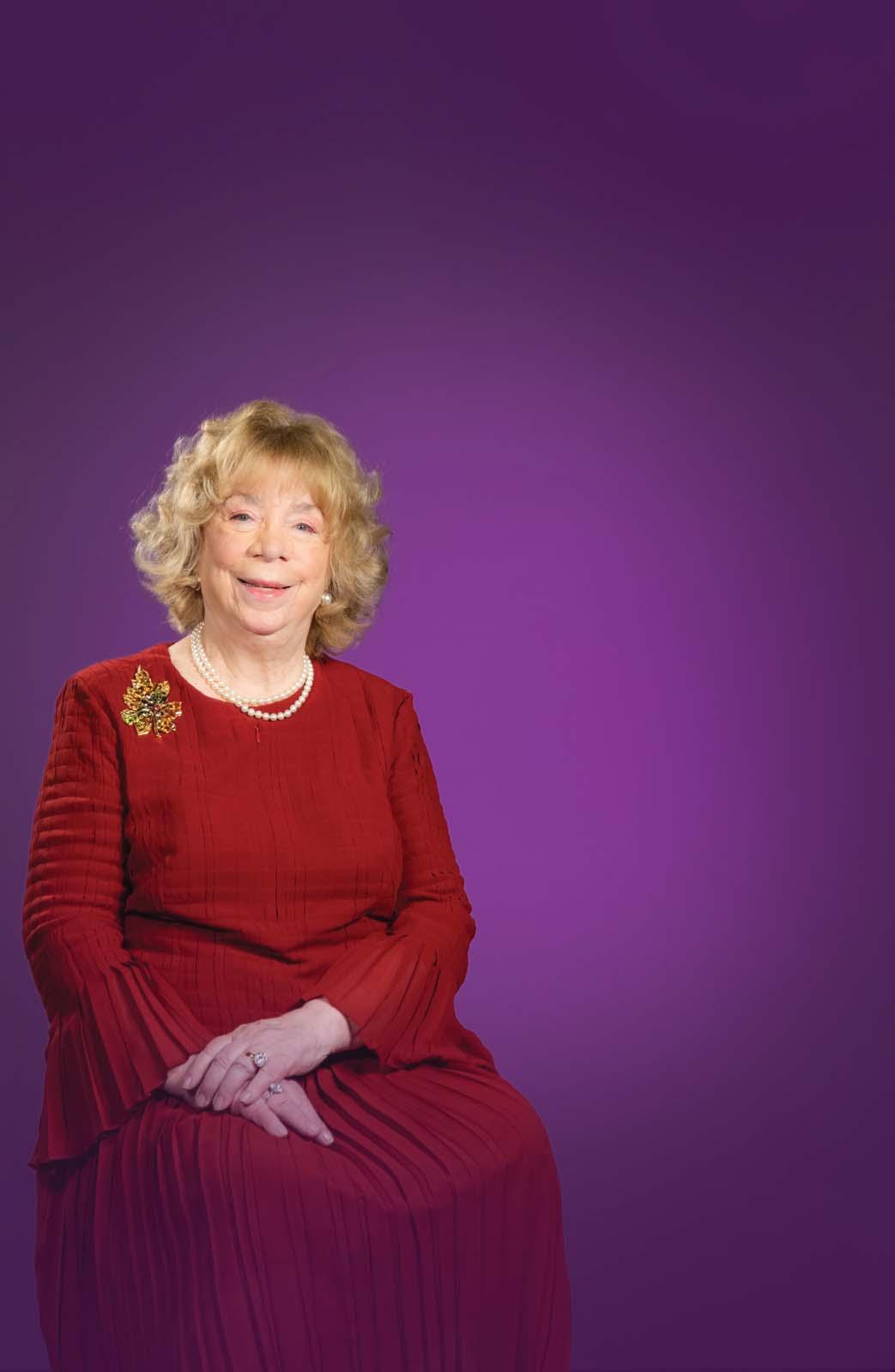





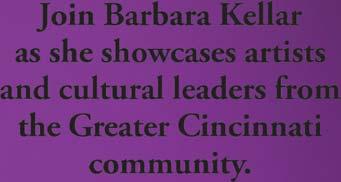
- Innterrvview/Discussiion Program
6:30PM CET
8:30PM CET ARTS
Barbara Kellar as she showcases artists and cultural leaders from the Greater Cincinnati community. www.CETconnect.org
Emmy Award Winner Regional
SATURDAY
SUNDAY
Join
FRI MAY 12, 11 am SAT MAY 13, 7:30 pm
Music Hall
LOUIS LANGRÉE, conductor
COURTNEY BRYAN, piano
Darius MILHAUD La création du monde (“The Creation of the World”), Op. 81 (1892–1974)
Courtney BRYAN House of Pianos WORLD PREMIERE, CSO CO-COMMISSION (b. 1982)
I. rent party
II. jam session
III. homecoming
IV. sanctuary
V. praise house
INTERMISSION
Edward K. (“Duke”) Night Creature ELLINGTON Blind Bug (1899–1974) Stalking Monster transcr. Berger Dazzling Creature
George GERSHWIN An American in Paris (1898–1937)
ed. Clague
These performances are approximately 115 minutes long, including intermission.
The CSO is grateful to CSO Season Sponsor Western & Southern Financial Group and Presenting Sponsor HORAN
The Cincinnati Symphony Orchestra is grateful to Kari and Jon Ullman for their support of the CSO co-commissioned World Premiere of Courtney Bryan’s Piano Concerto.
The Cincinnati Symphony Orchestra is grateful for the support of the Louise Dieterle Nippert Musical Arts Fund of the Greenacres Foundation and the Nina Browne Parker Trust, and for the thousands of people who give generously to the ArtsWave Community Campaign. This project was supported in part by the Ohio Arts Council, which receives support from the State of Ohio and the National Endowment for the Arts
Pre-Concert Talks are made possible by an endowed gift from Melody Sawyer Richardson
WGUC is the Media Partner for these concerts.
The Cincinnati Symphony Orchestra in-orchestra Steinway piano is made possible in part by the Jacob G. Schmidlapp Trust Steinway Pianos, courtesy of Willis Music, is the official piano of the Cincinnati Symphony Orchestra and Cincinnati Pops.
Listen to program selections on 90.9 WGUC July 16, 2023 at 8 pm, followed by 30 days of streaming at cincinnatisymphony.org/replay.
Fanfare Magazine | 75
AN AMERICAN IN PARIS | 2022–23 SEASON
Composed: 1923
Premiere: October 25, 1923, Paris, by the Swedish Ballet
Instrumentation: 2 flutes (incl. piccolo), oboe, 2 clarinets, alto saxophone, bassoon, horn, 2 trumpets, trombone, timpani, bass drum with pedal, cowbell, crash cymbals, snare drum, tambour de Basque, tambourin Provençal, tenor drum, wood block, piano, strings
CSO notable performances: First
Performance: March 1970, Erich Kunzel conducting. Most Recent: February 2021, Louis Langrée conducting.
Duration: approx. 16 minutes
DARIUS MILHAUD
Born: September 4, 1892, Aix-en-Provence
Died: June 22, 1974, Geneva, Switzerland
La création du monde (“The Creation of the World”), Op. 81
In 1922, Milhaud was on tour to the United States as composer, lecturer and pianist. “When I arrived in New York,” he wrote, “I told the newspaper men interviewing me that European music was being considerably influenced by American music. ‘But whose music?’ they asked me; ‘MacDowell’s or Carpenter’s?’ ‘Neither the one nor the other,’ I answered, ‘I mean jazz.’” Milhaud sought out jazz performances at every opportunity. He heard Leo Reisman’s band (which played, he recorded, with “extreme refinement”) and the famous orchestra of Paul Whiteman (“a sort of RollsRoyce of dance music”), the ensemble that would help Gershwin “make a lady of jazz” (said Walter Damrosch) two years later with the Rhapsody in Blue. Milhaud’s strongest impressions of American jazz, however, were not received in the swank mid-town hotels and night clubs, but further uptown: “Harlem had not yet been discovered by the snobs and aesthetes: we were the only white folks there. The music I heard was absolutely different from anything I had ever heard before and was a revelation to me. Against the beat of the drums melodic lines crisscrossed in a breathless pattern of broken and twisted rhythms.... When I went back to France, I never wearied of playing over and over the Black Swan records I had purchased in a little shop in Harlem.”

“As soon as I came back from the United States,” Milhaud continued, “I got in touch with [the designer] Fernand Léger and [the writer] Blaise Cendrars, with whom I was to work on a new ballet for Rolf de Maré [impresario of the Swedish Ballet]. Cendrars chose for the subject of his scenario the creation of the world, going for his inspiration to African folklore.... Léger wanted to adapt primitive Negro art and paint the dropcurtain and the scenery with African divinities expressive of power and darkness.... At last, in La création du monde, I had the opportunity I had been waiting for to use those elements of jazz to which I had devoted so much study. I adopted the same orchestra as used in Harlem [two flutes, oboe, two clarinets, E-flat saxophone, bassoon, horn, two trumpets, trombone, much percussion, two violins, cello and bass], and I made wholesale use of the jazz style to convey a purely classical feeling.”

Robert Lawrence gave the following synopsis of La création du monde:
The chaos of pre-Creation is seen on a darkened stage as the curtain rises. Three aboriginal deities move among a tangled mass of bodies, muttering incantations. The mass responds to their charms. First a tree rises and lets fall one of its seeds, from which rises still another tree. Now animals appear, every one of them springing—as in the process of evolution—from a more primitive predecessor. Finally, as the three deities pronounce new spells, Man and Woman emerge. They perform a dance of desire, excited by the presence of primeval sorcerers and witch doctors. At last the frenzy of the celebrants subsides; the dancers disperse; and Man and Woman are left alone in a symbolic embrace which assures the fertility of human life.
—Dr. Richard E. Rodda
76 | 2022–23 SEASON
MAY 12–13 PROGRAM NOTES
Darius Milhaud
Below: Scale model showing costume and set designs for La création du monde, by Fernand Léger, artist, costume and set designer, 1923.
COURTNEY BRYAN
Born: 1982, New Orleans, Louisiana
House of Pianos WORLD PREMIERE, CSO CO-COMMISSION
“A pianist and composer of panoramic interests” (The New York Times), Courtney Bryan is currently composer-in-residence with Opera Philadelphia and Creative Partner with the Louisiana Philharmonic Orchestra.
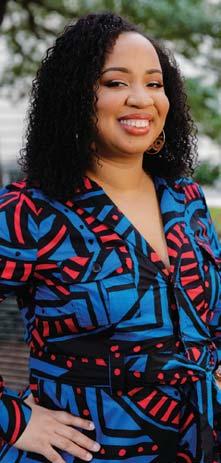
Bryan performed as soloist in the world premiere of the chamber ensemble version of House of Pianos, with the LA Phil New Music Group led by Paolo Bortolameolli, and performs again in this weekend’s premiere of the full orchestra version with the Cincinnati Symphony Orchestra, conducted by Louis Langrée. Bryan’s Gathering Song, with libretto by Tazewell Thompson, was premiered in March by the New York Philharmonic and bass-baritone Ryan Speedo Green, conducted by Leslie B. Dunner. Other recent works include Blessed, commissioned by Opera Philadelphia and produced as a film that weaves together musical recordings and footage from New Orleans, New York and Philadelphia; Syzygy for violin and orchestra, premiered by Jennifer Koh and the Chicago Sinfonietta; and Yet Unheard for soprano, chorus and orchestra, commissioned by The Dream Unfinished and premiered with Helga Davis. Her compositions have been performed by the Louisiana Philharmonic Orchestra, Jacksonville Symphony (Mary Carr Patton Composer-InResidence, 2018–20), London Sinfonietta, Orchestra of St. Luke’s, Chicago Sinfonietta, Quince Ensemble as part of the Chicago Symphony Orchestra MusicNOW series, American Composers Orchestra, Colorado Springs Philharmonic, La Jolla Symphony and Chorus, New York Jazzharmonic, Spektral String Quartet and Talea Ensemble.
Bryan’s interest across multiple artforms have led to collaborations with visual artists Tiona Nekkia McClodden, Steffani Jemison, Abigail DeVille, Kara Lynch, Lake Simons, Amy Bryan and Alma Bryan Powell; director Patricia McGregor; writers Sharan Strange, Matthew D. Morrison and Ashon Crawley; and musicians Branford Marsalis, Jennifer Koh, Ryan Speedo Green, Helga Davis, Brandee Younger and Damian Norfleet. Bryan holds a doctorate in composition from Columbia University, where she studied with George Lewis. She also holds degrees from Oberlin Conservatory (BM) and Rutgers University (MM). Bryan completed postdoctoral studies in the Department of African American Studies at Princeton University. She is currently the Albert and Linda Mintz Professor of Music at Newcomb College in the School of Liberal Arts at Tulane University. Recent accolades include the Herb Alpert Award in the Arts (2018), Samuel Barber Rome Prize in Music Composition (2019–20), United States Artists Fellowship (2020), and the Civitella Ranieri Foundation Fellowship (2020–21).
Bryan has released two recordings, Quest for Freedom (2007) and This Little Light of Mine (2010); a third recording is in progress, Sounds of Freedom
Of her Piano Concerto, House of Pianos (co-commissioned by the Cincinnati Symphony Orchestra and LA Philharmonic), Bryan says:
My piano concerto, House of Pianos, is a love letter to the many pianists who have inspired me over the years. It is a dream world where I enter a house full of pianos and journey from room to room witnessing gatherings of legendary pianists from various times and places. I join them in reverence and with thanksgiving and joy.
House of Pianos depicts five “scenes”: “rent party,” “jam session,” “homecoming,” “sanctuary” and “praise house.”
Composed: 2022, CSO co-commission
Premiere: These performances are the world premiere of the version for piano and full orchestra; in February 2023, the LA Philharmonic New Music Group gave the premiere of the version for piano with chamber orchestra.
Instrumentation: solo piano, 2 flutes, piccolo, 2 oboes, English horn, 2 clarinets, bass clarinet, 2 bassoons, contrabassoon, 4 horns, 3 trumpets, 3 trombones, tuba, timpani, 2 bass drums, bongo, claves, cowbell, crash cymbals, finger cymbals, flexatone, high hat, rattle, snare drum, tambour de Basque, tomtom, triangle, vibraslap, wind chimes, strings
Duration: approx. 20 minutes
Fanfare Magazine | 77
PROGRAM NOTES
Courtney Bryan, ©Taylor Hunter












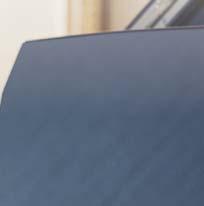



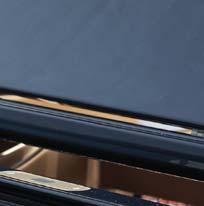





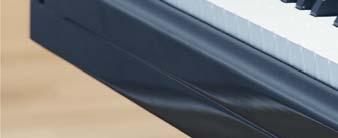

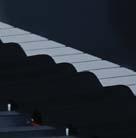
Donate to
buying yourself a new piano.* STRIVE FOR EXCELLENCE For over 120 years, Willis Music and Cincinnati Symphony Orchestra Have been serving the greater Cincinnati area with music, culture, and music education. STEINWAY.CINCINNATI.COM Willis Music Kenwood Galleria 8118 Montgomery Road Cincinnati, Oh 45236 (859) 396-4485 pianos@willismusic.com *Willis Music will give a donation to the Cincinnati Symphony Orchestra for every piano that a Cincinnati Symphony Orchestra patron purchases.
the CSO by
EDWARD K. (“DUKE”) ELLINGTON, transcr. Berger
Born: April 29, 1899, Washington, D.C.
Died: May 24, 1974, New York, New York
Night Creature
Duke Ellington’s influence on American music is far-reaching. Not only did he blur the lines that existed between popular and classical music, but Ellington also challenged the cultural hierarchy that devalued Black music. Throughout his nearly five-decade career, Ellington used his music as the platform to promote racial pride, historize the Black experience in America, and advocate for social change and racial understanding. He also had a whimsical side that underscored some of his more experimental works like the opera Queenie Pie and the tone poem Night Creature

In the 1950s, when jazz shifted to an aesthetic centered on smaller ensembles, Ellington continued to chart a course of experimentation that positioned the jazz orchestra as the vehicle for an idiom of American concert music. Along with pianist/arranger Mary Lou Williams, he was instrumental in elevating the jazz suite and tone poem as vehicles for advancing the modern orchestral jazz aesthetic that appeared in the 1940s. Most of Ellington’s compositions in this idiom were written primarily for standard jazz orchestra (big band) instrumentation. However, in 1955, he extended his compositional voice to include the symphony orchestra. Commissioned by Don Gillis for the Symphony of the Air, Night Creature premiered in Carnegie Hall the same year, but was not recorded by Ellington until 1963.
The composition is a three-movement nocturnal fairytale that explores the activities of the insects, monsters and creatures that rule the night. Each movement portrays a different scenario and also different melodic and thematic material.
The first movement, “Blind Bug,” tells the story of “a blind bug who comes out every night to find that because he is king of the night creatures, he must dance. The reason he is king, of course, is that being blind, he lives in night all day, and when night really comes, he sees as well as anyone else, but with the difference that he is accustomed to not seeing. So, he puts out his antennae and goes into his dance, and if his antennae warn him of danger, he pauses, turns in another direction, and continues bugging the jitterbugs.” This movement is pure Ellingtonia and a reminder that he never conformed to conventions that defined the sound of the commercialized jazz idiom that grew in popularity during the 1930s and 1940s. The riffs and rhythms are funky, smooth and sophisticated providing the perfect palette for this nocturnal dance.
The second movement, “Stalking Monster,” is “concerned with that imaginary monster we all fear we shall have to meet some midnight, but when we meet him, I’m sure we shall find that he too does the boogiewoogie.” This movement takes on the identity of a concerto grosso with groupings of instruments scripting small ritornelli that build on the “stalking” motive introduced by the piano and drums at the beginning. This blues-tinged ostinato is developed through the introduction of different riffs that alternate with solos played by violin, trumpet and alto sax. Emblems of Ellington’s style, like growling trumpets and trombones and complex rhythmic and melodic interplay between sections of instruments, are present throughout.
The underpinning of the clave rhythm of Afro-Cuban music as well as the inclusion of bongos, maracas and claves in the third movement, invokes comparisons with Juan Tizol’s “Caravan,” which became a staple in Ellington’s performance repertory. “Dazzling Creature” portrays the culminating event of nocturnal activities—the entrance of the Queen of the Night:
Composed: 1956, on commission from Don Gillis and the Symphony of the Air
Premiere: 1956, Don Gillis and the Symphony of the Air, Carnegie Hall, New York
Instrumentation: 2 flutes (incl. piccolo), oboe (incl. English horn), 2 clarinets (incl. bass clarinet), 2 alto saxophones, 2 tenor saxophones, baritone saxophone, bassoon, 2 horns, 4 trumpets, 3 trombones, tuba, timpani, bongo drums, maracas, suspended cymbals, drum set, jazz bass, harp, piano, strings
CSO notable performances: First/Most Recent Performance: April 2021, Louis Langrée conducting.
Duration: approx. 17 minutes
Fanfare Magazine | 79
PROGRAM NOTES
Edward K. (“Duke”) Ellington
Check out our NEW DIGITAL PROGRAM! For even more enriching content including full-length biographies, digital content and more, text PROGRAM to 513.845.3024*, visit cincinnatisymphony. org/digital-program, or point your phone’s camera at the QR code.
Night creatures, unlike stars, do not come out at night—they come on, each thinking that before the night is out, he or she will be the star. They are the restless cool whose exotic or erotic animations, no matter how cool, beg for recognition, mainly from the queen, that dazzling woman who reigns over all night creatures. She is the theme of the third movement. sitting there on her high place and singing, “I want to be acknowledged” (in D major), or “Who but me shall be desired?”
(in A-flat), or “Who has the taste for my choreography?” (in A minor). After having made each of her subjects feel that Her Majesty sings only for him or her, who is individually the coolest or craziest, her high-toned highness rises and snaps her fingers. As they stomp off the handclapping, everybody scrambles to be in place, wailing and winging into the most overindulged form of up-and-outness.
In 1974 Alvin Ailey choreographed a series of dances to this music. Night Creature is one of many Ellington compositions that remains a staple in the famed dance company’s repertory.



 —Dr. Tammy L. Kernodle
—Dr. Tammy L. Kernodle
GEORGE GERSHWIN, ed. Clague

Born: September 26, 1898, Brooklyn, New York
Died: July 12, 1937, Hollywood, California
An American in Paris
In 1928, George Gershwin was not only the toast of Broadway, but of all America, Britain and many spots in Europe, as well: he had produced a string of successful shows (Rosalie and Funny Face were both running on Broadway that spring), composed two of the most popular concert pieces in recent memory (Rhapsody in Blue and the Piano Concerto in
Since 1948, HORAN has served as a trusted advisor providing legendary service, support estate and business planning.


HORAN is proud to support our valued client, the Cincinnati Symphony Orchestra, and An American In Paris premiere.

80 | 2022–23 SEASON
PROGRAM NOTES
In Pursuit of What Matters Most. www.horanassoc.com | 800.544.8306 Celebrating 75 Years of Service.
*By texting to this number, you may receive messages that pertain to the organization and its performances; msg & data rates may apply. Reply HELP to help, STOP to cancel.
F), and was leading a life that would have made the most glamorous socialite jealous. The pace-setting Rhapsody in Blue of 1924 had shown a way to bridge the worlds of jazz and serious music, a direction Gershwin followed further in the exuberant yet haunting Piano Concerto in F the following year. He was eager to move further into the concert world, and during a side trip in March 1926 to Paris from London, where he was preparing the English premiere of Lady Be Good, he hit upon an idea, a “walking theme” he called it, that seemed to capture the impression of an American visitor to the city “as he strolls about, listens to the various street noises, and absorbs the French atmosphere.” He worried that “this melody is so complete in itself, I don’t know where to go next,” but the purchase of four Parisian taxi horns on the Avenue de la Grande Armée inspired a second theme for the piece. Late in 1927, a commission for a new orchestral composition from Walter Damrosch, music director of the New York Symphony and conductor of the sensational premiere of the Concerto in F, caused Gershwin to gather up his Parisian sketches, and by January 1928, he was at work on the score: An American in Paris When he returned to New York in late June, he discovered that the New York Symphony had announced the premiere for the upcoming season, so he worked on the piece throughout the autumn and finished the orchestration only a month before the premiere, on December 13, 1928. An American in Paris, though met with a mixed critical reception, proved a great success with the public, and it quickly became clear that Gershwin had scored yet another hit.
For the premiere, Deems Taylor collaborated with the composer to produce the following insouciant description of An American in Paris:
You are to imagine an American visiting Paris, swinging down the Champs-Elysées. He starts off to the tune of The First Walking Theme.
French taxicabs seem to amuse him particularly, a fact that the orchestra points out in brief episodes introducing four real Paris taxi horns. Our American strolls on through the medium of The Second Walking Theme, which is announced by the clarinet in French with a strong American accent.
It may be that he continues down the Champs-Elysées, and that when The Third Walking Theme makes its eventual appearance our American has crossed the Seine and is somewhere on the Left Bank. The end of this section is couched in terms so unmistakably, albeit pleasantly, blurred as to suggest that the American is on a terrasse of a café exploring the mysteries of Anise de Lozo
And now the orchestra introduces an unhallowed episode. Suffice it to say that a solo violin approaches our hero (in the soprano register) and addresses him in the most charming broken English. Of course, one hastens to add, it is possible that the whole episode is simply a musical transition. This may well be true, for otherwise it is difficult to believe what ensues: our hero becomes homesick. He has the blues; and if the behavior of the solo trumpet be any criterion, he has them very thoroughly.
However, nostalgia is not a fatal disease. Just in the nick of time the compassionate orchestra rushes another theme to the rescue, a noisy, cheerful, self-confident Charleston without a drop of Gallic blood in its veins. Walking Theme Number Two enters soon thereafter, enthusiastically abetted by Number Three. The blues return but mitigated by the Second Walking Theme—a happy reminiscence rather than a homesick yearning—and the orchestra, in a riotous finale, decides to make a night of it. It will be great to get home; but meanwhile, this is Paris!
—Dr. Richard E. Rodda
Composed: 1928
Premiere: December 13, 1928, New York, conducted by Walter Damrosch
Instrumentation: 3 flutes (incl. piccolo), 2 oboes, English horn, 2 clarinets, bass clarinet, 3 saxophones doubling on soprano, alto, tenor and baritone sax, 2 bassoons, 4 horns, 3 trumpets, 3 trombones, tuba, timpani, snare drum, crash cymbals, triangle, xylophone, glockenspiel, ratchet, suspended cymbals, tenor drum, wood block, bass drum, 2 tom-toms, 4 taxi horns of different pitches, celeste, strings
CSO notable performances: First
Performance: March 1929, Fritz Reiner conducting; overseen by George Gershwin. Most Recent: March 2019 Louis Langrée conducting (also, February 2020 Pops concert, John Morris Russell conducting).
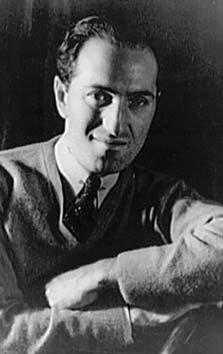
Recording: Transatlantic (2019, Fanfare Cincinnati label), Louis Langrée conducting; Grammynominated for Best Orchestral Performance, 62nd Annual Grammy Awards (2019). Other: March 2017 tour to Asia, Louis Langrée conducting; September 2017 European tour, Louis Langrée conducting.
Duration: approx. 20 minutes
Fanfare Magazine | 81
PROGRAM NOTES
George Gershwin
FRI MAY 12, 7:30 pm
Harry T. Wilks Studio, Music Hall
Eugène BOZZA Duettino pour deux bassons (1905–1991)
Allegro moderato
Andantino
Allegro ma non torppo (stretto canonique)
Allegro ma non troppo
Christopher Sales, bassoon Hugh Michie, bassoon
Johannes BRAHMS Trio for Piano, Violin and Horn in E-flat Major, Op. 40 (1833–1897)
Andante Scherzo
Adagio mesto
Allegro con bio
Rachel Charbel, violin Molly Norcross, horn Joshua Nemith, piano
INTERMISSION
Olivier MESSIAEN Quatour pour la fin du temps (1908–1992) (“Quartet for the End of Time”)
I. Liturgie de cristal (“Crystal liturgy”)
II. Vocalise, pour l’Ange qui annonce la fin du temps (“Vocalise, for the Angel who announces the end of time”)
III. Abîme des oiseaux (“Abyss of birds”)
IV. Intermède (“Interlude”)
V. Louange à l’Éternité de Jésus (“Praise to the eternity of Jesus”)
VI. Danse de la fureur, pour les sept trompettes (“Dance of fury, for the seven trumpets”)
VII. Fouillis d’arcs-en-ciel, pour l’Ange qui annonce la fin du temps (“Tangle of rainbows, for the Angel who announces the end of time”)
VIII. Louange à l’immortalité de Jésus (“Praise to the immortality of Jesus”)
Charles Morey, violin
Joseph Morris, clarinet Alan Rafferty, cello Michael Chertock, piano
YOU’RE INVITED to greet the musicians after the concert.
The CSO Chamber Players series has been endowed in perpetuity by the ELEANORA C.U. ALMS TRUST, Fifth Third Bank, Trustee
Steinway Pianos, courtesy of Willis Music, is the official piano of the Cincinnati Symphony Orchestra and Cincinnati Pops.
82 | 2022–23 SEASON
CSO CHAMBER PLAYERS | 2022–2023 SEASON
This performance is approximately 120 minutes long, including intermission.
EUGÈNE BOZZA
Born: April 4, 1905, Nice, France

Died: September 28, 1991, Valenciennes, France
Duettino pour deux bassons
It was for his operas that French composer and conductor Eugène Bozza achieved prominence during his lifetime, but his posthumous recognition centers largely on his more modest works for woodwinds and brass. A good number of them have become favorites for chamber music programs, despite (or perhaps because) the composer tended to favor idiosyncratic combinations of instruments.
Bozza was a stunning young talent who was shaped artistically by Parisian trends between the two world wars. Over his lifetime, his body of work seems to have embraced every -ism of the 20th century: expressionism, futurism, objectivism, serialism, minimalism, maximalism. Yet his characteristic charm, elegance, lyricism and humor are never in short supply.
Bozza’s Duettino pour deux bassons is no exception: its title, a mix of Italian and French (as was the composer himself) presages the mischievousness in the work via Bozza’s choice of the diminutive, Duettino. The 1954 work, written during the composer’s tenure as the director of the conservatory of Valenciennes, reflects the distinctly Parisian pedigree of the bassoon idiom: both Paul Dukas’ The Sorcerer’s Apprentice and Stravinsky’s Rite of Spring are echoed in the work.
The work unfolds in four short movements. The first, Allegro moderato, is structured in three sections. It opens in C major, in common time, with the staccato tune volleyed between the two performers in imitation. The second section shifts the character to one of grace and lyric elegance as the arpeggios of one bassoon accompany the soaring aria of the other. The opening motive then returns, once again seesawing between the two players before coming to rest.
The second movement, Andantino, also opens with imitation. This time it is a cantabile melody that the composer transforms into a dialogue between the two bassoons, first in opposition, then in accord. The movement comes to rest, improbably, on the interval of a major second, elegant in spite of its dissonance.
The composer marks the third movement allegro ma non troppo, with another Italian-French composite: “stretto canonique,” that is, a canon in which the second voice enters before the first voice has finished. Here the bassoons are both persistent and playful, each stepping on the toes of the other as the movement tumbles to its conclusion.
The fourth is the only movement to open with no imitation. Rhythmic displacement and wide leaps in the lower voice accompany a burlesque march tune in the upper. Here is the dry wit of Bozza at his selfdeprecating best, puncturing his final phrases with dissonance lest the listener take his music too seriously.
—Dr. Scot Buzza
JOHANNES BRAHMS
Born: May 7, 1833, Hamburg, Germany
Died: April 3, 1897, Vienna, Austria
Trio for Piano, Violin and Horn in E-flat Major, Op. 40
Johannes Brahms certainly had an affinity for the horn. Brahms’ father, Johann Jakob, played the flute, horn, violin and double bass and taught the young Johannes to play the horn. Prominent horn passages are ubiquitous in Brahms’ orchestral works, showing up in, for example, his
Composed: 1954
Duration: approx. 10 minutes
Fanfare Magazine | 83
MAY 12 PROGRAM NOTES
Eugène Bozza
Composed: 1865 Premiere: November 28, 1865 in Zurich, at the Second Quartet Soiree for the Zurich Orchestra Society
Duration: approx. 30 minutes
symphonies nos. 1 and 2, Piano Concerto No. 2 and First Serenade. But, in his chamber works, Brahms employs the horn only once—in the 1865 Horn Trio, Op. 40.
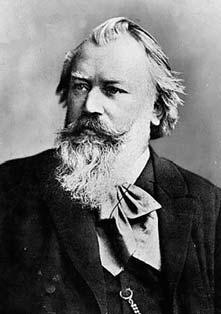
A central part of Brahms’ life was walking, especially when he needed to think out musical ideas, and he particularly enjoyed walking in nature. In the summers of the 1860s, Brahms visited Lichtental, near the summer “hot spot” and spa town of Baden-Baden and located in the Black Forest. Summers in Baden-Baden were filled with a who’s-who of 19th-century European literature, music, art, science and upper-class nobility. But perhaps it was the draw of Clara Schumann, who in 1862 (six years after her husband Robert’s death) had purchased a home in Lichtental, that kept Brahms returning summer after summer to this spa town.
In the summer of 1865, Brahms rented the attic apartment at Lichtental No. 8 (or Das hübsche Haus auf dem Hügle, “the pretty house on the hill”) from the widow Clara Becker, which would be his summer home for near a decade. Brahms penned several letters describing these lodges and the joy of being able to “look over all the mountains and paths from Lichtental to Baden.”
It was here during the summer of 1865 that Brahms composed his Op. 40 Horn Trio. Albert Dietrich, a friend of Brahms’, recalled a moment while on a walk with Brahms, “near Baden-Baden on the wooded heights between the fir trees,” when Brahms showed Dietrich “where the theme of the first movement of this composition first occurred to him.” September 27, 1865 was the first documented rehearsal of this work, which is presumed to have taken place at Clara Schumann’s Lichtental residence.
The joys of Brahms’ 1865 summer were dimmed by the passing of his mother in February of 1865. His brother, Fritz, sent a telegram stating that their mother, Christiane, had suffered a stroke, and “if you want to see our mother once again, come immediately.” Unfortunately, Brahms arrived in Hamburg too late—Christiane had already passed. Many scholars and biographers believe Op. 40 to be a work to commemorate the life of his wonderful mother.
Brahms expressly wrote this trio for “natural” horn and wrote to the publisher that the instrument “Waldhorn” (i.e. natural horn) be written on the title page: “I ask that you place Waldhorn instead of Horn on the first page. Thus Pianoforte, Violin and Waldhorn (or Violoncello).” In 1884, he wrote to the publisher again to say, “My Horn Trio should actually get a viola part instead of the violoncello part!… It could expressly say on the title page: Horn or Viola!” Brahms’ wishes are still (mostly) honored today by publishers, with the trio being sold with parts for all three possible variants: horn, viola and cello. However, Brahms’ wish for “Waldhorn” to appear on the title page has mostly gone by the wayside.
—Tyler M. Secor
OLIVIER MESSIAEN
Born: December 10, 1908, Avignon, France
Died: April 27, 1992, Paris
In 1939, French composer Olivier Messiaen, serving in the French Army, was captured by German troops and sent to the prisoner-of-war camp in Görlitz, Germany. Living conditions were brutal: nearly 50,000 prisoners huddled in 30 barracks, underfed, and unprotected from the winter cold. The German soldiers considered Messiaen harmless; they permitted him to keep the handful of miniature scores he had arrived with and provided him
84 | 2022–23 SEASON
Quatour pour la fin du temps (“Quartet for the End of Time”)
PROGRAM NOTES
Johannes Brahms
with writing supplies. Thus, Olivier Messiaen did what he knew how to do: he set pencil to paper and composed music.
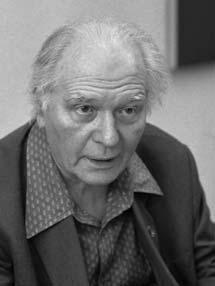
Before the war, Messiaen had already distinguished himself as a musician of impressive talent and imagination. Entering the Paris Conservatory at age 11, he had won first prizes in counterpoint, accompaniment, organ and composition. He later recalled that, at the conservatory, he had been the only student who had studied the scores of Schönberg’s Pierrot lunaire and Stravinsky’s The Rite of Spring, but that these modernist monuments were not the works that influenced him most strongly. “I was closer to Debussy. I remained loyal to my childhood loves: Debussy, Mozart, Berlioz, Wagner.”
With him in the Stalag were three other musicians: a clarinetist, a violinist and a cellist. Messiaen wrote “an unpretentious little trio,” for them, the Intermède that would eventually become the centerpiece of his Quatour pour la fin du temps. Then he transcribed two of his earlier compositions to append to the trio, and ultimately created the remaining movements that surround it. Each one called for a different combination of instruments, thus the full ensemble of four plays only in the first, second, sixth and seventh movements.
The composer, profoundly religious, chose to pursue the spiritual through his own innovative musical language; indeed, several of his works from the 1930s foreshadowed the religious elements in the musical idiom of his Quatour. He later explained, “This Quatour comprises eight movements. Why? Seven is the perfect number, the six days of Creation, sanctified by the Divine Sabbath; the seven of this rest is prolonged into eternity and becomes the eight of everlasting light, of eternal peace.” Thus, the Quatour represents the complete marriage of the theological with the technical in Messiaen’s view: “Its musical language is essentially immaterial, spiritual and Catholic. Modes which achieve a kind of tonal ubiquity, melodically and harmonically, here draw the listener towards eternity in space or the infinite. Special rhythms, beyond meter, contribute powerfully in dismissing the temporal.”
Each movement of the work corresponds to a passage in chapter 10 of the Book of Revelation, cited by the composer in the preface to the published score:
1 And I saw another mighty angel come down from heaven, clothed with a cloud: and a rainbow was upon his head, and his face was as it were the sun, and his feet as pillars of fire:
2 and he set his right foot upon the sea, and his left foot on the earth.
5 And the angel which I saw stand upon the sea and upon the earth lifted up his hand to heaven,
6 And sware by him that liveth for ever and ever... that there should be time no longer:
7 But in the days of the voice of the seventh angel, when he shall begin to sound, the mystery of God should be finished. [KJV]
The premiere performance of the Quatour pour la fin du temps took place in the camp on the evening of January 15, 1941. For many in the audience it was the first chamber music they had ever heard. For those prisoners for whom Görlitz was just a layover en route to the death camps, it was unquestionably the last. It may well be on behalf of those thousands that Messiaen intended the published dedication, “In homage to the Angel of the Apocalypse, who raises a hand toward Heaven saying: ‘There shall be time no longer.’”
—Dr. Scot Buzza
Olivier
Composed: 1941
Premiere: January 15, 1941, in the prisoner-of-war camp in Görlitz, Germany
Duration: approx. 52 minutes
Fanfare Magazine | 85
Messiaen
PROGRAM NOTES
2022–23 SEASON
CSYO CONCERT ORCHESTRA
SUN MAY 14, 2 pm, Music Hall VARIATIONS ON A DREAM
FELIPE MORALES-TORRES, conductor
Ebun OGUNTOLA Five (from Interval) (b. 2005)
Charles IVES “The Alcotts” from Piano Sonata No. 2 (1874–1954)
arr. John Boyd
Michael DAUGHERTY Strut for String Orchestra (b. 1954)
Margaret Allison BONDS The Montgomery Variations (1913–1972)
arr. J. Michael Cooper
Alan LAWSON Legacy (b. 1993)
James COCKERHAM Fantasia on Lift Ev’ry Voice and Sing (b. 1948)
CSYO PHILHARMONIC
SUN MAY 14, 7 pm, Music Hall REMEMBRANCE
DANIEL WILEY, conductor VIVIAN CHANG, violin
Omar THOMAS Of Our New Day Begun (b. 1984)
Jean SIBELIUS Concerto in D Minor for Violin and Orchestra, Op. 47 (1865–1957)
Allegro moderato
INTERMISSION
Dmitri SHOSTAKOVICH Symphony No. 5 in D Minor, Op. 47 (1906–1975) Moderato. Allegro non troppo. Largamente. Moderato Allegretto
Largo
Allegro non troppo. Allegro
Program notes for these concerts will appear in an insert to be available on May 14.
The CSO thanks Coney Island for its generous sponsorship of the Cincinnati Symphony Youth Orchestras. Support provided by The Charles H. Dater Foundation and The Marge & Charles J. Schott Foundation
The Cincinnati Symphony Youth Orchestras is a program of the Cincinnati Symphony Orchestra and receives generous support in the form of rehearsal space from the University of Cincinnati College-Conservatory of Music and Walnut Hills High School.

86 | 2022–23 SEASON
CSYO CONCERT ORCHESTRA ROSTER 2022–23
FIRST VIOLIN
Angela Tang, Concertmaster
Marley Feng, Assistant Concertmaster
Andrew Cheng+
Ishanvi Karthikeyan
Paul Ku
Sophia Li
Sophina Li
Cattleya Meyers
Kenneth Wu
Raina Yang
Ethan Yao
Irene Zhang
Emily Zhao
SECOND VIOLIN
Anna Christos, Principal
Arjuna Verma, Assistant Principal
Lara Goodall+
Sophia Hamel
Allyson Kim
Evelyn Kunkel
Julia Li
Sarah Perpignan
Ben Truong
Kevin Wen
Angela Zhang
Alisa Zhao
VIOLA
Noah Huber, Principal
Benjamin Zhou, Assistant
Principal
Adhithya Arasu+
Alexandra Kirk
Wendy Lin
Adah Muck
Madeline Murray
Lainie Stautberg
Trinity Thrasher
CELLO
Matthew Hruska, Principal
Anish Patil, Assistant Principal
Amelia Cecilio+
Andrew Chung
Lorelai Gartside
Dianna Hester
Kevin Kim
Autumn Rinaldi
Jayden Thrasher
Kate Wells
Vivian Xu
William Yeoh
BASS
Loki Wirman, Principal
Owen Lutz, Assistant Principal
Josiah Ericksen
Aaron Scott
FLUTE/PICCOLO
Katelyn Cheng
Maya Hansen
Alejandra Saavedra
Lance Zhang
OBOE/ENGLISH HORN
Emma Hull
Simon Huth
Arjuna Lee
CLARINET
Morgan Cloud
Meredith Hall
Richa Jha
BASSOON
Jackson Hatfield
Angylynn Kiss
Marian Rose
HORN
Joyce Chan
Charles Healy
Josh Knehans
Eden Proctor
TRUMPET
Mason Hignite
Katie Koziel
CSYO PHILHARMONIC ROSTER 2022–23
FIRST VIOLIN
Christy Kim, Concertmaster
Vivian Chang, Assistant Concertmaster
Angelina Chen+
Johan DeMessie
Nicholas Donnellan
Madeline Dugan
Yuhan Gu
Annie Li
Edward Li
Leo Luo
Mara Seppala
Ian Shang
Isabelle Tardivon
Maggie Vonderschmidt
Jieun Woo
Jillian Wu
SECOND VIOLIN
Erica Nam, Principal Second
Stephen Dorsey, Assistant Principal Second
Hollis Chan+
Grace Chi
Evelyn Gao
Monica Geiman
Joshua Koo
Shelby Li
Anuj Mantha
Norika Oya
Caden Schroeder
Alex Tran
Kyle Wang
Yeming You
Alina Zhang
VIOLA
Maeve Henderson, Principal
Christina Shiomitsu, Assistant Principal
James Bingcang+
Gabriel Caal
Benedict Cecilio
Cuong Diep
Seth Israel
Christina Lehmann
Broderick Merz
Ben Wells
Grace Yu
Julia Zhu
CELLO
Ari Peraza-Webb, Principal
Paul Orth, Assistant Principal
Samvit Das+
Jayden Lu
Krish Subramanian
Owen Summers
Claron Wang
Shin-yi Wang
Howard Weng
Jihye Woo
BASS
Sophia Troyer, Principal
Kindall Benjamin
Nora O’Donnell
FLUTE/PICCOLO
Marissa Hull
Grace Kim 3
Lauren Simon
Mingjia Zhang 1,2
OBOE/ENGLISH HORN
Julia Bradley
Joseph Mitchell 2,3
Zoe Schnadower
Isaac Scott
CLARINET
Kotaro Fujiwara 1,2
Samuel Langer
Kylie Quinn 3
Zachary Ramsey
BASSOON
Liam Ferguson 1,2
Emma Laude 3
Ella Sweeney
HORN
Brayden Adamisin 1,2
Jayce Mullins
Alex Riley 3
Lily Wheatley
TROMBONE
Tvasta Gajjar
Eshaan Gandhi
Aaron Haas
Ayden Mygatt
TUBA
Wilaini Alicea
HARP
Cody Banschbach
Abel Mooney-Bullock
PERCUSSION
Adolphus McCullom II
Justin Melvin
Jason Nguyen
+Begins the alphabetical listing of players who participate in a system of rotated seating within a string section.
All wind players are considered principals and rotate between pieces.
TRUMPET
Shelby Gault
Stephen Stricker 1,2
Thomas Stricker 3
Trent Stricker
TROMBONE
Karna Gajjar
Sean LaRoy 3
Hamlin Monday 1 2
TUBA
Matthew Lyons
HARP
Karma Fecher
Veronika Stanichar
PERCUSSION
Brooke Hube
Jonathan Kaseff
+Begins the alphabetical listing of players who participate in a system of rotated seating within a string section.
1 principal, Thomas
2 principal, Sibelius
3 principal, Shostakovich
Fanfare Magazine | 87








INSTITUTIONAL SUPPORT
Local and national foundations, businesses, and government agencies are integral to the Orchestra’s vibrant performances, community engagement work, and education activities. We are proud to partner with the following funders.
SERIES SPONSORS
PLATINUM BATON CIRCLE ($50,000+)
ArtsWave
Charles H. Dater Foundation
The Carol Ann and Ralph V. Haile, Jr. Foundation
Hamilton County
David C. Herriman Fund of Greater Cincinnati Foundation
Carl Jacobs Foundation
H.B., E.W., F.R. Luther Charitable Foundation
The Mellon Foundation
Dr. John & Louise Mulford Fund for the CSO
National Endowment for the Arts
Louise Dieterle Nippert Musical Arts Fund of the Greenacres Foundation
Ohio Arts Council
PNC Bank

Margaret McWilliams Rentschler Fund of Greater Cincinnati Foundation
Nina Browne Parker Trust
Harold C. Schott Foundation / Francie and Tom Hiltz, Trustees
Marge and Charles J. Schott Foundation
The Louise Taft Semple Foundation
Skyler Foundation
US Small Business Administration
Western & Southern Financial Group
Anonymous
GOLD BATON CIRCLE ($25,000–$49,999)
City Of Cincinnati
Coney Island
The Cincinnati Symphony Club
Fifth Third Bank Foundation
Jeffrey & Jody Lazarow and Janie & Peter Schwartz Family Fund of Greater Cincinnati Foundation
George and Margaret McLane Foundation
The Ladislas & Vilma Segoe Family Foundation
United Dairy Farmers & Homemade Brand Ice Cream
The Wohlgemuth Herschede Foundation
SILVER BATON CIRCLE ($15,000–$24,999)
Drive Media House
HORAN
The Jewish Federation of Cincinnati
The Jewish Foundation of Cincinnati
Jewish Cincinnati Bicentennial
Johnson Investment Counsel
League Of American Orchestras
The Rendigs Foundation
2022 ARTSWAVE PARTNERS

Taft Stettinius & Hollister LLP
Scott and Charla Weiss Wodecroft Foundation
CONDUCTOR’S CIRCLE ($10,000–$14,999)
Bartlett Wealth Management
Chemed Corporation
The Crosset Family Fund of Greater Cincinnati Foundation
Kelly Dehan and Rick Staudigel
Graeter’s Ice Cream
Peter E. Landgren and Judith Schonbach Landgren
Mariner Wealth Advisors
Messer Construction Co.
Ohio National Financial Services
Oliver Family Foundation
The Daniel & Susan Pfau Foundation
The Procter & Gamble Company
CONCERTMASTER’S CIRCLE ($5,000–$9,999)
JRH Consultants
Levin Family Foundation
Metro
The Willard & Jean Mulford Charitable Fund
Pyro-Technical Investigations, Inc.
Queen City (OH) Chapter of The Links, Incorporated
Thompson Hine LLP
ARTIST’S CIRCLE ($2,500–$4,999)
d.e. Foxx and Associates, Inc.
Keating Muething & Klekamp
Mayerson Jewish Community Center
Charles Scott Riley III Foundation
BUSINESS & FOUNDATION PARTNERS (up to $2,499)
African American Chamber of Commerce
Visit Cincy
Classics for Kids Foundation
Albert B. Cord Charitable Foundation
D’Addario Foundation
Earthward Bound Foundation
Susan Friedlander
Hixson Architecture Engineering Interiors
Integrity Development
Journey Steel
Robert A. & Marian K. Kennedy Charitable Trust
PricewaterhouseCoopers LLP
The Voice of Your Customer
Toi and Jay Wagstaff
Join this distinguished group!
Contact Sean Baker at 513.744.3363 or sbaker@cincinnatisymphony.org to learn how you can become a supporter of the CSO and Pops. This list is updated quarterly.
The Cincinnati Symphony Orchestra and Cincinnati Pops acknowledge the following partner companies, foundations and their employees who generously participate in the Annual ArtsWave Community Campaign at the $100,000+ level.
$2 million+ P&G
$1 million to $1,999,999
Fifth Third Bank and the Fifth Third Foundation
$500,000 to $999,999
GE
$300,000 to 499,999
altafiber
Western & Southern Financial Group
$100,000–$299,999
Cincinnati Business Courier
Cincinnati Children’s Hospital Medical Center
The Cincinnati Insurance Companies
Cincinnati Reds
The E.W. Scripps Company and Scripps Howard Foundation
The Enquirer | Cincinnati.com
Great American Insurance Group
The H.B., E.W. and F.R. Luther Charitable Foundation, Fifth Third Bank, N.A., Trustee
The Kroger Co.
Messer Construction Co.
Ohio National Financial Services
PNC
U.S. Bank
Duke Energy
Fanfare Magazine | 89
2022–23 FINANCIAL SUPPORT
Pops Season Lollipops Series CSO Season
PERMANENT ENDOWMENTS
Endowment gifts perpetuate your values and create a sustainable future for the Orchestra. We extend our deep gratitude to the donors who have provided permanent endowments in support of our programs that are important to them. For more information about endowment gifts, contact Kate Farinacci, Director of Special Campaigns & Legacy Giving, at 513.744.3202.
ENDOWED CHAIRS
Grace M. Allen Chair
Ellen A. & Richard C. Berghamer Chair
Robert E. & Fay Boeh Chair
The Marc Bohlke Chair Given by Katrin & Manfred Bohlke
Trish & Rick Bryan Chair
Otto M Budig Chair Family Foundation Chair
Mary Alice Heekin Burke Chair
Peter G. Courlas–Nicholas Tsimaras Chair
Ona Hixon Dater Chair
The Anne G. & Robert W. Dorsey Chair+
Jane & David Ellis Chair
Irene & John J. Emery Chair
James M. Ewell Chair
Ashley & Barbara Ford Chair for Assistant Conductor
Ashley & Barbara Ford Chair for Assistant Conductor
Ashley & Barbara Ford Chair for Principal Tuba
Susan S. & William A. Friedlander Chair+
Charles Gausmann Chair
Susanne & Philip O. Geier, Jr. Chair+
Emma Margaret & Irving D. Goldman Chair
Clifford J. Goosmann and Andrea M. Wilson Chair for First Violin
Charles Frederic Goss Chair
Jean Ten Have Chair
Dorothy & John Hermanies Chair
Lois Klein Jolson Chair
Michael L. Cioffi & Rachael Rowe— the Honorable Nathaniel R. Jones Chief Diversity & Inclusion Officer

Josephine I. & David J. Joseph, Jr. Chair
Harold B. & Betty Justice Chair
Marvin Kolodzik and Linda S. Gallaher Chair for Cello+
Al Levinson Chair
Patricia Gross Linnemann Chair+
Alberta & Dr. Maurice Marsh Chair
Stephen P. McKean Chair
Laura Kimble McLellan Chair
The Henry Meyer Chair
Louise Dieterle Nippert & Louis Nippert Chairs
Ida Ringling North Chair Rawson Chair
The Vicky & Rick Reynolds Chair in honor of William A. Friedlander+
Donald & Margaret Robinson Chair
Dianne & J. David Rosenberg Chair+
Ruth F. Rosevear Chair
The Morleen & Jack Rouse Chair+
Emalee Schavel Chair
Karl & Roberta Schlachter Family Chair
Serge Shababian Chair
Melinda & Irwin Simon Chair+
Anna Sinton Taft Chair
Tom & Dee Stegman Chair+
Mary & Joseph S. Stern, Jr. Chair+
Cynthia & Frank Stewart Chair
The Jackie & Roy Sweeney
Family Chair
The Sweeney Family Chair in memory of Donald C. Sweeney
Brenda & Ralph Taylor Chair
James P. Thornton Chair
Nicholas Tsimaras–Peter G. Courlas Chair
Thomas Vanden Eynden Chair
Jo Ann & Paul Ward Chair
Matthew & Peg Woodside Chair
Mary M. & Charles F. Yeiser Chair
ENDOWED PERFORMANCES & PROJECTS

Eleanora C. U. Alms Trust, Fifth Third Bank, Trustee
Rosemary and Frank Bloom
Endowment Fund*+
Cincinnati Bell Foundation Inc.
Mr. & Mrs. Val Cook
Nancy & Steve Donovan*
Sue and Bill Friedlander
Endowment Fund*+
Mrs. Charles Wm Anness*, Mrs. Frederick D. Haffner, Mrs. Gerald Skidmore and the La Vaughn Scholl Garrison Fund
Fred L. & Katherine H. Groll Fund for Musical Excellence
Fred L. & Katherine H. Groll Fund for Great Artists
Fred L. & Katherine H. Groll Trust
Pianist Fund
The Carol Ann and Ralph V. Haile, Jr. Foundation Endowment Fund
Anne Heldman Endowment Fund**
Mr. and Mrs. Lorrence T. Kellar+
Lawrence A. & Anne J. Leser*
Mr. & Mrs. Carl H. Lindner**
PNC Financial Services Group
The Procter & Gamble Fund

Vicky & Rick Reynolds Fund for Diverse Artists+
Melody Sawyer Richardson*
Rosemary and Mark Schlachter
Endowment Fund*+
The Harold C. Schott Foundation, Francie and Tom Hiltz
Endowment Fund+
Peggy Selonick Fund for Great Artists
Dee and Tom Stegman
Endowment Fund*+
Mr. & Mrs. Joseph S. Stern, Jr. Fund for Great Artists
U. S. Bank Foundation*
Sallie and Randolph Wadsworth Endowment Fund+
Educational Concerts
Rosemary & Frank Bloom *
Cincinnati Financial Corporation & The Cincinnati Insurance Companies
The Margaret Embshoff
Educational Fund
Kate Foreman Young Peoples Fund
George & Anne Heldman+
Macy’s Foundation
Vicky & Rick Reynolds*+
William R. Schott Family**
Western-Southern Foundation, Inc.
Anonymous (3)+
OTHER NAMED FUNDS
Ruth Meacham Bell Memorial Fund
Frank & Mary Bergstein Fund for Musical Excellence+
Jean K. Bloch Music Library Fund
Cora Dow Endowment Fund
Corbett Educational Endowment**
Belmon U. Duvall Fund
Ewell Fund for Riverbend Maintenance
Linda & Harry Fath
Endowment Fund
Ford Foundation Fund
Natalie Wurlitzer & William Ernest Griess Cello Fund
Fred L. & Katherine H. Groll Trust
Music Director Fund for Excellence
William Hurford and Lesley Gilbertson Family Fund for Guest Pianists
The Mary Ellyn Hutton Fund for Excellence in Music Education
Josephine I. & David J. Joseph, Jr. Scholarship Fund
Richard & Jean Jubelirer & Family Fund*
Elma Margaret Lapp Trust
Jésus López-Cobos Fund for Excellence
Mellon Foundation Fund

Nina Browne Parker Trust
Dorothy Robb Perin & Harold F. Poe Trust
Rieveschl Fund
Thomas Schippers Fund
Martha, Max & Alfred M. Stern
Ticket Fund
Mr. & Mrs. John R. Strauss
Student Ticket Fund
Anna Sinton & Charles P. Taft Fund
Lucien Wulsin Fund
Wurlitzer Season Ticket Fund
CSO Pooled Income Fund
CSO Musicians Emergency Fund
*Denotes support for Annual Music Program Fund
**Denotes support for the 2nd Century Campaign
+Denotes support for the Fund for Musical Excellence

90 | 2022–23 SEASON FINANCIAL SUPPORT
www.ensemblecincinnati.org SEASON FUNDER Two new neighbors put their hearts (and laundry) on the line. APRIL 8 – 30 A fresh remix on a celebrated favorite. by
WHO ALL OVER THERE? WORLD PREMIERE DRAMEDY by
MAYTAG VIRGIN REGIONAL PREMIERE DRAMEDY MAY 27 – JUNE 18
Torie Wiggins
Audrey Cefaly
HONOR ROLL OF CONTRIBUTORS
The Cincinnati Symphony Orchestra and Cincinnati Pops are grateful to the following individuals that support our efforts by making a gift to the Orchestra Fund. We extend our heartfelt thanks to each and every one and pay tribute to them here. You can join our family of donors online at cincinnatisymphony.org/donate or by contacting the Philanthropy Department at 513.744.3271.
PLATINUM BATON CIRCLE
Gifts of $50,000 and above
Mr. and Mrs. Frederick E. Bryan, III §
Michael L. Cioffi & Rachael Rowe
Sheila and Christopher C. Cole
Susan Friedlander §
Healey Liddle Family Foundation, Mel & Bruce Healey
Patti and Fred Heldman
Harold C. Schott Foundation, Francie & Tom Hiltz
Dr. Lesley Gilbertson and Dr. William Hurford
Florence Koetters
Mr. and Mrs. Robert W. McDonald
Jo Anne and Joe Orndorff
Marilyn J. and Jack D. Osborn §
In Memory of Laura Gamble Thompson
Vicky and Rick Reynolds
Dianne and J. David Rosenberg
Mike and Digi Schueler
Irwin and Melinda Simon
Tom and Dee Stegman
Jackie and Roy Sweeney Family Fund*
Mr. Randolph L. Wadsworth Jr. §
Scott and Charla Weiss
Anonymous (1)
GOLD BATON CIRCLE
Gifts of $25,000–$49,999
Dr. and Mrs. Carl G. Fischer
Ashley and Bobbie Ford §
Karlee L. Hilliard §
Edyth B. Lindner
Calvin and Patricia Linnemann
Mr. and Mrs. Timothy Maloney
Mrs. Susan M. McPartlin
G. Franklin Miller and Carolyn Baker Miller
Moe and Jack Rouse §
Ann and Harry Santen §
Mrs. Theodore Striker
Mr. and Mrs. Jonathan Ullman
Nancy C. Wagner and Patricia M. Wagner §
Anonymous (1)
SILVER BATON CIRCLE
Gifts of $15,000–$24,999
Michael P Bergan and Tiffany Hanisch
Dr. and Mrs. John and Suzanne Bossert §
Mr. and Mrs. Larry Brueshaber
Mr. Gregory D. Buckley and Ms. Susan Berry-Buckley
Ms. Melanie M. Chavez
Robert and Debra Chavez
Stephen J Daush
Dianne Dunkelman and Clever Crazes for Kids
Mrs. John C. Dupree
Mrs. Charles Fleischmann
L. Timothy Giglio
Tom and Jan Hardy §
Mr. and Mrs. Joseph W. Hirschhorn §
Mr. and Mrs. Paul Isaacs
Patrick and Mary Kirk
Marvin P. Kolodzik §
Mrs. Erich Kunzel
Peter E. Landgren and Judith Schonbach Landgren
John and Ramsey Lanni
Alan Margulies and Gale Snoddy
Joseph A. and Susan E. Pichler Fund*
Elizabeth Schulenberg
Kelly Dehan and Rick Staudigel
Sarah Thorburn
Dale Uetrecht
DeeDee and Gary West §
Mrs. James W. Wilson, Jr.
Mr. and Mrs. James M. Zimmerman §
CONDUCTOR’S CIRCLE
Gifts of $10,000–$14,999
Mr. and Mrs. Lars C. Anderson, Sr.
Martha G. Anness §
Robert D. Bergstein
Mrs. Thomas E. Davidson §
Dr. and Mrs. Alberto Espay
Mr. and Mrs. Tom Evans
CCI Design, Molly and Tom Garber
Anne E. Mulder and Rebecca M. Gibbs
Mr. and Mrs. Scott Gruner
Mr. and Mrs. Stephen Hone
Will and Lee Lindner
Whitney and Phillip Long
Mark and Tia Luegering
Holly and Louis Mazzocca
In memory of Bettie Rehfeld
Mr. Bradford Phillips III
Mr. Michael E. Phillips
David and Jenny Powell
Bill and Lisa Sampson
Mark S. and Rosemary K. Schlachter §
Mr. Dennis Schoff and Ms. Nina Sorensen
Mr. Lawrence Schumacher
In memory of Mary and Joseph S. Stern, Jr
Ralph C. Taylor §
Tomcinoh Fund*
Mr. and Mrs. David R. Valz
Mr. and Mrs. JD Vance
Anonymous (1)
CONCERTMASTER’S CIRCLE
Gifts of $5,000–$9,999
Mr. and Mrs. Andrew Akers
Drs. Frank and Mary Albers
Heather Apple and Mary Kay Koehler
Thomas P. Atkins
Mrs. Thomas B. Avril
Joe and Patricia Baker
Kathleen and Michael Ball
Robert and Janet Banks
Louis D. Bilionis and Ann Hubbard
Mr. Henry Boehmer
Robert L. Bogenschutz
Dr. Ralph P. Brown
The Otto M. Budig Family Foundation
Gordon Christenson
Sally and Rick Coomes
K.M. Davis
Dennis W. and Cathy Dern
Laura Doerger-Roberts & Peter Roberts
Jean and Rick Donaldson
Nancy and Steve Donovan
Connie and Buzz Dow
Mrs. Diana T. Dwight
In Loving Memory of Diane Zent
Mr. and Mrs. James T. Fitzgerald
Marlena and Walter Frank
Dr. and Mrs. Harry F. Fry
Kathy Grote in loving memory of Robert Howes §
Mr. and Mrs. Lawrence Hamby
John B. and Judith O. Hansen
Ms. Delores Hargrove-Young
William and Jo Ann Harvey
Dr. James and Mrs. Susan Herman
Mr. Marshall C. Hunt, Jr.
Mr. and Mrs. Geoffrey Keenan
Mr. and Mrs. Lorrence T. Kellar
Michael and Marilyn Kremzar
Richard and Susan Lauf
Mrs. Jean E. Lemon §
Adele Lippert
Mrs. Robert Lippert
Elizabeth and Brian Mannion
David L. Martin
Mr. Jonathan Martin
Mandare Foundation
Barbara and Kim McCracken §
Mr. Gerron McKnight
Linda and James Miller
James and Margo Minutolo
George and Sarah Morrison III
Mr. and Mrs. David W. Motch
David and Beth Muskopf
Mr. Arthur Norman and Mrs. Lisa Lennon Norman
Dr. Manisha Patel and Dr. Michael Curran
Ms. Thienthanh Pham
Drs. Marcia Kaplan and Michael Privitera

Mr. Aftab Pureval
Terry and Marvin Quin
Mr. and Mrs. Thomas H. Quinn, Jr.
Melody Sawyer Richardson §
Ellen Rieveschl §
Elizabeth and Karl Ronn §
James and Mary Russell
Dr. E. Don Nelson and Ms. Julia Sawyer-Nelson
Martha and Lee Schimberg
Brent & Valerie Sheppard
Sue and Glenn Showers §
Rennie and David Siebenhar
Elizabeth C. B. Sittenfeld §
Mr. and Mrs. Gerald Skidmore §
Michael and Donnalyn Smith
Dr. Jean and Mrs. Anne Steichen
Nancy Steman Dierckes §
Brett Stover §
Christopher and Nancy Virgulak
Dr. Barbara R. Voelkel
Mr. and Mrs. Daniel Wachter
Mrs. Ronald F. Walker
Mrs. Paul H. Ward §
Jonathan and Janet Weaver
Donna A. Welsch
Cathy S. Willis
Andrea K. Wiot
Irene A. Zigoris
Anonymous (3)
ARTIST’S CIRCLE
Gifts of $3,000–$4,999
Dr. Charles Abbottsmith
Mr. and Mrs. Richard N. Adams
William Albertson
Mr. Nicholas Apanius
Mr. and Mrs. Gérard Baillely
Ms. Marianna Bettman
Glenn and Donna Boutilier
Thomas A. Braun, III §
Peter and Kate Brown
Janet and Bruce Byrnes
Susan and Burton Closson
Dr. Thomas and Geneva Cook
Peter G. Courlas §
Mr. and Mrs. John Cover
Marjorie Craft
Mr. and Mrs. James Dealy
George Deepe and Kris Orsborn
Bedouin and Randall Dennison
Jim and Elizabeth Dodd
Mrs. Jack E. Drake
Patricia Dudsic
Dr. and Mrs. Stewart B. Dunsker
David and Kari Ellis Fund*
Ann A. Ellison
Hardy and Barbara Eshbaugh
Mr. and Mrs. Richard Fencl
Yan Fridman
Frank and Tara Gardner
Naomi Gerwin
Dr. and Mrs. Ralph A. Giannella
Thomas W. Gougeon
Lesha and Samuel Greengus
Dr. and Mrs. Jack Hahn
Dr. Donald and Laura Harrison
Mr. and Mrs. Robert R. Heidenreich
Mr. and Mrs. Stephen Hicks
Ruth C. Holthaus
In Memory of Benjamin C. Hubbard §
Mr. and Mrs. Michael C. Hughes
Mr. and Mrs. Bradley G. Hughes
Karolyn Johnsen
Dr. Richard and Lisa Kagan
Dr. Robert W. Keith and Ms. Kathleen Thornton
Don and Kathy King
Lynn Keniston Klahm
Jeff and Mary Ann Knoop
Marie and Sam Kocoshis
Mr. Frank P. Kromer
Mr. Shannon Lawson
Dr. and Mrs. Lynn Y. Lin
Merlanne Louney
Mr. and Mrs. Donald Marshall
Glen and Lynn Mayfield
Allen-McCarren
Ms. Amy McDiffett
Mary Ann Meanwell
Ms. Sue Miller
Mrs. Patricia Misrach
Mr. and Mrs. David E. Moccia §
Jennifer Morales and Ben Glassman
Ms. Mary Lou Motl
Phyllis Myers and Danny Gray
Mr. and Mrs. John Niehaus
Dr. and Mrs. Richard Park §
Fanfare Magazine | 91
FINANCIAL SUPPORT
Anna Isaacs, Louis Langrée, Vicky Motch and Judith Schonbach Landgren at the Peer Gynt cast party. Credit: Claudia Hershner
Poul D. and JoAnne Pedersen
Alice Perlman
Alice and David Phillips
Mark and Kim Pomeroy
Michael and Katherine Rademacher
Beverly and Dan Reigle
Sandra Rivers
James Rubenstein and Bernadette Unger
Mr. & Mrs. Peter A. Schmid
Rev. Dr. David V. Schwab
Sandra and David Seiwert
Mr. Rick Sherrer and Dr. Lisa D. Kelly
William A. and Jane Smith
Elizabeth A. Stone
Margaret and Steven Story
Mr. and Mrs. J. Dwight Thompson
Mr. and Mrs. Ronald Tinklenberg
Neil Tollas and Janet Moore
Dr. and Mrs. Galen R. Warren
Jim and George Ann Wesner
Jo Ann Wieghaus
Sheila Williams
Ronna and James Willis
Matt and Lindsay Willmann
Steve and Katie Wolnitzek
Carol and Don Wuebbling Anonymous (2)
SYMPHONY CIRCLE
Gifts of $1,500–$2,999
Jeff and Keiko Alexander §
Dr. Rob and Ashley Altenau
Beth and Bob Baer
Mrs. Gail Bain
William and Barbara Banks
Mr. Randi Bellner and U.S. Bank
David and Elaine Billmire
Mr. and Mrs. Rodd Bixler
Dorothy Anne Blatt
Towne Properties
Dr. and Mrs. William Bramlage
Mrs. Jo Ann C. Brown
Ms. Jaqui Brumm
Rachelle Bruno and Stephen Bondurant
Chris and Tom Buchert
Dr. Leanne Budde
Ms. Deborah Campbell §
Mr. and Mrs. Thomas Carothers
Tom Carpenter and Lynne Lancaster
Dr. Alan Chambers
Catharine W. Chapman §
James Clasper and Cheryl Albrecht
Carol C. Cole §
Dr. George I. Colombel
Randy K. and Nancy R. Cooper
Ms. Andrea Costa
Mr. and Mrs. Charles E. Curran, III §
Mr. Louis M. Dauner and Ms. Geraldine N. Wu
Mrs. Shirley Duff
Mr. and Mrs. John G. Earls §
Barry and Judy Evans
Gail F. Forberg §
Dr. Charles E. Frank and Ms. Jan Goldstein
Mr. and Mrs. Joseph Fricke
Linda P. Fulton §
Kathleen Gibboney
Mrs. Jay N. Gibbs
Donn Goebel and Cathy McLeod
Dr. and Mrs. Glenn S. Gollobin
Drew Gores and George Warrington
Mr. and Mrs. Gary Greenberg
Jim and Jann Greenberg
Bill and Christy Griesser
John and Elizabeth Grover
Esther B. Grubbs §
Mr. and Mrs. Byron Gustin
Mrs. Jackie Havenstein
Donald and Susan Henson
Mr. Fred Heyse
Mr. Joe Hoskins
Mr. Bradley Hunkler
Heidi Jark and Steve Kenat
Barbara M. Johnson
Ms. Sylvia Johnson
Holly H. Keeler
Mr. and Mrs. Woodrow Keown, Jr.
John and Molly Kerman
Bill and Penny Kincaid
Juri Kolts
Mr. and Mrs. Richard Kovarsky
Carol Louise Kruse
Mrs. John H. Kuhn §
Jo Ann and George Kurz
Evelyn and Fred Lang
Charles and Jean Lauterbach
Mary Mc and Kevin Lawson
Dr. Carol P. Leslie
Mr. Peter F. Levin §
Elizabeth Lilly*
Drs. Douglas Linz and Ann Middaugh
Mrs. Marianne Locke
Mr. and Mrs. Clement H. Luken, Jr.
Edmund D. Lyon
Stephanie and Arthur McMahon
Stephanie McNeill
Becky Miars
John and Roberta Michelman
Mr. and Mrs. David A. Millett
Terence G. Milligan
Dr. Stanley R. Milstein §
Ms. Laura Mitchell
Mrs. Sally A. More
Susan E. Noelcke
Nan L. Oscherwitz
Rick Pescovitz and Kelly Mahan
Sandy Pike §
James W. Rauth §
Drs. Christopher and Blanca Riemann
Stephen and Betty Robinson
Ms. Jeanne C. Rolfes
Nancy and Raymond Rolwing
Jens G Rosenkrantz
Marianne Rowe §
Nancy Ruchhoft
Dr. and Mrs. Michael Scheffler
George Palmer Schober
Tim and Jeannie Schoonover
James P. Schubert
Jacqueline M. Mack and Dr. Edward B. Silberstein
Stephanie A. Smith
Stephen and Lyle Smith
Albert and Liza Smitherman
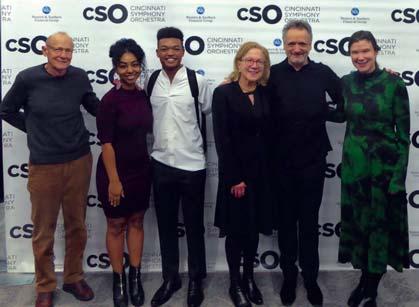
Bill and Lee Steenken
Christopher and Meghan Stevens
Mrs. Donald C. Stouffer
Mr. and Mrs. Richard Stradling, Jr.
Rich and Nancy Tereba
Linda and Nate Tetrick
Susan and John Tew
Janet Todd
Mr. William Trach
Barbie Wagner
Dr. and Mrs. Matthew and Diana Wallace
Michael L. Walton, Esq
Ted and Mary Ann Weiss
David F. and Sara K. Weston Fund
Virginia Wilhelm
Rev. Anne Warrington Wilson
Robert and Judy Wilson
David and Sharon Youmans
Andi Levenson Young and Scott Young
Mr. and Mrs. Dan Zavon
Mr. and Mrs. Robert L. Zierolf
Ms. Nancy Zimpher
Anonymous (12)
CONCERTO CLUB
Gifts of $500–$1,499
Christine O. Adams
Judith Adams
Romola N. Allen §
In memory of Carol Allgood & Ester Stevens
Lisa Allgood
Mr. Thomas Alloy & Dr. Evaline Alessandrini
Paul and Dolores Anderson
Mr. and Mrs. Frank Andress
Dr. Victor and Dolores Angel
Nancy J. Apfel
Mr. and Mrs. Keith Apple
Judy Aronoff and Marshall Ruchman
Ms. Laura E. Atkinson
Mr. David H. Axt and Ms. Susan L. Wilkinson
Ms. Patricia Baas
Dr. Diane S. Babcock §
Nate and Greta Bachhuber
Mrs. Mary M. Baer
Jerry and Martha Bain
Mr. and Mrs. Carroll R. Baker
Mr. Sean D. Baker
Jack and Diane Baldwin
Peggy Barrett §
Mrs. Polly M. Bassett
Ms. Glenda Bates
Michael and Amy Battoclette
Ms. Shirley Bear
Ms. Bianca Gallagher
Dr. and Mrs. Thomas E. Bell
Mr. Oliver Benes
Ms. Doris Bergen
Fred Berger
Dr. Allen W. Bernard
Dr. David and Cheryl Bernstein
Glenda and Malcolm Bernstein
Sharon Ann Kerns and Mike Birck
Randal and Peter Bloch
Dr. and Mrs. Jeffrey Bloomer
Ava Jo Bohl
Ms. Sandra Bolek
Ron and Betty Bollinger
Clay and Emily Bond
Mr. and Mrs. Kenneth Borisch
Dr. Carol Brandon
Marilyn and John Braun
Briggs Creative Services, LLC
Robert and Joan Broersma
Marian H. Brown
Mr. and Mrs. Robert S. Brown
Jacklyn and Gary Bryson
Bob and Angela Buechner
Alvin W. Bunis, Jr.
Donald L. and Kathleen Field Burns
Daniel A. Burr
Jack and Marti Butz
John J Byczkowski
Ms. Cindy Callicoat
Mr. and Mrs. Christopher Canarie
Susan L. Carson
Dr. Julia H. Carter
Mike and Shirley Chaney
Dee and Frank Cianciolo Fund*

James Civille
Bob and Tisha Clary
Mr. David Clodfelter
Beverly Kinney and Edward Cloughessy
Mr. Robert Cohen and Ms. Amy J. Katz
Fred W. Colucci
Dr. Pearl J. Compaan
Marilyn Cones
Dr. Margaret Conradi
Janet Conway
Jack and Janice Cook §
Robin Cotton and Cindi Fitton
Dennis and Patricia Coyne
Martha Crafts
Bev and Bob Croskery
Tim and Katie Crowley
Susan and John Cummings
Jacqueline Cutshall
Mr. and Mrs. Henry F. Dabek, Jr.
Mr. Joseph and Mrs. Lori Dattilo
Diane and Wayne Dawson
Loren and Polly DeFilippo
Stephen and Cynthia DeHoff
Robert B. Dick, Ph.D.
Ms. Rhonda Dickerscheid
John and Maureen Doellman
Drs. Gerald Dorn and Deborah Hauger
Robert W. Dorsey §
George Dostie
Jack and Diane Douglass
Meredith and Chuck Downton
Mr. James Doyle
Jim and Karen Draut
Emilie and David Dressler
Ms. Andrea Dubroff
Tom and Leslie Ducey
Tom and Dale Due
David and Linda Dugan
Mr. Corwin R. Dunn
Michael D. and Carolyn Camillo Eagen
Joseph and Kristi Echler
Mr. and Mrs. Dale Elifrits
Mr. Daniel Epstein
92 | 2022–23 SEASON FINANCIAL SUPPORT
Dave and Denise DiMartino and Western & Southern guests meet conductor Thomas Søndergård and violinist Augustin Hadelich after the January 7 concert. Credit: CSO Staff
Rick and Vicky Reynolds and guests meet Louis Langrée and violinist Randall Goosby after the January 21 concert. Credit: CSO Staff
Barbara Esposito-Ilacqua
Walter & Mary Ann Feige
Ms. Barbara A. Feldmann
Mrs. Michelle Finch
Richard and Elizabeth Findlay
Dr. and Mrs. Thomas Fischer
Michael and Bonnie Fishel
Anne and Alan Fleischer
Ms. Nancy B. Forbriger
Janice and Dr. Tom Forte
Mr. and Ms. Bernard Foster
Susan L. Fremont
Mr. Gregrick A. Frey
In memory of Eugene and Cavell Frey
Mr. and Mrs. Fred Friedman
Michael and Katherine Frisco
Mr. and Mrs. James Fryman
Marjorie Fryxell
Dudley Fulton
Christophe Galopin
Mrs. James R. Gardner
Melanie Garner and Michael Berry
Ms. Jane Garvey
Mark S. Gay
Drs. Michael and Janelle J. Gelfand
David J. Gilner
Dr. and Mrs. Charles J. Glueck
Mr. Ken Goldhoff
Mr. and Mrs. Jim Goldschmidt
Ms. Arlene Golembiewski
Robert and Cynthia Gray
Carl and Joyce Greber
Dr. Anthony and Ann Guanciale
Dr. Janet C. Haartz and Kenneth V. Smith
Alison and Charles Haas
Mrs. R. C. Haberstroh
Mary and Phil Hagner
Peter Hames
Ham and Ellie Hamilton
Walter and Karen Hand
In memory of Dr. Stuart Handwerger
James and Sally Harper
Catherine K. Hart
Mariana Belvedere and Samer Hasan
Mr. John A. Headley
Amy and Dennis Healy
Kenneth and Rachel Heberling
Mrs. Betty H. Heldman §
Howard D. and Mary W. Helms
Mrs. E. J. Hengelbrok, Jr.
Michelle and Don Hershey
Janet & Craig Higgins
Kyle and Robert Hodgkins
Ms. Leslie M. Hoggatt
Mr. and Mrs. Sam R. Hollingsworth
Richard and Marcia Holmes
Stanley A. Hooker, III
Ms. Sandra L. Houck
Sean and Katie Hubbard
Melissa Huber
Deanna and Henry Huber
Mrs. Carol H. Huether
Dr. G. Edward & Sarah Hughes
Mr. Gordon Hullar
Dr. Maralyn M. Itzkowitz
Mrs. Charles H. Jackson, Jr.
Mark and Caitlin Jeanmougin
Marcia Jelus
Linda Busken and Andrew M. Jergens §
David & Penny Jester
Mr. and Mrs. Paul H. Johnson
Mrs. Marilyn P. Johnston
Elizabeth A. Jones
Scott and Patricia Joseph
Lois and Kenneth Jostworth
Jay and Shirley Joyce
Mr. and Mrs. Robert Judd
Dr. Jerald Kay
Dr. James Kaya and Debra Grauel
Arleene Keller
Dr. and Mrs. Richard Kerstine
Mr. and Mrs. Dave Kitzmiller
Georgianne and Tom Koch
Paul and Carita Kollman
Carol and Scott Kosarko
Mr. Robert Kraus
Mr. and Mrs. Jonathan Kregor
Kathleen B. and Michael C. Krug Fund*
Matt & Diane Krumanaker
Mark & Elisabeth Kuhlman
Patricia Lambeck
Everett and Barbara Landen
Asher Lanier
Karen Larsen
Ms. Sally L. Larson
Mrs. Julie Laskey
Mr. and Mrs. John C. Layne
Mr. Alvin R. Lee
Mrs. Judith A. Leege in memory of Philip B. Leege
Betsy Leigh and David Holliday
Patricia E. Leo
Mr. and Mrs. Lance A. Lewis
Mrs. Maxine F. Lewis
Iris Libby
Ms. Presley Lindemann
Mr. Arthur Lindsay
Paula and Nick Link
Mr. Ajene Lomax
Mr. Steven Kent Loveless
Dr. and Mrs. Robert R. Lukin
Timothy and Jill Lynch
Mrs. Mary Reed Lyon
Marshall and Nancy Macks
Mr. and Mrs. Julian A. Magnus
Jenea Malarik
Dr. and Ms. Mark Mandell-Brown
Ms. Cheryl Manning
Andrew and Jean Martin
Ms. Cynthia Mason
David Mason §
Mr. and Mrs. Dean Matz
Tim and Trish McDonald
Robert and Heather McGrath
Mr. Bernard McKay
Mark McKillip and Amira Beer
Mrs. Karin McLennan
Charles and JoAnn Mead
Ms. Carol M. Meibers
Ms. Nancy Menne
Dr. and Mrs. Richard A. Meyer
Michael V. and Marcia L. Middleton
Rachel and Charlie Miller
Mr. Roger Miller
Sonia R. Milrod
Mr. Steven Monder
Eileen W. and James R. Moon
Regeana and Al Morgan
Vivian Kay Morgan
Mrs. Ivan Morse
Mr. Scott Muhlhauser
Miami University College of Creative Arts
Mrs. and Mr. Katie Murry
Kevin and Lane Muth
Alan Flaherty and Patti Myers §
Mr. William Naumann
Mr. and Mrs. Norman Neal
Mr. Ted Nelson and Ms. Ixi Chen
Ms. Helen Neumann
Mr. Gerald Newfarmer
Jim and Sharon Nichols
Jane Oberschmidt §
Maureen Kelly and Andrew O’Driscoll
Mr. Gerardo Orta
Elizabeth Osterburg
Ms. Sylvia Osterday
John A. Pape
Eric Paternoster
Don and Margie Paulsen
The Pavelka Family
John and Francie Pepper *
Mr. Mark Phillips
Ann and Marty Pinales
Patsy & Larry Plum
Mr. and Mrs. Richard Post
Mrs. Stewart Proctor
Mr. Robert Przygoda
Dr. Aik Khai Pung
Marjorie and Louis Rauh
Ms. Mary Redington
Mrs. Angela M. Reed
Dr. and Mrs. Robert Reed
Mrs. Hera Reines
Dr. Robert Rhoad and Kitsa Tassian Rhoad
Stephanie Richardson
Mr. David Robertson
Laurie and Dan Roche
Mr. and Mrs. Samuel A. Rodner
Mr. and Mrs. Ian Rodway
Dr. Anna Roetker
Stanley & Shannon Romanstein
Bob and Mary Ann Roncker
Catherine Calko
Dr. and Mrs. Gary Roselle
Amy and John Rosenberg
Mr. and Mrs. G. Roger Ross
Patricia Rouster
Dr. Deborah K. Rufner
J. Gregory and Judith B. Rust
Dr. Richard S. Sarason and Ms. Anne S. Arenstein
Mr. Christian J. Schaefer
Mr. Joseph A. Schilling
Ms. Carol Schleker
Mr. and Mrs. Patrick Schleker
Jane and Wayne Schleutker
Dr. and Mrs. Michael Schmerler
Frederick R. Schneider
Glenda C. Schorr Fund*
Carol J. Schroeder §
Mary D. Schweitzer
Joe Segal and Debbie Friedman
Mr. and Mrs. Thomas P. Semancik
Drs. Mick and Nancy Shaughnessy
The Shepherd Chemical Company
Michael Shepherd
Hal and Sandy Shevers
Alfred and Carol Shikany
Ms. Joycee Simendinger
Mr. and Mrs. Kenneth Skirtz
Ms. Martha Slager
Susan and David Smith
Ms. Margaret Smith
Mark M. Smith (In memory of Terri C. Smith)
Phillip and Karen Sparkes
Mrs. John A. Spiess
Paula Spitzmiller
Marian P. Stapleton
Mr. and Mrs. Timothy Stautberg
Ms. Ruth M. Stechschulte
Susan M. and Joseph Eric Stevens
Mr. Jason V. Stitt
Stephanie and Joseph Stitt
Nancy and Gary Strassel
Ms. Susan R. Strick
Mr. George Stricker, Jr.
Mr. Mark Stroud
Patricia Strunk §
Ms. Judi Sturwold
Mr. and Mrs. Robert J. Sullivan
Dr. Alan and Shelley Tarshis
Mr. Fred Tegarden
Carlos and Roberta Teran
Dr. Rachel Thienprayoon
George and Pamela Thomas
Pamela and Paul Thompson
Dr. Ilse van der Bent
Mr. D. R. Van Lokeren
William and Bonnie VanEe
Dr. Judith Vermillion
Ms. Barbara Wagner
Mary and Jack Wagner §
Mr. and Mrs. James L. Wainscott
Jane A. Walker
Sarella Walton
Herman & Margaret Wasserman Music Fund*
Mrs. Louise Watts
Mr. Gerald V. Weigle, Jr.
Mr. and Mrs. Frank Welsh
Maryhelen West
Ms. Bonnie White
Mr. Donald White
Ms. Elizabeth White
Janice T. Wieland
Ms. Desiree Willis
Mr. Dean Windgassen and Ms. Susan Stanton Windgassen §
Craig and Barbara Wolf
Mrs. Ann Wolford
Don and Karen Wolnik
Rebecca Seeman and David Wood
Mr. and Mrs. Robert Wylly III
Mr. John M. Yacher
Jeff Yang
Mrs. Darleen Young
Judy and Martin Young
Mr. David Youngblood and Ms. Ellen Rosenman
David A. and Martha R. Yutzey
Dr. and Mrs. Daryl Zeigler
Meg Zeller and Alan Weinstein
Ms. Joan Zellner
Moritz and Barbara Ziegler
Thomas and Joyce Zigler
Mr. Richard K. Zinicola and Ms. Linda R. Holthaus
David and Cynthia Zink
John and Mary Ann Zorio
Ms. Jayne Zuberbuhler
Anonymous (19)
GIFTS IN-KIND
Anonymous
Ms. Melanie M. Chavez
Drive Media House
William & Anna Fluke
Graeter’s Ice Cream
Harris Media Co.
Jones Day
The Voice of Your Customer Wegman Company, Inc.
List as of February 22, 2023
* Denotes a fund of The Greater Cincinnati Foundation.
§ Denotes members of The Thomas Schippers Legacy Society. Individuals who have made a planned gift to the Cincinnati Symphony Orchestra and Pops Orchestra are eligible for membership in the Society. For more information, please contact Kate Farinacci at 513.744.3202.
Fanfare Magazine | 93 FINANCIAL SUPPORT
THE THOMAS SCHIPPERS LEGACY SOCIETY
Thomas Schippers was Music Director from 1970 to 1977. He left not only wonderful musical memories, but also a financial legacy with a personal bequest to the Orchestra. The Thomas Schippers Legacy Society recognizes those who contribute to the Orchestra with a planned gift. We thank these members for their foresight and generosity. For more information on leaving your own legacy, contact Kate Farinacci at 513.744.3202.
Vincent C. Hand & Ann E. Hagerman
Tom & Jan Hardy
William L. Harmon
Bill Harnish* & John Harnish
Irene & Daniel Randolph
James W. Rauth
Barbara S. Reckseit
Melody Sawyer Richardson
Ellen Rieveschl
Mr. & Mrs. James R. Adams
Jeff & Keiko Alexander
Mrs. Robert H. Allen
Paul R. Anderson
Mrs. Charles William Anness*
Carole J. Arend
Donald C. Auberger, Jr.
Dr. Diane Schwemlein Babcock
Henrietta Barlag
Peggy Barrett
Jane* & Ed Bavaria
Dava Lynn Biehl*
David & Elaine Billmire
Walter Blair
Lucille* & Dutro Blocksom
Rosemary & Frank Bloom
Dr. John & Suzanne Bossert
Dr. Mollie H. Bowers-Hollon
Ronald Bozicevich
Thomas A. Braun, III
Joseph Brinkmeyer
Mr. & Mrs. Frederick Bryan, III
Harold & Dorothy Byers
Deborah Campbell & Eunice M. Wolf
Myra Chabut
Catharine W. Chapman
Michael L. Cioffi & Rachael Rowe

Mrs. Jackson L. Clagett III
Norma L. Clark*
Lois & Phil* Cohen
Leland M.* & Carol C. Cole
Grace A. Cook
Jack & Janice Cook
Mr. & Mrs. Charles Cordes
Andrea D. Costa
Peter G. Courlas & Nick Tsimaras*
Mr. & Mrs. Charles E Curran III
Amy & Scott Darrah, Meredith & Will Darrah & children
Caroline H. Davidson
Harrison R.T. Davis
Ms. Kelly M. Dehan
Amy & Trey Devey
Robert W. Dorsey
Jon & Susan Doucleff
Mr. & Mrs. John Earls
Barry & Judy Evans
Linda & Harry Fath
Alan Flaherty
Mrs. Richard A. Forberg
Ashley & Barbara Ford
Guy & Marilyn Frederick
Rich Freshwater & Family
Susan Friedlander
Mr. Nicholas L. Fry
Linda P. Fulton
H. Jane Gavin
Mrs. Philip O. Geier*
Kenneth A. Goode
Clifford J. Goosmann & Andrea M. Wilson
Mrs. Madeleine H. Gordon
J. Frederick & Cynthia Gossman
Kathy Grote
Esther Grubbs, Marci Bein & Mindi Hamby
William Hackman
Dr. & Mrs. Morton L. Harshman
Mary J. Healy
Frank G. Heitker
Anne P. Heldman
Betty & John* Heldman
Ms. Roberta Hermesch
Karlee L. Hilliard
Michael H. Hirsch

Mr. & Mrs. Joseph W. Hirschhorn
Daniel J. Hoffheimer
Kenneth L. Holford
Mr. George R. Hood
Mr. & Mrs. Terence L. Horan
Mrs. Benjamin C. Hubbard
Susan & Tom Hughes
Carolyn R. Hunt
Dr. William Hurford & Dr. Lesley Gilbertson
Mr. and Mrs. Paul Isaacs
Julia M. F. B. Jackson
Michael & Kathleen Janson
Andrew MacAoidh Jergens
Jean C. Jett
Frank Jordan*
Margaret H. Jung
Mace C. Justice
Karen Kapella
Dr. & Mrs.* Steven Katkin
Rachel Kirley & Joseph Jaquette
Carolyn Koehl
Marvin Kolodzik
Randolph & Patricia Krumm
Theresa M. Kuhn
Warren & Patricia Lambeck
Owen and Cici Lee
Steve Lee
M. Drue Lehmann
Mrs. Jean E. Lemon
Mr. Peter F. Levin
George & Barbara Lott
Janice* and Gary Lubin
Mr.* & Mrs. Ronald Lyons
Marilyn J. Maag
Margot Marples
David L. Martin
Allen* & Judy Martin
David Mason
Mrs. Barbara Witte McCracken
Laura Kimble McLellan
Dr. Stanley R. Milstein
Mrs. William K. Minor
Mr. & Mrs. D. E. Moccia
Kristin & Stephen Mullin
Christopher & Susan Muth
Patti Myers
Susan & Kenneth Newmark
Dr. & Mrs. Theodore Nicholas
Patricia Grignet Nott*
Jane Oberschmidt
Marja-Liisa Ogden
Julie & Dick* Okenfuss
Jack & Marilyn* Osborn
Dr. & Mrs. Richard E. Park, MD
Mr. & Mrs. Charles H. Pease
Poul D. & JoAnne Pedersen
Sandy & Larry* Pike
Mrs. Harold F. Poe
Anne M. Pohl
Elizabeth & Karl Ronn
Moe & Jack Rouse
Marianne Rowe
Ann & Harry Santen
Rosemary & Mark Schlachter
Carol J. Schroeder
Mrs. William R. Seaman
Dr. Brian Sebastian
Mrs. Mildred J. Selonick
Mrs. Robert B. Shott
Sue & Glenn Showers
Irwin and Melinda Simon
Betsy & Paul* Sittenfeld
Sarah Garrison Skidmore
Adrienne A. Smith
David & Sonja* Snyder
Marie Speziale
Mr. & Mrs. Christopher L. Sprenkle
Michael M. Spresser
Barry & Sharlyn Stare
Cynthia Starr
Bill & Lee Steenken
Tom & Dee Stegman
Barry Steinberg
Nancy M. Steman
John and Helen Stevenson
Mary* & Bob Stewart
Brett Stover
Dr. Robert & Jill Strub
Patricia M. Strunk
Ralph & Brenda* Taylor
Conrad F. Thiede
Minda F. Thompson
Carrie & Peter Throm
Dr. & Mrs. Thomas Todd
Nydia Tranter
Dick & Jane Tuten
Thomas Vanden Eynden and Judith Beiting
Mr. & Mrs. Robert Varley
Mr. & Mrs. James K. Votaw
Mr. & Mrs.* Randolph L. Wadsworth Jr.
Jack K. & Mary V. Wagner
Nancy C. Wagner
Patricia M. Wagner
Mr.* & Mrs. Paul Ward
Jo Anne & Fred Warren
Mr. Scott Weiss & Dr. Charla Weiss
Anne M. Werner
Gary & Diane West
Charles A. Wilkinson
Susan Stanton Windgassen
Mrs. Joan R. Wood
Alison & Jim Zimmerman
* Deceased
New Schippers members are in bold
94 | 2022–23 SEASON
FINANCIAL SUPPORT
GIFT OF MUSIC: January 1–March 1, 2023
The following people provided gifts to the Gift of Music Fund to celebrate an occasion, to mark a life of service to the Orchestra, or to commemorate a special date. Their contributions are added to the Orchestra’s endowment. For more information on how to contribute to this fund, please call 513.744.3271.
In Honor of Malcolm Bernstein’s 90th Birthday
Mr. and Mrs. John J. Frank Jr.
In Honor of Barbara Stern’s 100th Birthday
Mr. and Mrs. David W. Ellis, III
In Honor of Dr. Brian Mannion
Bruce and Vickie Ellis
In Memory of Dick Fouse
Frank and Nancy Bick Clark
Classical Roots: Apr 14
Argus Club
Baldwin Grove
Cincinnati Boychoir
In Memory of Sue Friedlander
Mrs. Anna K. Carey
Ms. Linda K. Heines
Mrs. Bernard Reckseit
Mark and Rosemary Schlachter
Ms. Alberta Schneider
Mrs. Elizabeth C. Sittenfeld
Mr. and Mrs. Donald J. Stone
In Memory of Lou Gaudin
Mrs. Rosemarie T. Broxon
In Memory of John W. and Olivia F. Kegg
Anonymous
In Memory of John Kiradjieff
Joann Cox
Ms. Barbara Weisbrod
Mr. Dan Woellert
In Memory of Jeffrey Lee Knoop
Anonymous
Mr. Dennis Bacon
Jeffrey Boswell
Judith Hayes
Mr. and Mrs. Fred Heyse
Leslie and John Ketchum
Allen Kohlhepp
Brooke Whistine
Mr. and Ms. John Woeste
In Memory of Renata Scanio
Anita L Freeman
In Memory of Ted Striker
Ms. Linda K. Heines
Maple Knoll Village
Otterbein Retirement Community
The Kenwood by Senior Star
The Knolls of Oxford
Friends and Family of Alvenia Norris
Friends and Family of Andrea Hall
Friends and Family of Jerome Johnson
Friends and Family of Lenora Castleberry
Friends and Family of Ms. Thelma Thomas
Friends and Family of Ryan DuPree
Greater New Hope Missionary Baptist Church
Lincoln Heights Missionary Baptist Church
MUSE Cincinnati Women’s Choir
New Jerusalem Baptist Church
New Vision United Methodist Church
The Links Inc. Queen City Chapter
CSO Pictures at an Exhibition: Apr. 15–16
Beyond the Classroom Tours
Fine Arts Travel
Friends and Family of Kelly Dehan and Rick Staudigel
Moeller High School
Prochaska Bassoon Studio
Western Kentucky University
CSO Mahler Symphony No. 7: Apr. 21–22
Barrington of Oakley
Christian Village at Mason
Ludlow High School
Twin Lakes at Montgomery
Pops Ben Folds: Apr. 25
Howard Financial
Pops Ragtime in Concert: Apr. 28–30
Downtown Residents’ Council
Fort Recovery Middle School
Friends and Family of Daniel Kroger
Ken Anderson Alliance
Little Miami Middle School
Seasons Retirement Community
CSO Saint-Saëns Organ Symphony: May 5–7
Alice Drive Middle School
CSO An American in Paris: May 12–13
Barrington of Oakley
Christian Village at Mason
HORAN
Maple Knoll Village
Music Travel Consultants
North Laurel High School
Otterbein Retirement Community
The Kenwood by Senior Star
The Knolls of Oxford
Twin Lakes at Montgomery
Fanfare Magazine | 95
THE MUSIC, TOGETHER!
10+
25%
students
more!
Contact
Sales: 513.864.0196 or groupsales@cincinnatisymphony.org
ENJOY
• Groups of
save
on most concerts and seniors and
save even
• Curate your own event with a private reception, guided tour or meet and greet— the possibilities are endless.
CSO Group
cincinnatisymphony.org/groups
WELCOME TO APR–MAY GROUPS! (as of Mar. 15, 2023)
FINANCIAL SUPPORT
ADMINISTRATION
OFFICE OF THE PRESIDENT &
CEO
Jonathan Martin President & CEO
Andrea Maisonpierre Hessel Executive Assistant to President and CEO
ARTISTIC PLANNING & PRODUCTION
Robert McGrath
Chief Operating Officer
Shannon Faith Assistant to the Chief Operating Officer
Artistic Planning
Nate Bachhuber
Vice President of Artistic Planning
Anthony Paggett
Director of Artistic Planning
Laura Ruple
Assistant to the Music Director and Artistic Planning
Nick Minion Artist Liaison
Sam Strater
Senior Advisor for Cincinnati Pops Planning
Shuta Maeno
Artistic Planning Intern
Production
Brenda Tullos
Director of Orchestra Personnel
Naomi Sarchet
Orchestra Personnel & Operations Manager
Laura Bordner Adams Director of Operations
Alex Magg Production Manager, CSO & May Festival
Carlos Javier Production Manager, Pops
Digital Content & Innovation
KC Commander
Director of Digital Content & Innovation
Lee Snow
Digital Content Technology Manager
Corinne Wiseman
Digital Content Manager
Kaitlyn Driesen
Digital Production Manager
Learning
Carol Dary Dunevant Director of Learning
Kyle Lamb
Learning Programs Manager
Hollie Greenwood Learning Coordinator
Ian McIntyre Sound Discoveries Teaching Artist
Emily Jordan Sound Discoveries
Teaching Assistant
Jaysean Johnson Education Programs Intern
Elizabeth Reyna CCM Arts Administration Graduate Assistant
COMMUNICATIONS
Felecia Tchen Kanney Vice President of Communications
Tyler Secor Director of Publications & Content Development
Charlie Balcom Social Media Manager
Wajeeh Khan Communications Intern
COMMUNITY ENGAGEMENT | DIVERSITY, EQUITY & INCLUSION
Harold Brown
The Honorable Nathaniel R. Jones Chief Diversity & Inclusion Officer
Tiffany Cooper Director of Community Engagement and Diversity
Amanda Franklin Community Engagement Manager
Pamela Jayne Volunteer and Community Engagement Coordinator
Nicole Ortiz Community Engagement Intern
PHILANTHROPY
Mary McFadden Lawson, CAP® Chief Philanthropy Officer
Sean Baker Director of Institutional Giving
Bhavya Nayna Channan Corporate Giving Manager
Kristin Hill Institutional Giving Coordinator
Leslie Hoggatt, CFRE Director of Individual Giving and Donor Services
Catherine Hann, CFRE Assistant Director of Individual Giving
Jenna Montes Individual Giving Manager
Emma Steward Donor Engagement Coordinator
Penny Hamilton Philanthropy Assistant
Kate Farinacci
Director of Special Campaigns and Legacy Giving
Ashley Coffey
Foundation and Grants Manager
D’Anté McNeal Special Projects Coordinator
Quinton Jefferson Research and Grants Administrator
FINANCE & DATA SERVICES
Richard Freshwater
Vice President & Chief Financial Officer
Finance
Kristina Pfeiffer
Director of Finance, CSO
Elizabeth Engwall
Accounting Manager, CSO
Judy Mosely Accounting Clerk, CSO
Laura Van Pelt Accounting Clerk, CSO
Judy Simpson Director of Finance, MEMI
Marijane Klug Accounting Manager, MEMI
Deborah Benjamin Accounting Clerk, MEMI
Matthew Grady
Accounting Manager, MEMI
Sydney Mucha Accounting Clerk, MEMI
Data Services
Sharon D. Grayton Data Services Manager
Tara Williams Data Services Manager
Kathleen Curry Data Entry Clerk
HUMAN RESOURCES
Kyle Wynk-Sivashankar Vice President of Human Resources
Jenny Ryan
Human Resources Manager
Megan Inderbitzin-Tsai Payroll Manager
Natalia Lerzundi Payroll Specialist
MARKETING
Michael Frisco
Vice President of Marketing
Michelle Lewandowski
Director of Marketing
Leon Barton Website Manager
Jon Dellinger
Copywriter/Marketing Manager
Alexis Shambley
Marketing & Audience Insight Coordinator
Carmen Granger
Subscriptions Marketing Manager
Stephanie Lazorchak
Graphic Designer
Amber Ostaszewski
Director of Audience Engagement
Abigail Karr Audience Engagement Manager
Tina Marshall Director of Ticketing & Audience Services
Nic Bizub Group Sales Manager
Elaine Hudson
Assistant Box Office Manager
Hannah Kaiser Assistant Box Office Manager
Djenaba Adams
Marketing Intern
PATRON SERVICES REPRESENTATIVES
Rebecca Ammerman, Lead
Ellisen Blair, Lead
Drew Dolan, Lead
Wendy Marshall, Lead
Erik Nordstrom, Lead
Benjamin Connelly
Craig Doolin
Mary Duplantier
Ebony Jackson
Grace Kim
Gracie Lustenberg
Hayley Maloney
Marian Mayen
CINCINNATI SYMPHONY ORCHESTRA & CINCINNATI POPS
Music Hall, 1241 Elm Street, Cincinnati, OH 45202
Administrative Offices: 513.621.1919 | hello@cincinnatisymphony.org
96 | 2022–23 SEASON






WEALTH MANAGEMENT | INSTITUTIONS | ADVISOR SOLUTIONS 513.287.6100 | 800.341.1810 www.bahl-gaynor.com
LOOK
more than 30 years, our mission has been to grow our client’s income, protect their hard-earned wealth and help them achieve their most important life goals
THE FREEDOM TO
FORWARD For
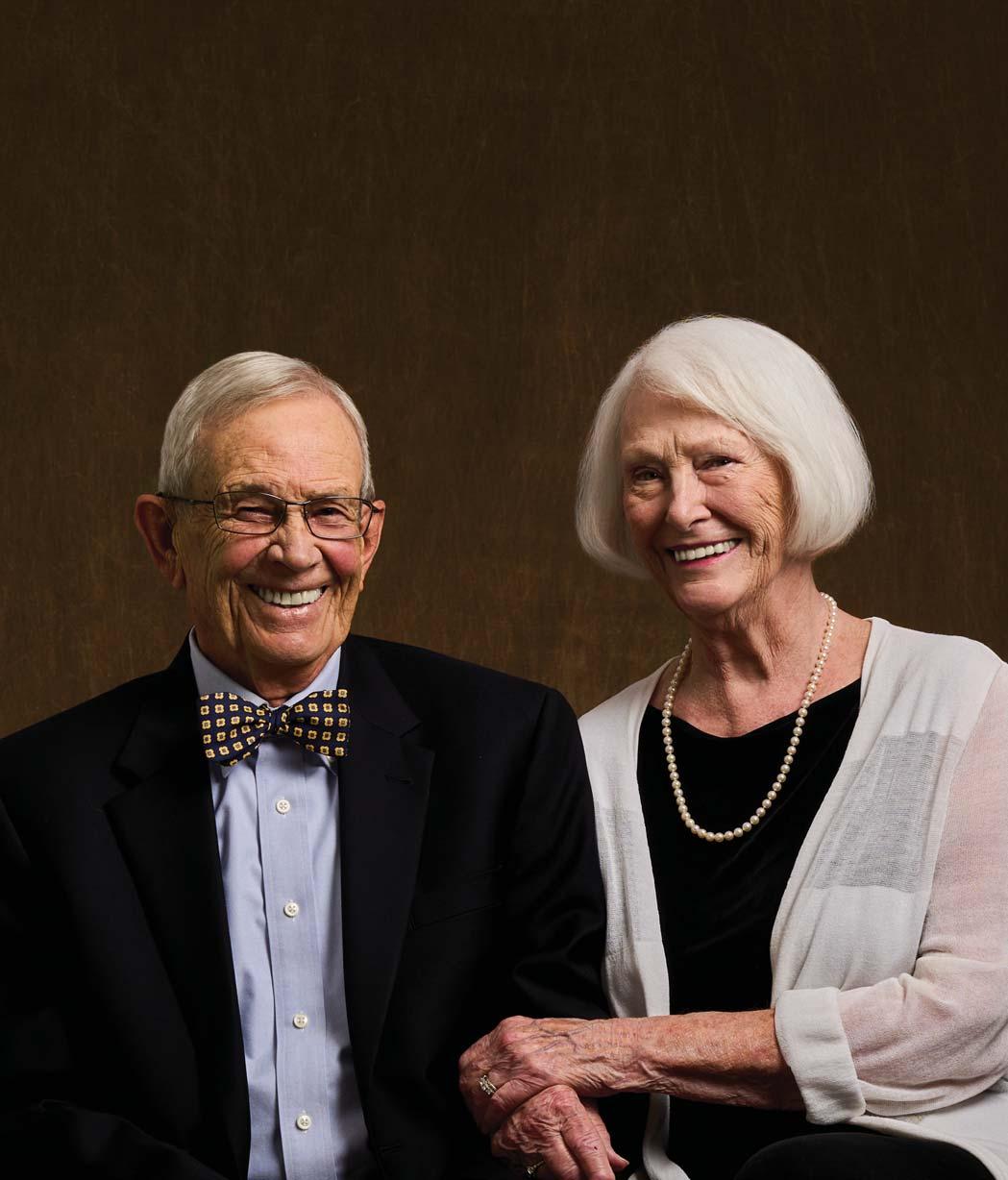













































































































 by DAVIA J. CRUTCHFIELD, Ph.D.
by DAVIA J. CRUTCHFIELD, Ph.D.






 Louise Dieterle Nippert & Louis Nippert Chair
Louise Dieterle Nippert & Louis Nippert Chair


















































































































































 —Dr. Tammy L. Kernodle
—Dr. Tammy L. Kernodle
































